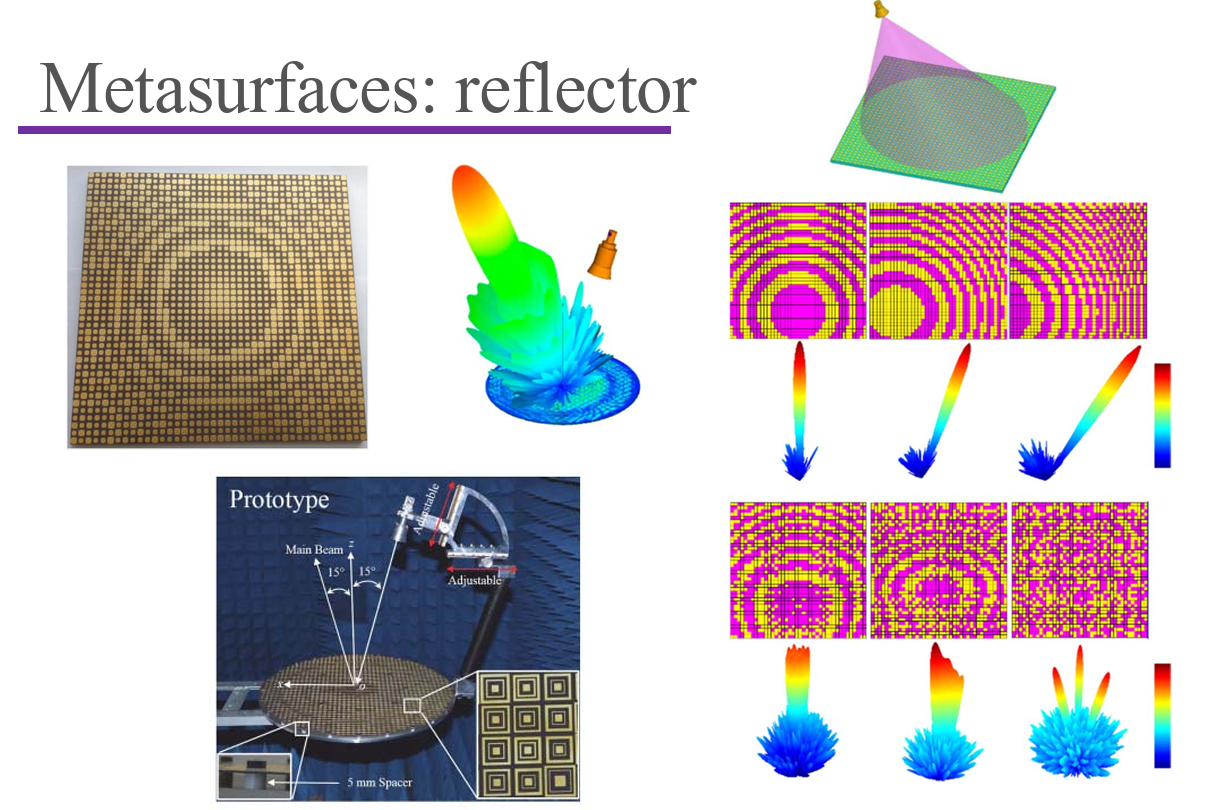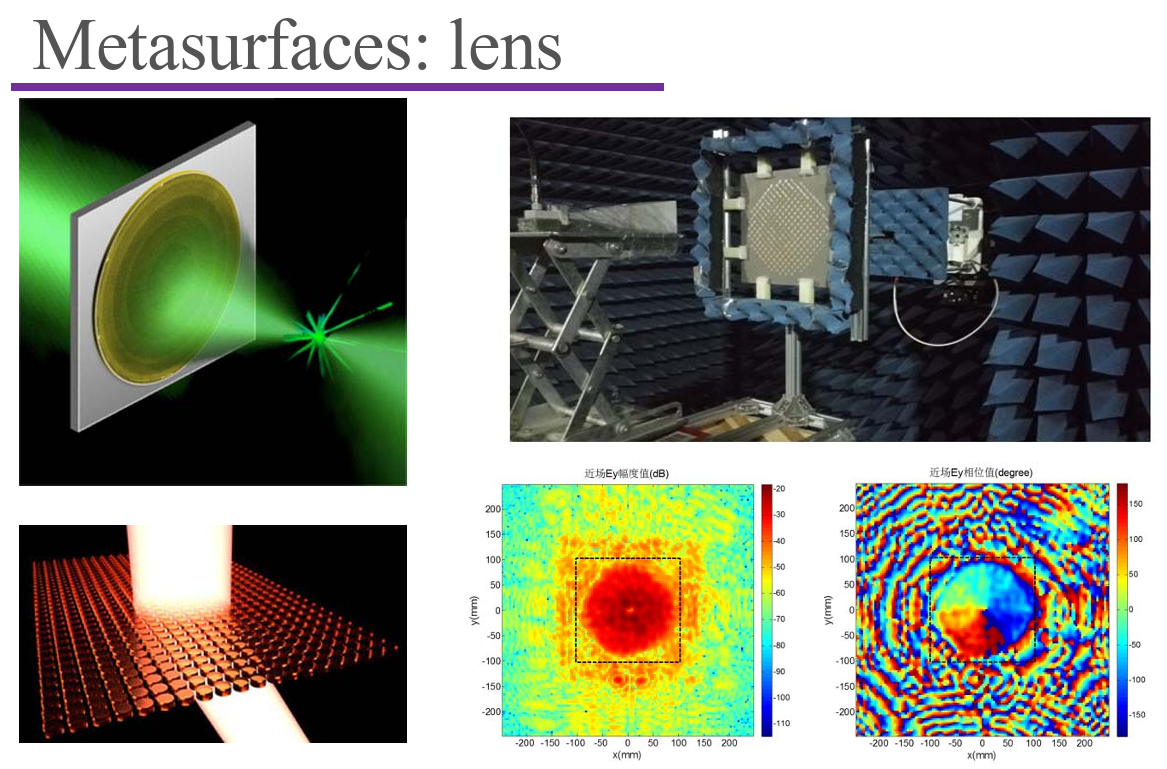Introduction of Antenna
Definition of Antenna
- Transmitter and receiver of EM wave
- Signal from current to wave
- from lumped to distributed
Antenna classifications
- Resonant and non-resonant/leaky/travelling wave
- Antenna number: element, multiple antennas, array
- Shape: wire, loop, slot, patch/microstrip, cavity
- Materials: metallic, dielectric
- Property: wideband, narrow band
- Yagi-Uda, Vivaldi, Cassegrain
- Function: moblie/handset, base station, AiP
Maxwell equations
Auxiliary Potential Functions
Let
Use Lorentz Gauge
Then
Solve ODE:
For (1)
For (2), in arbitrary volume
Finally,
Radiation Parameters
Field Zone
Near field: resonant, field;
Far field: propagation, wave;
Fresnel region: transition;
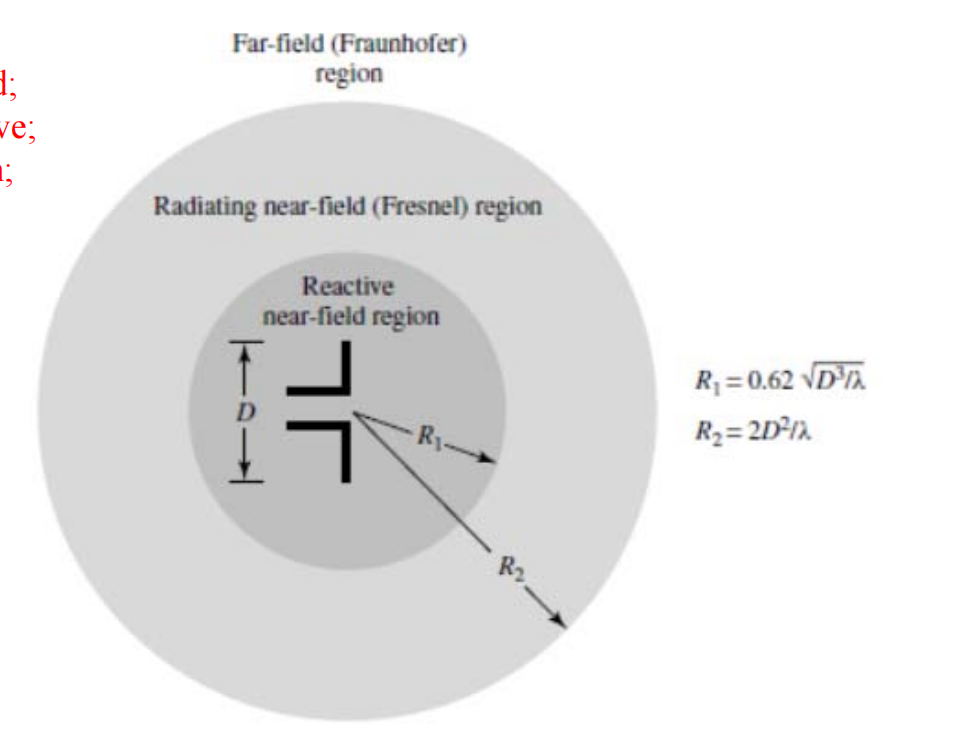
Antenna Parameters
- Radiation patterns
- Radiation Intensity
- Power Density
- Directivity (方向性) and Gain (重要!)
- Polarization
- Effective Aperture(等效口面) and Aperture efficienty(口面效率)
E 面:与电场方向平行的面
H 面:与磁场方向平行的面
Pattern Parameters
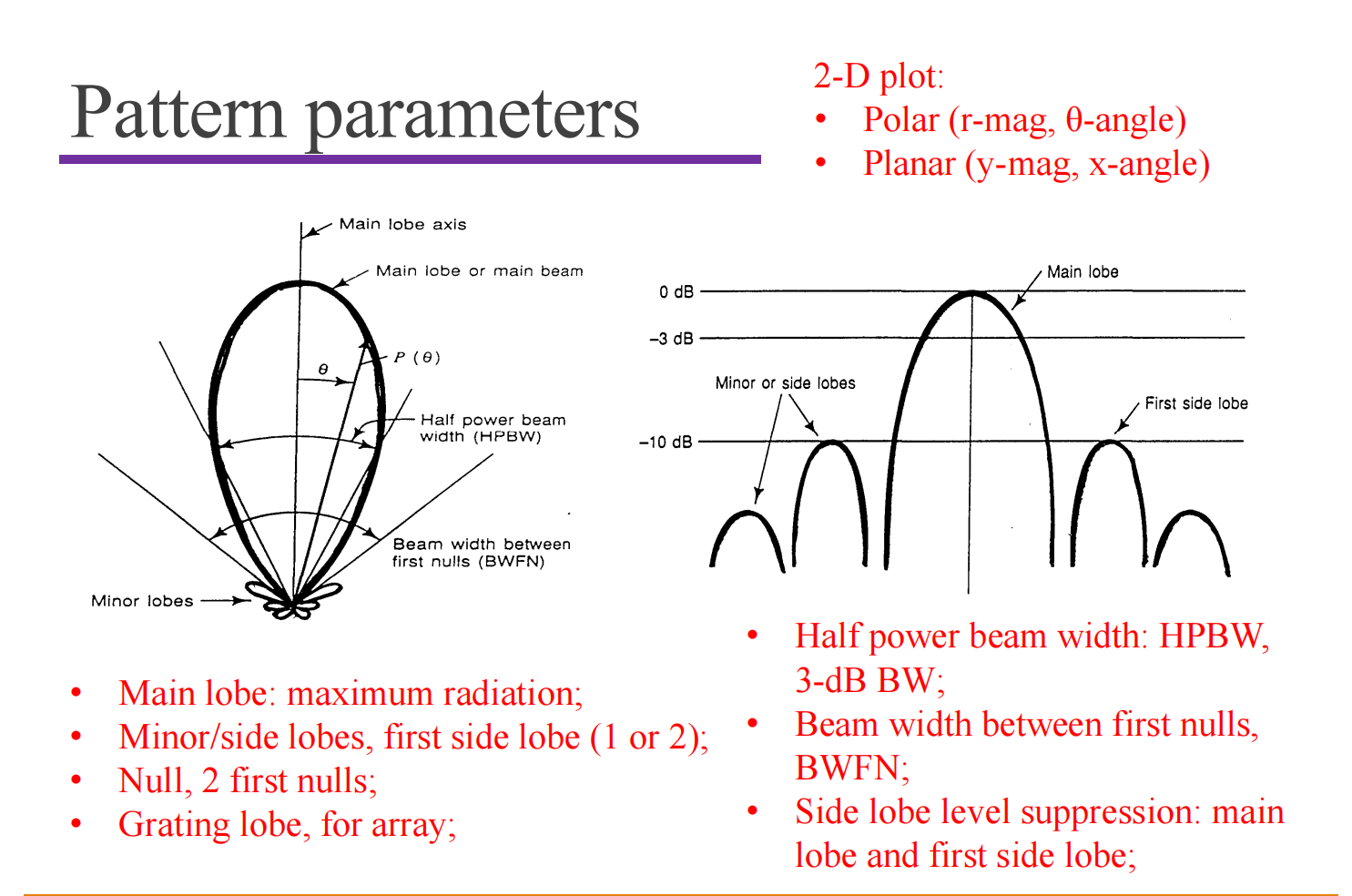
Often use log scale.
Power Density
Instantaneous Poynting vector $\vec S(x, y, z, t)$
Radiation Power Density = Time average Poynting vector $\vec S_{av}(x, y, z)=\frac1T\int_0^T\vec S(x, y, z, t)\mathrm dt = \frac12\text{Re}[\tilde{\vec E} \times \tilde{\vec H^*}]$
Total Radiation Power $P_{rad} = \oiint_S[\tilde{\vec E} \times \tilde{\vec H^*}] \cdot \mathrm d\vec s$
Radiation Intensity
Isotropic 各向同性
Directivity
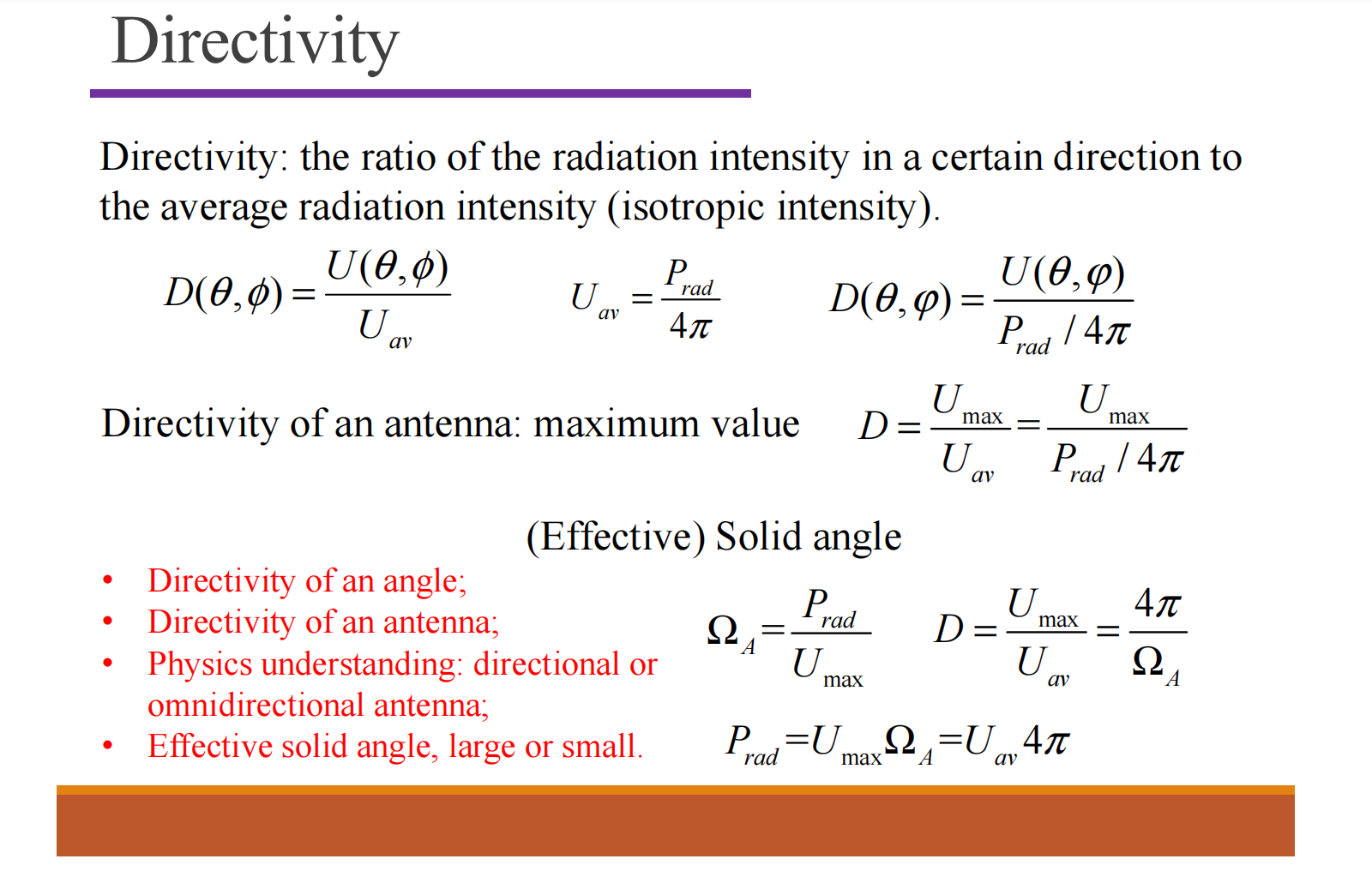
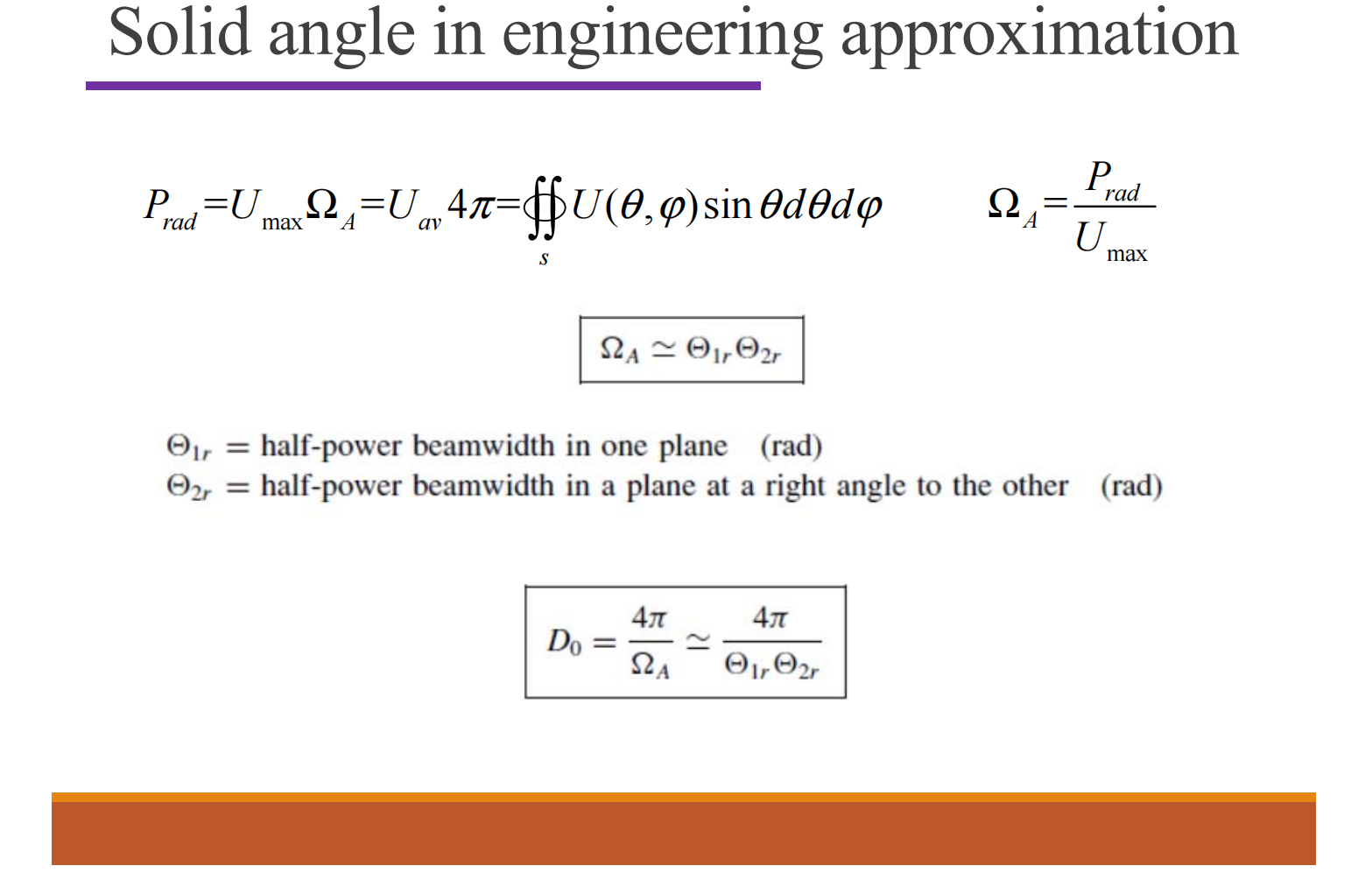
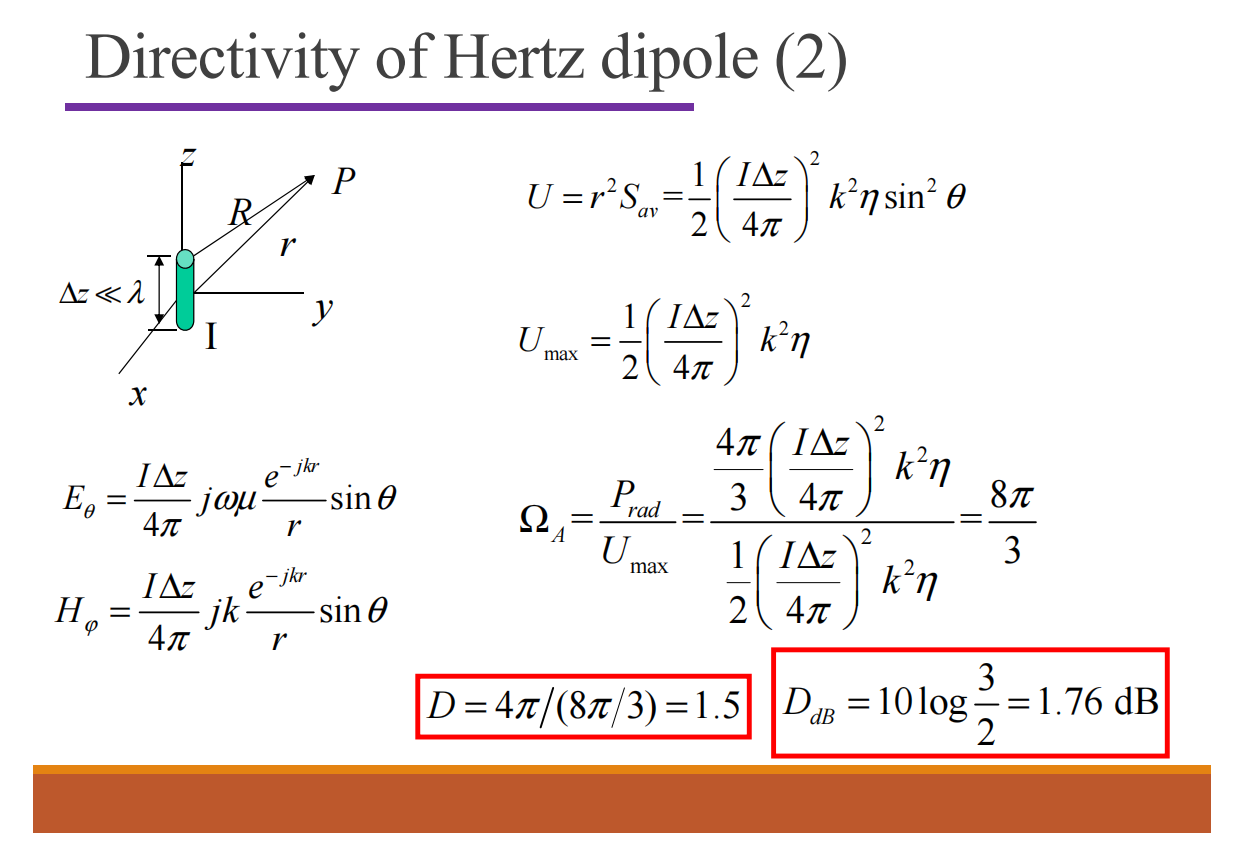
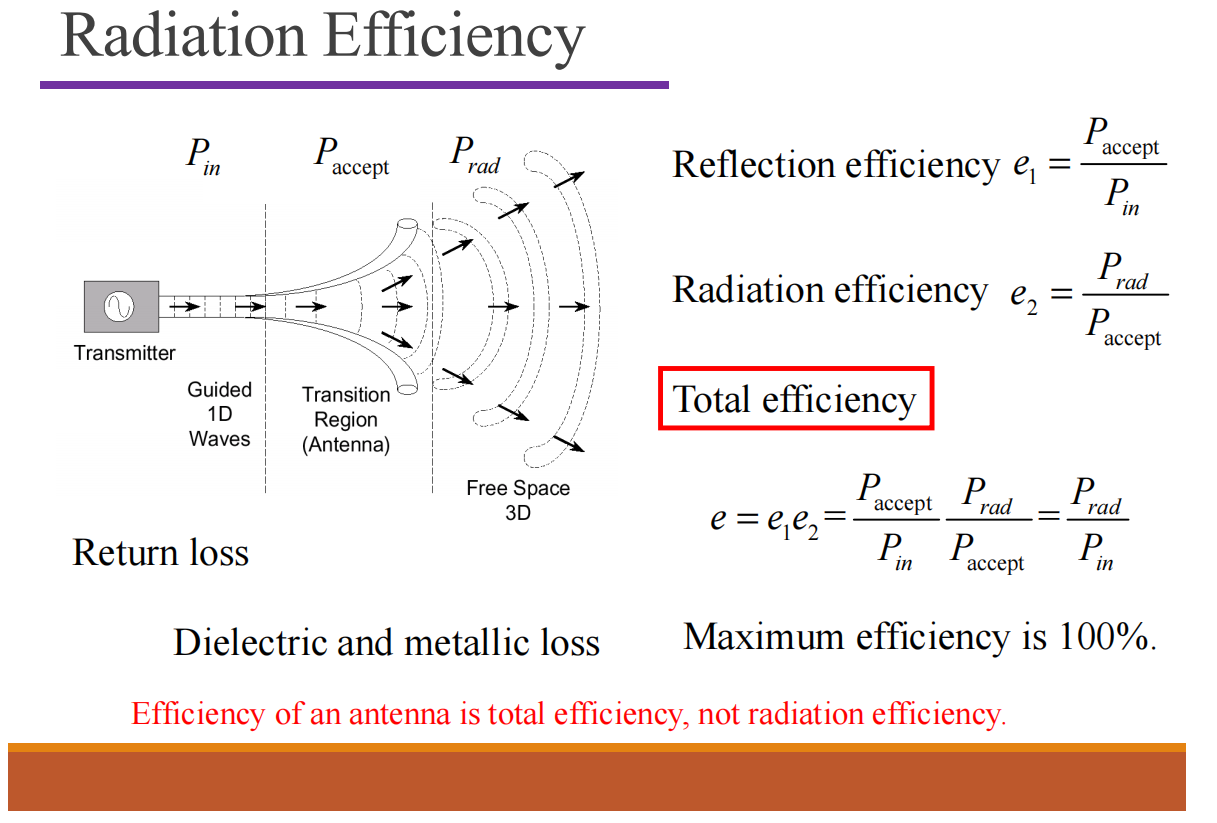
Gain
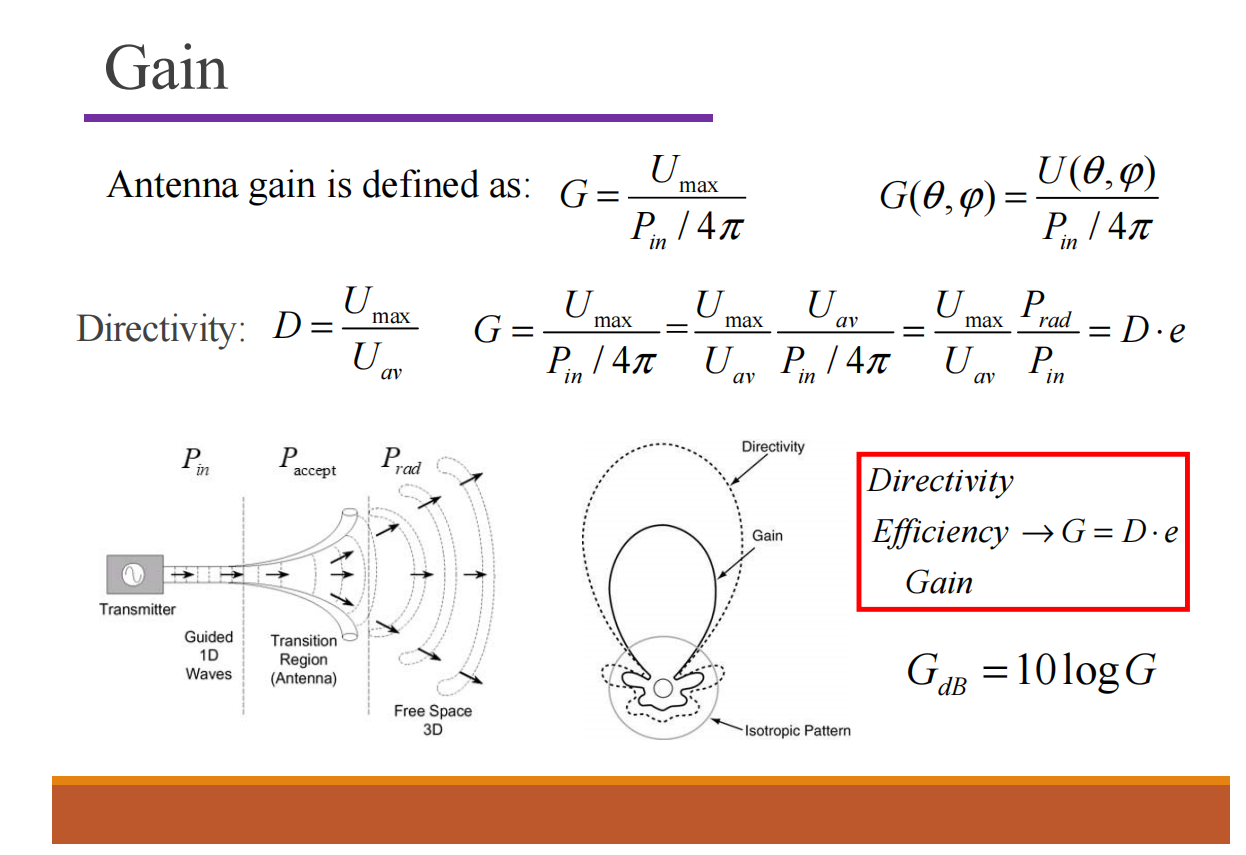
Polarization
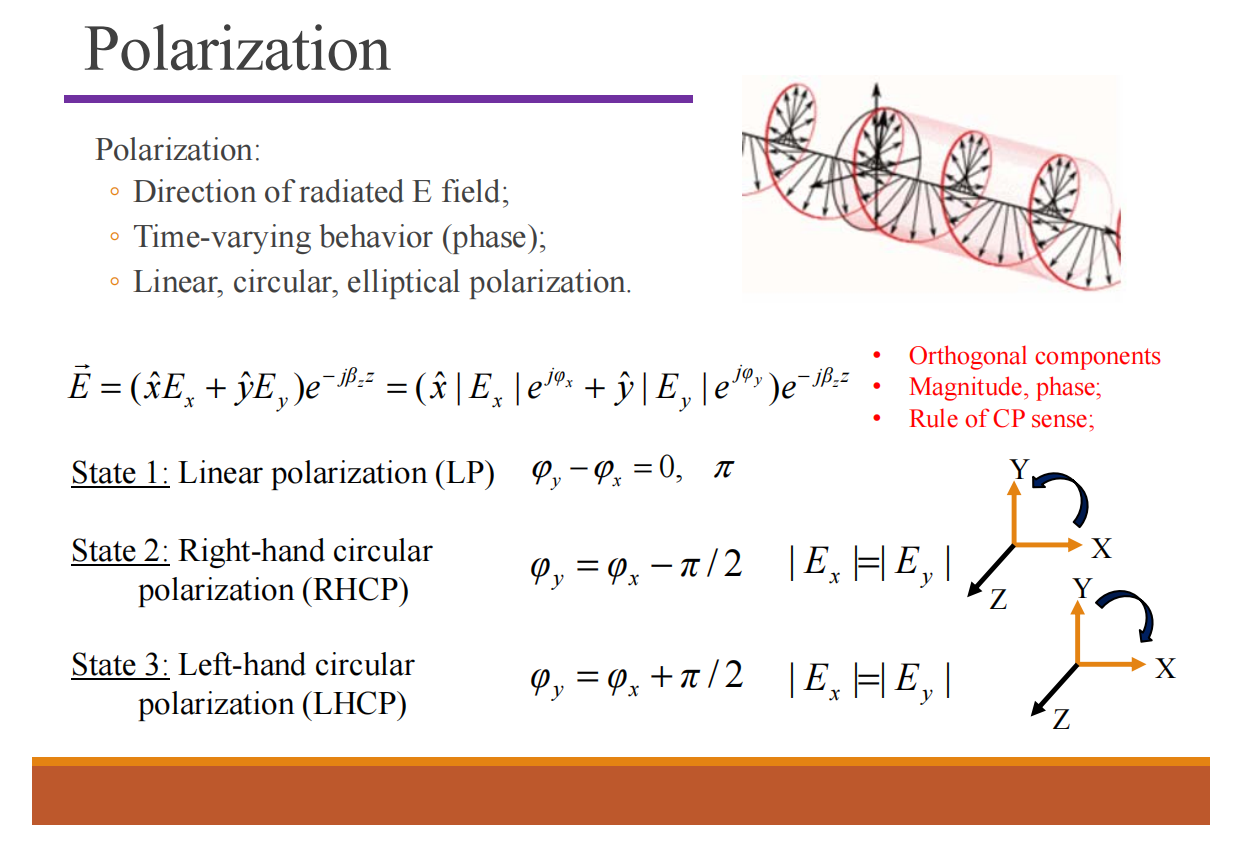
Polarization Mismatch:
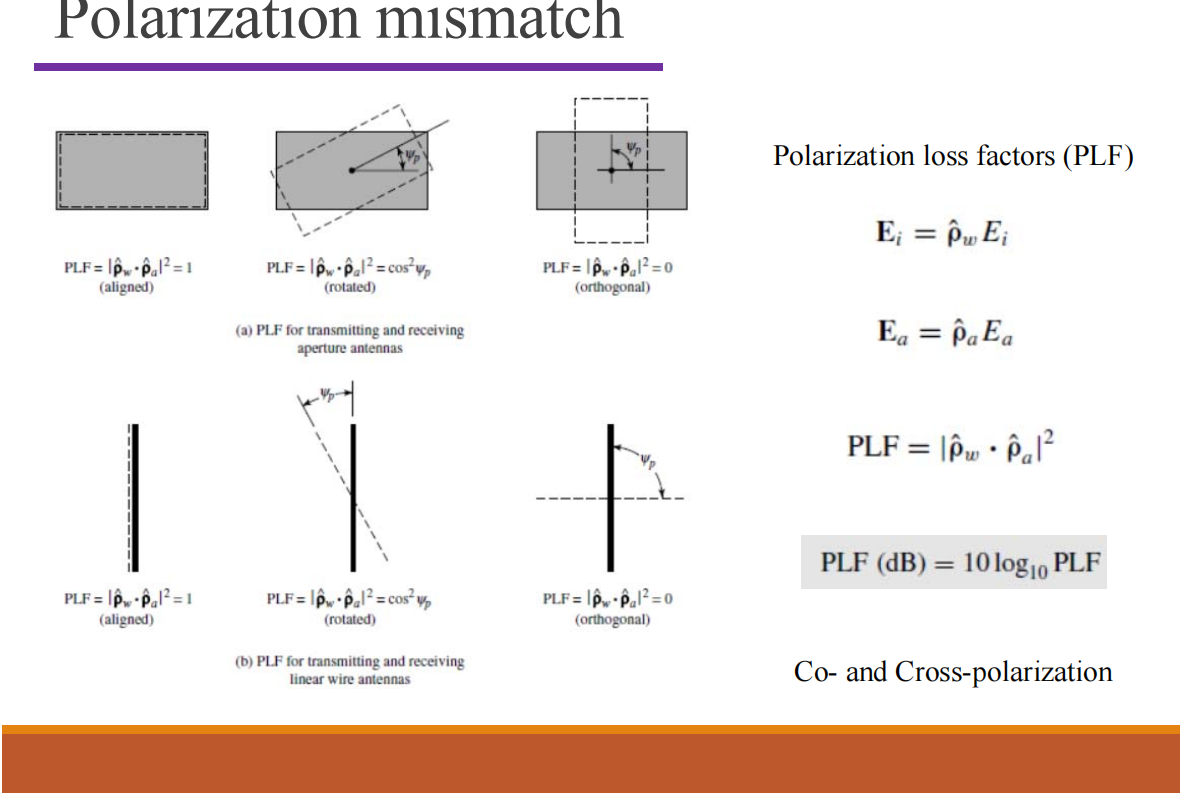
CP
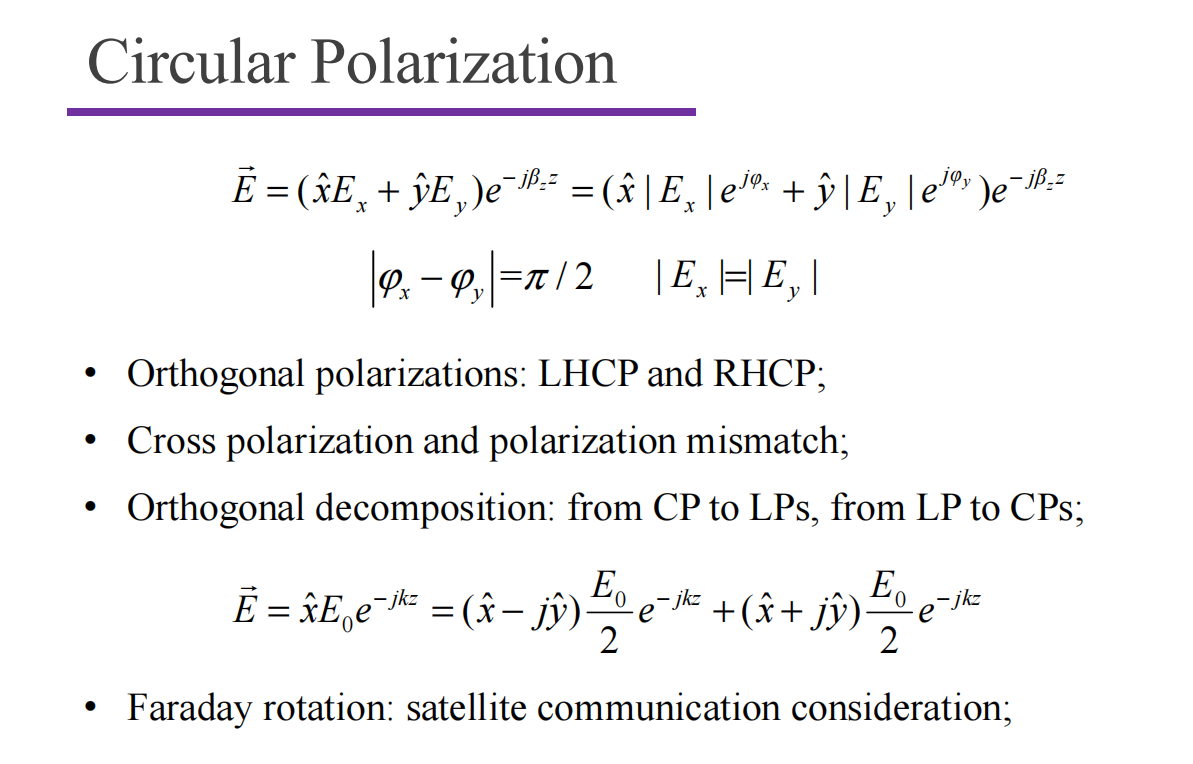
Effective Aperture and Aperture efficiency
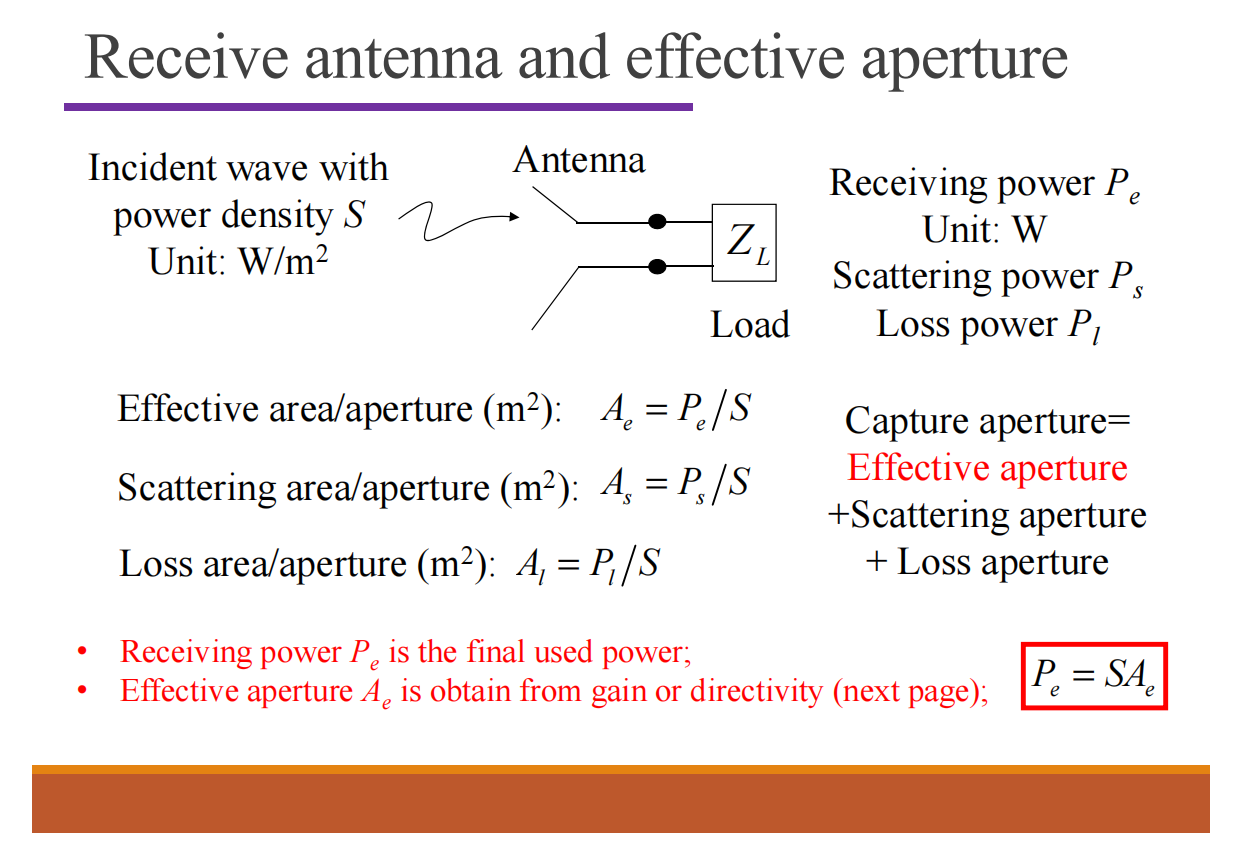
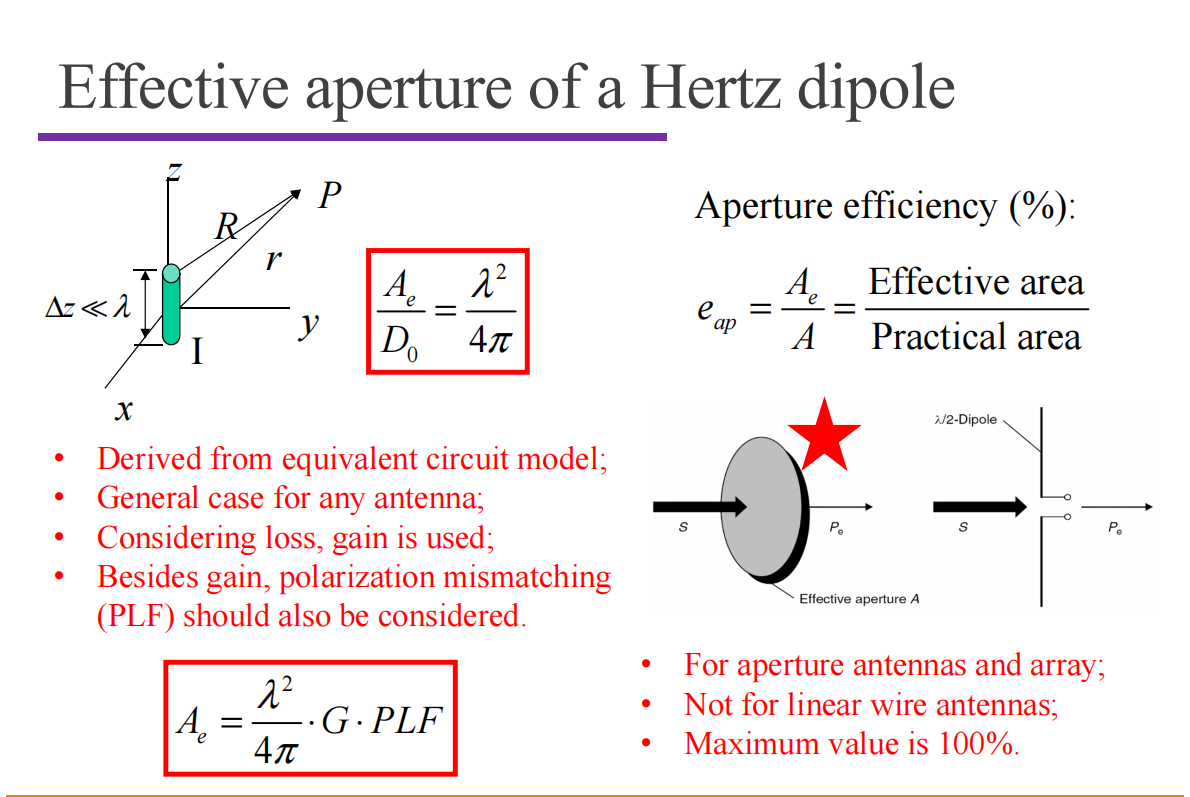
Circuit Parameters
Input impedance
Input impedance definition:
- the impedance presented by an antenna at its terminals
- the ratio of the voltage to current at its terminals
- the ratio of the electric to magnetic fields at its terminals
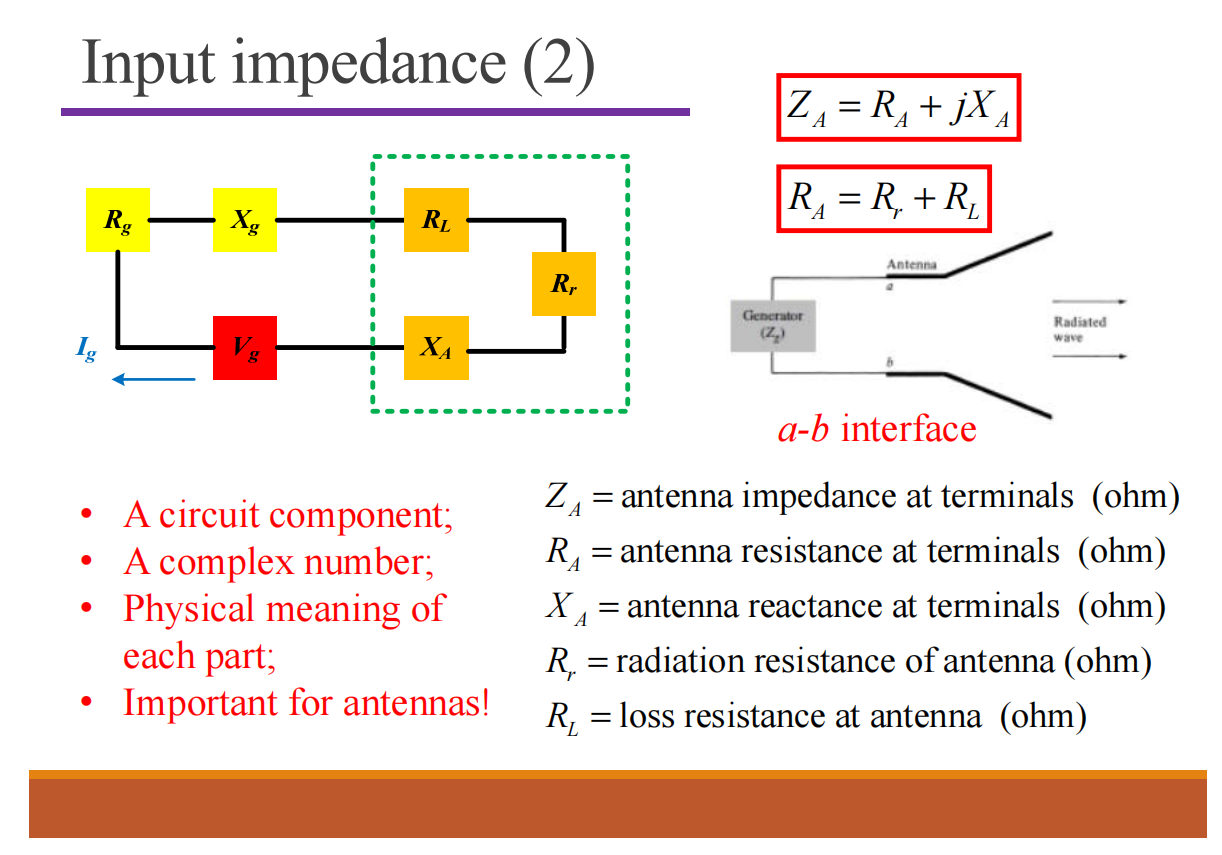
Conjugate Matching
Mismatching
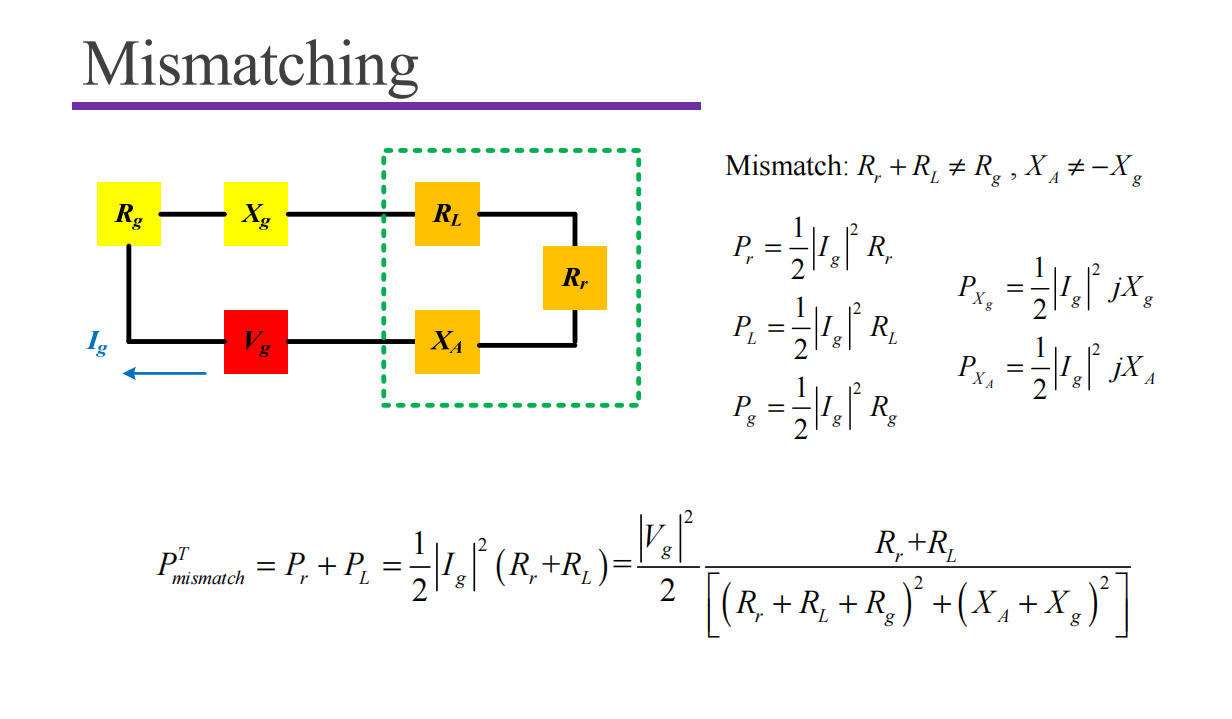
Radiation Resistance
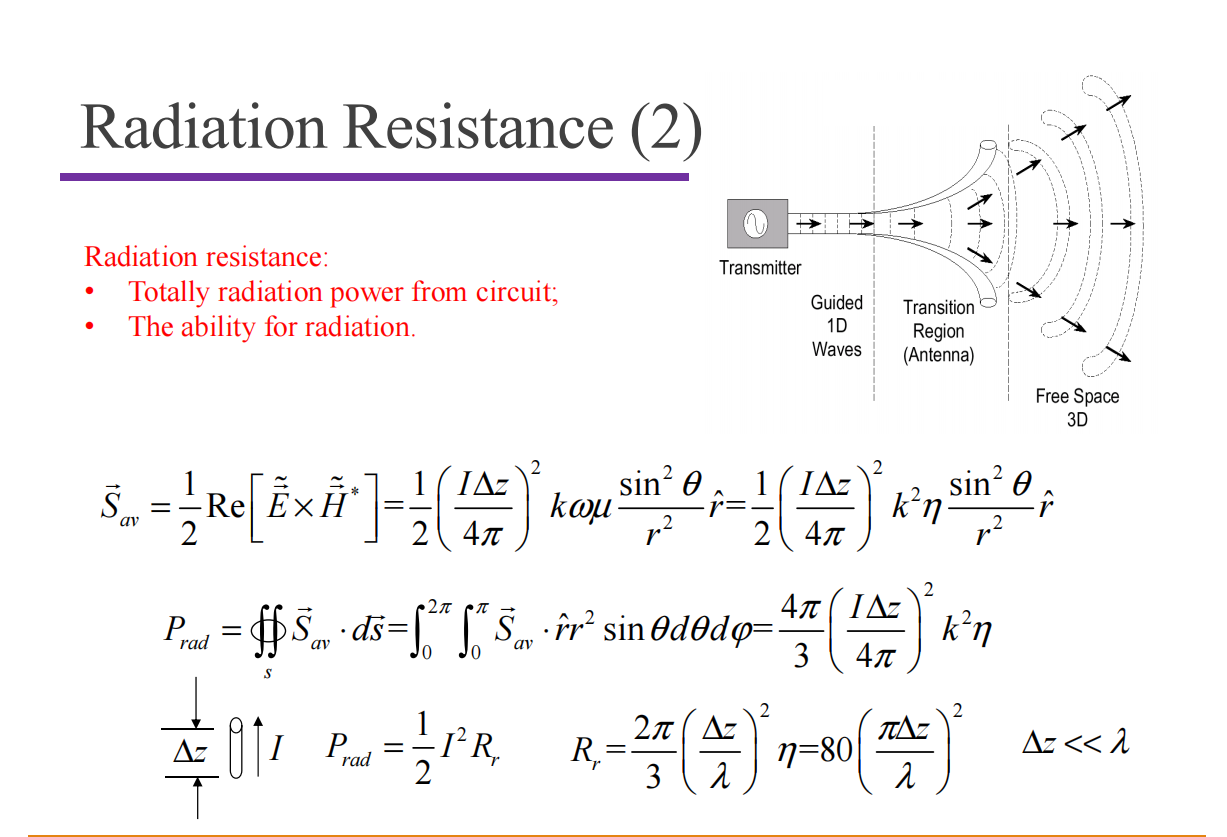
Scattering Parameters
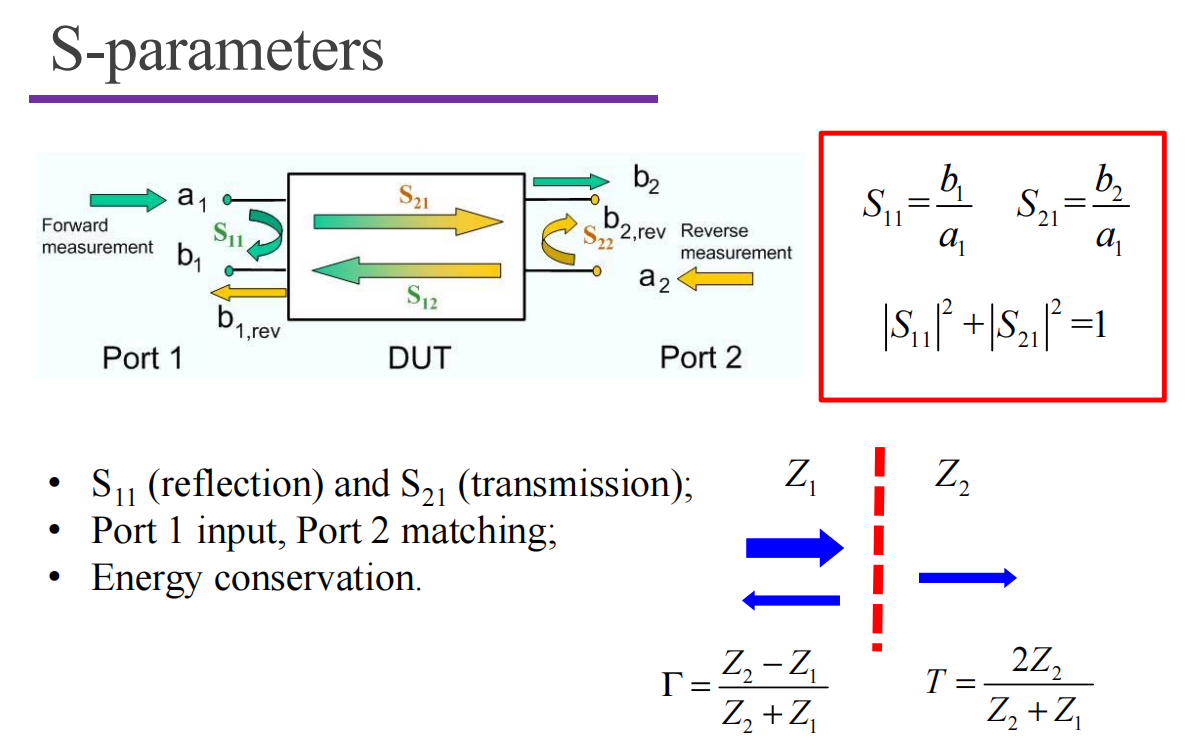
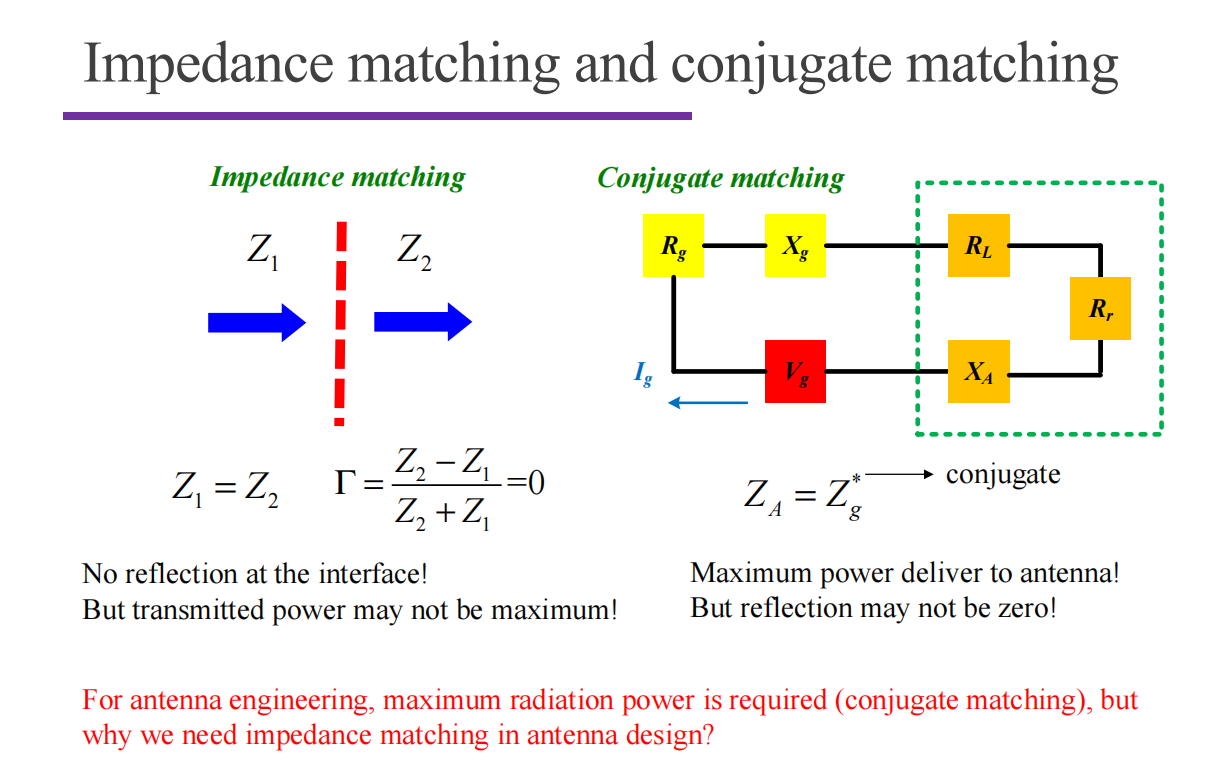
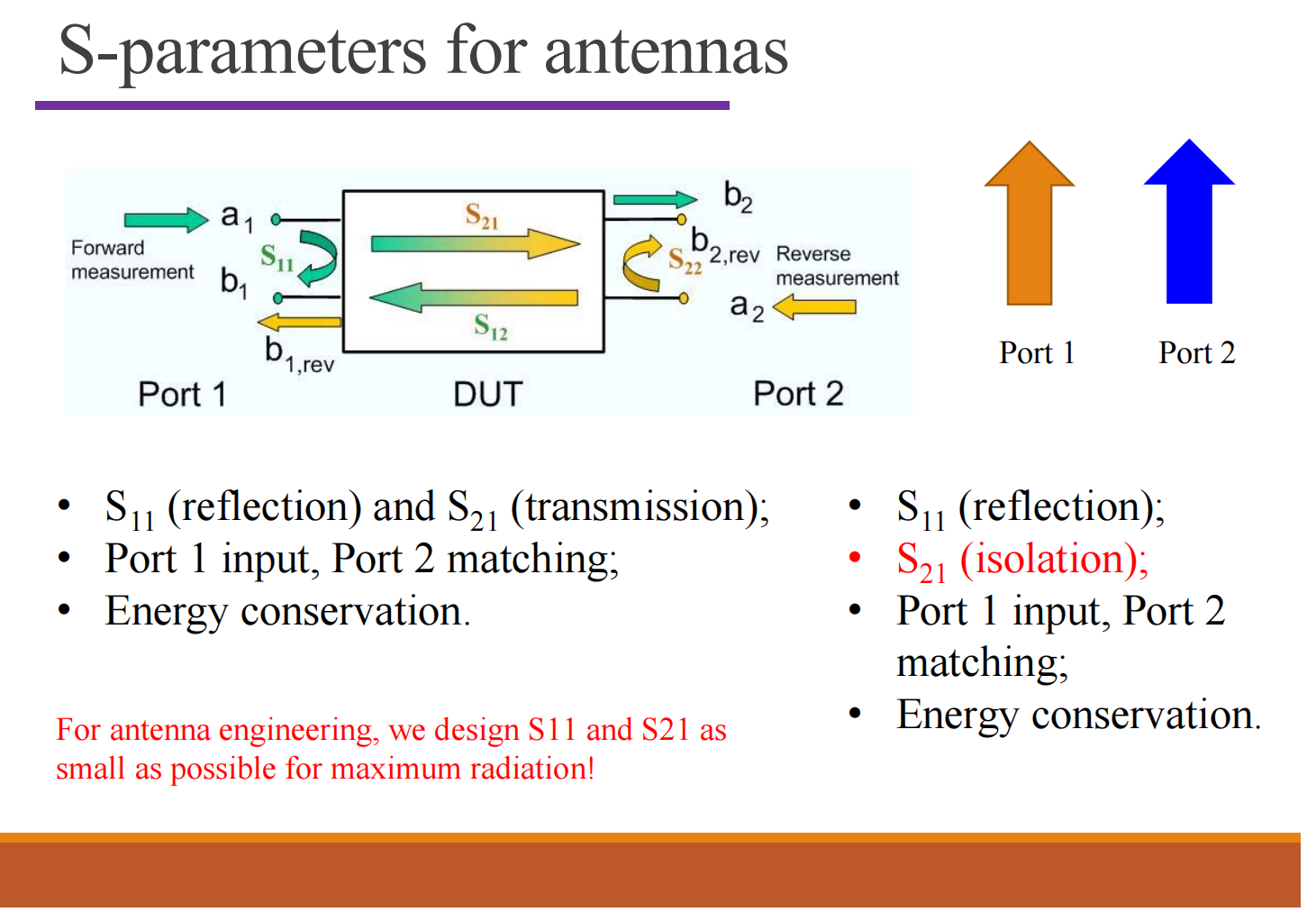
二端口网络通常用于描述二天线问题。$S_{11}$表示天线1的反射,$S_{21}$表示天线1到天线2的耦合,均不利于信号的传播。我们希望让$1 - S_{11}^2 - S_{21}^2$尽可能大。
Link Calculation
Friis’s Equation
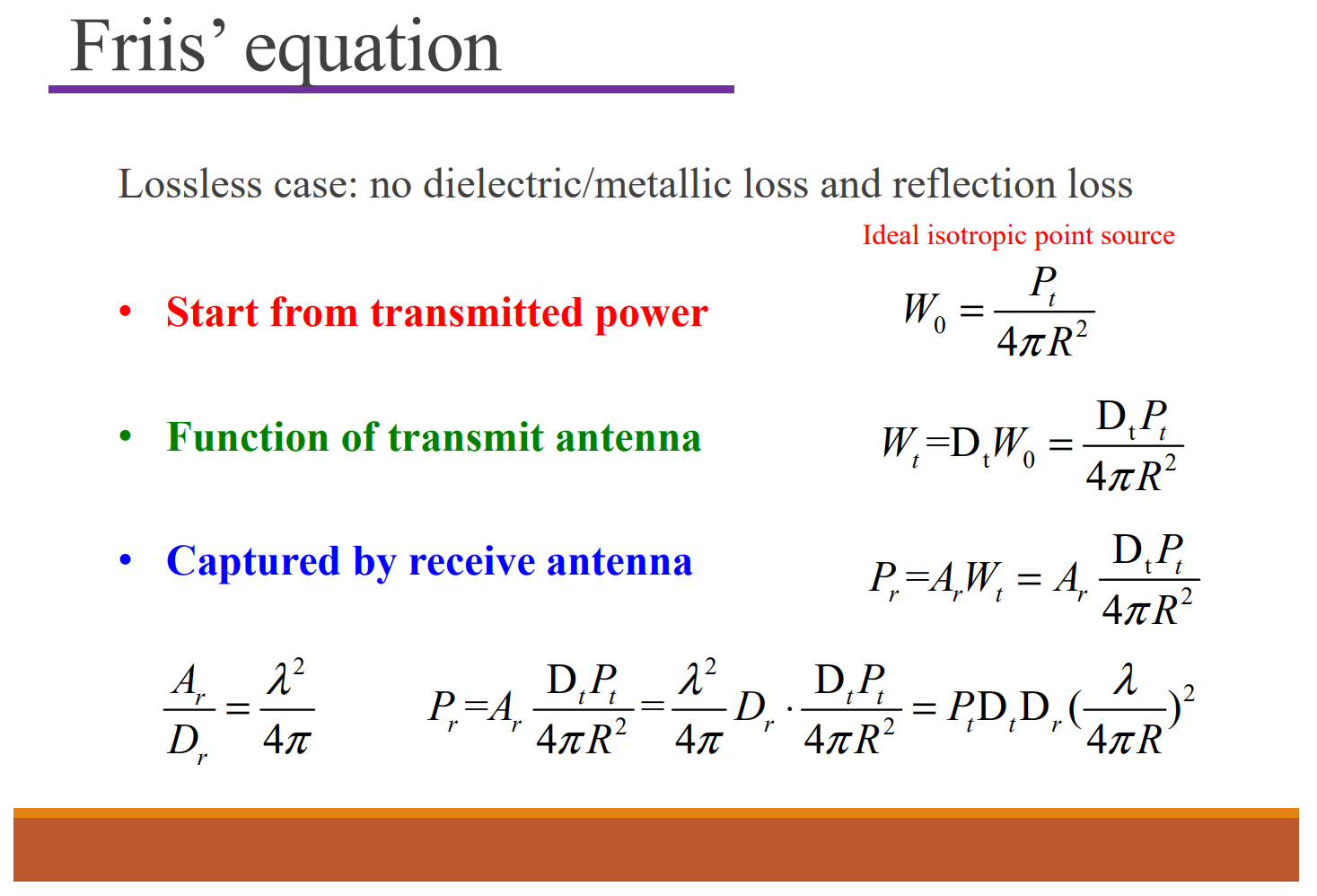
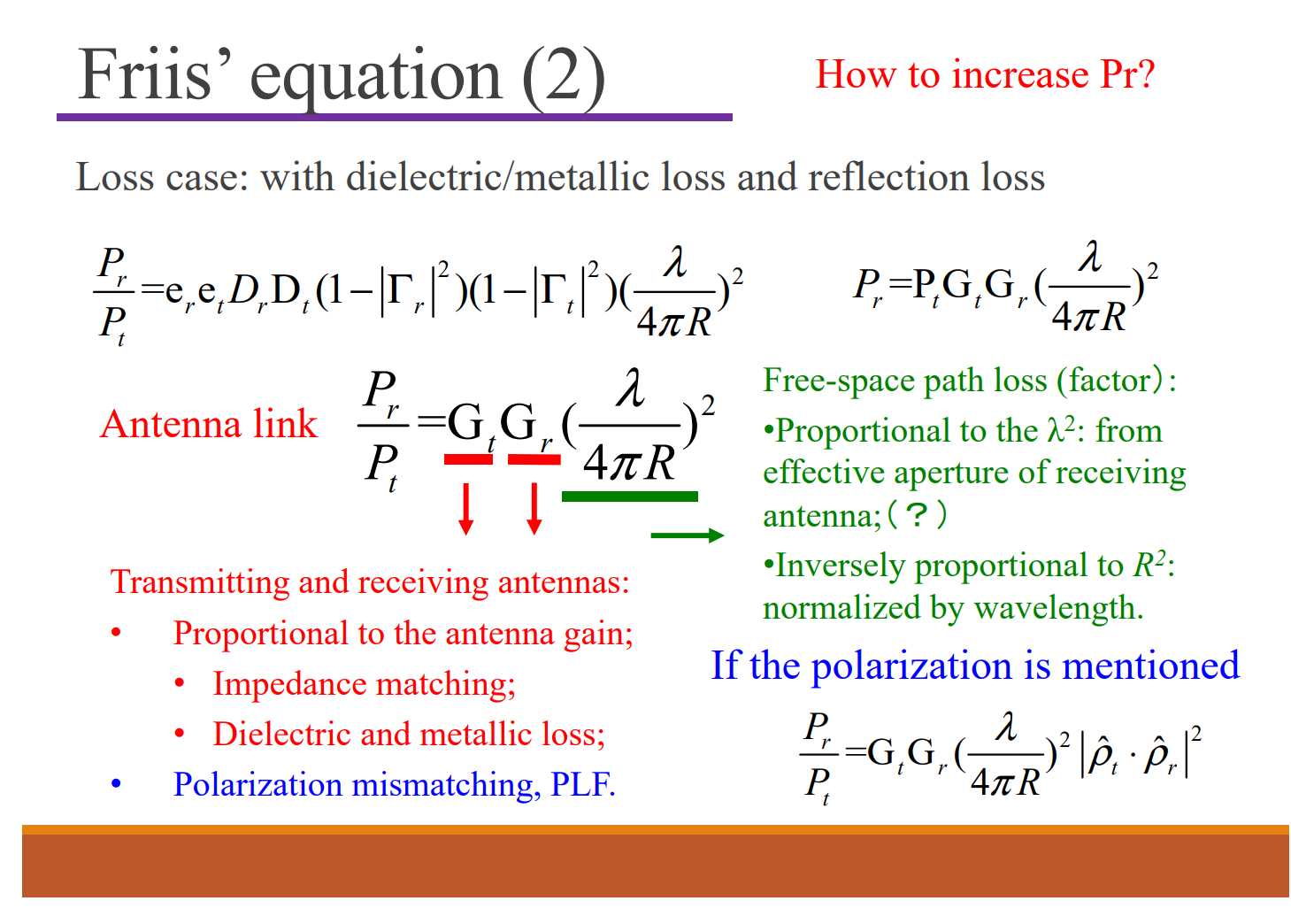
EIRP
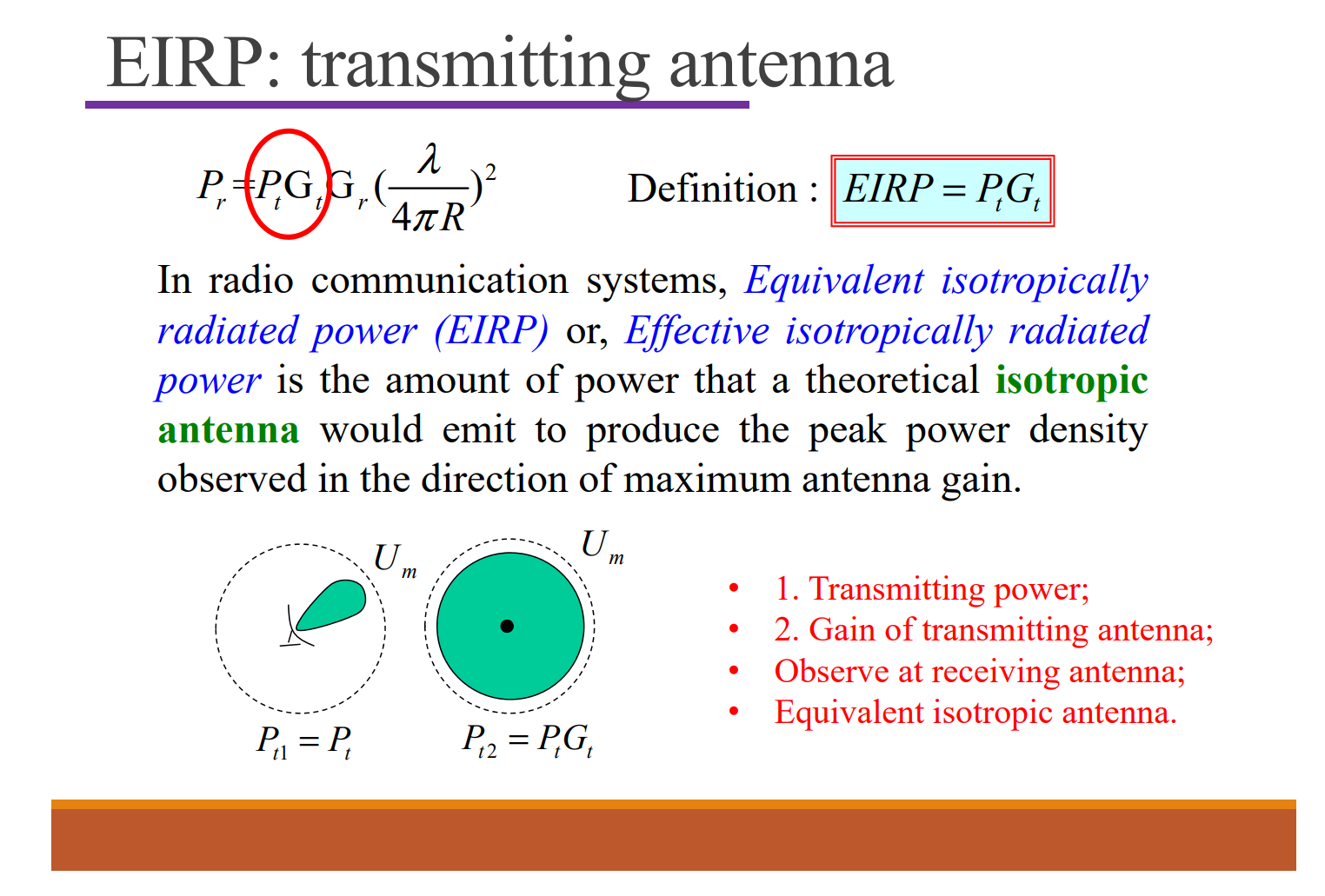
赫兹偶极子的辐射电阻: $80\pi^2(\frac{\Delta z}{\lambda})^2$,方向性 $\frac{2}{3}$。
Radar Equation
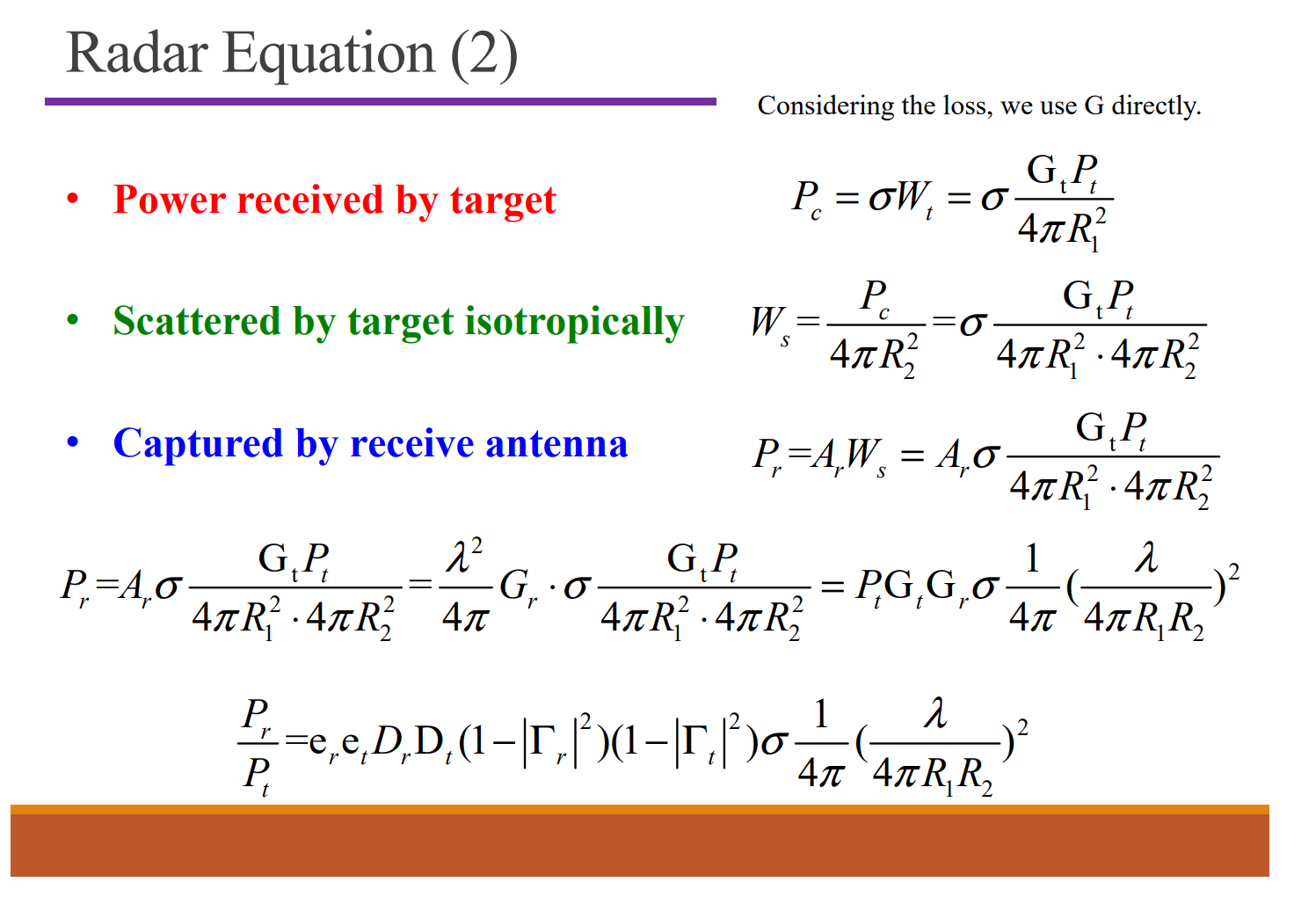
RCS(Radar cross section)
RCS (σ) of a radar target is an effective area that intercepts the transmitted radar power and then
scatters that power isotropically back to the radar receiver.
- $W_i$, $W_o$ and $R$ are known;
- $\sigma$ converges.
Antenna Theorems
In radar:
Equivalent circuit model
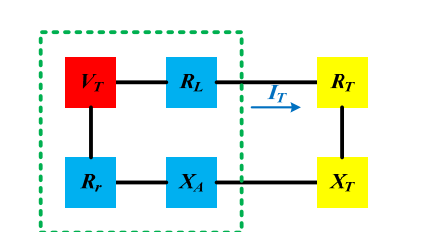
$R_r$ :接收天线反射会释放能量。
Duality Theorem
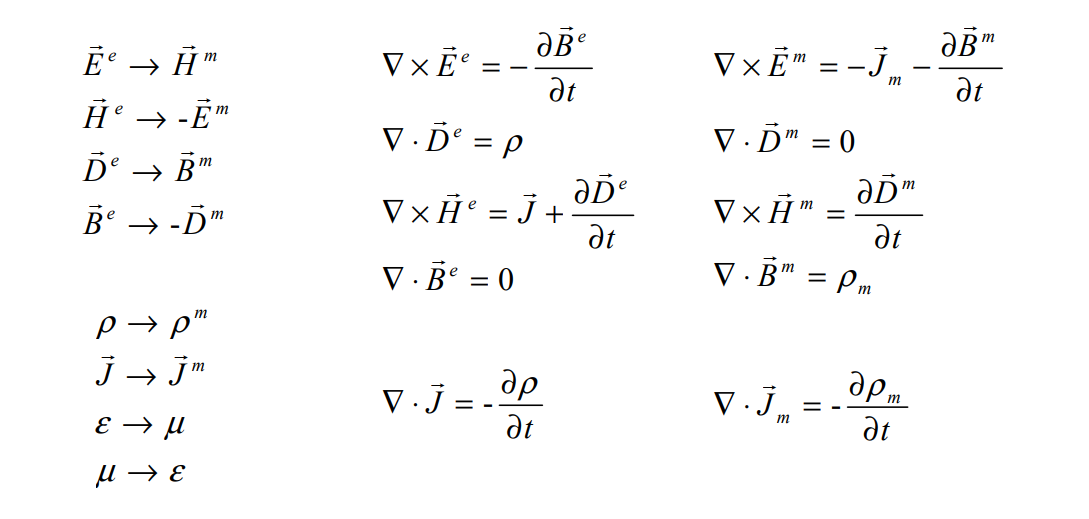
电 -> 磁,不变号;
磁 -> 电,变号。
Image Theorem
PEC:完美电导体
PMC:完美磁导体
定理条件:
- PEC or PMC
- Infinite boundary
PEC
PMC
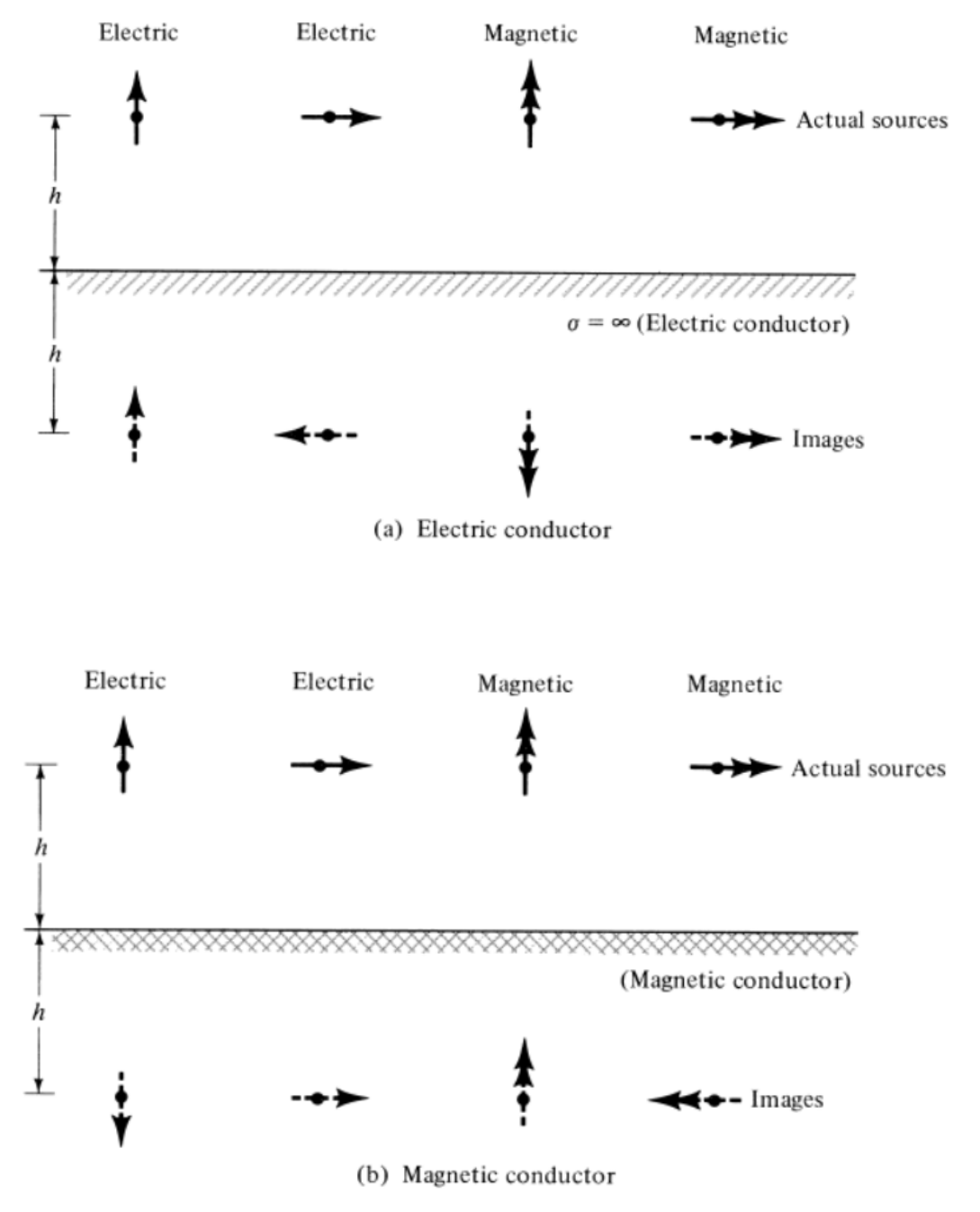
Note:
- Satisfied with boundary condition;
- Mirror source instead of PEC or PMC infinite boundary;
- Array: source and mirror source;
- Current loop: upper inside, lower outside.
Reciprocity Theorem
In radiation pattern,

Transmitting pattern of antenna “a”
Receiving pattern of ante
Then,
Lorentz Reciprocity Theorem
Far field:
Reaction: Reciprocity theorem: $\langle 1 2\rangle=\langle 2,1\rangle$
If only current-source
Non-reciprocity
Electron plasma (non-reciprocal media)
Huygen’s Principle
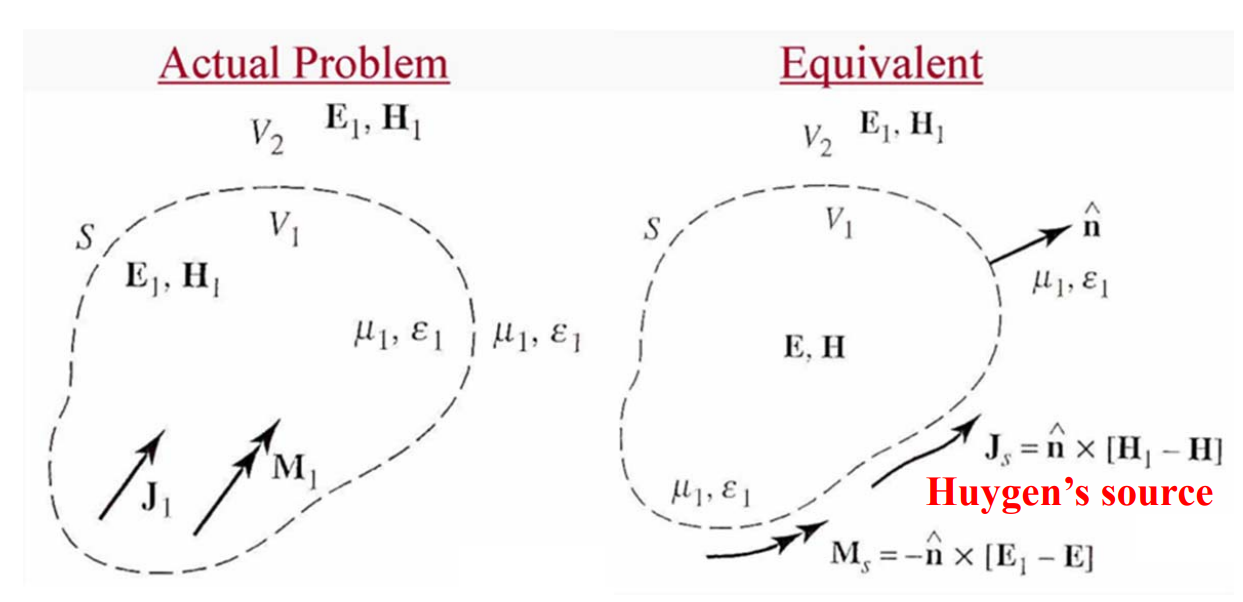
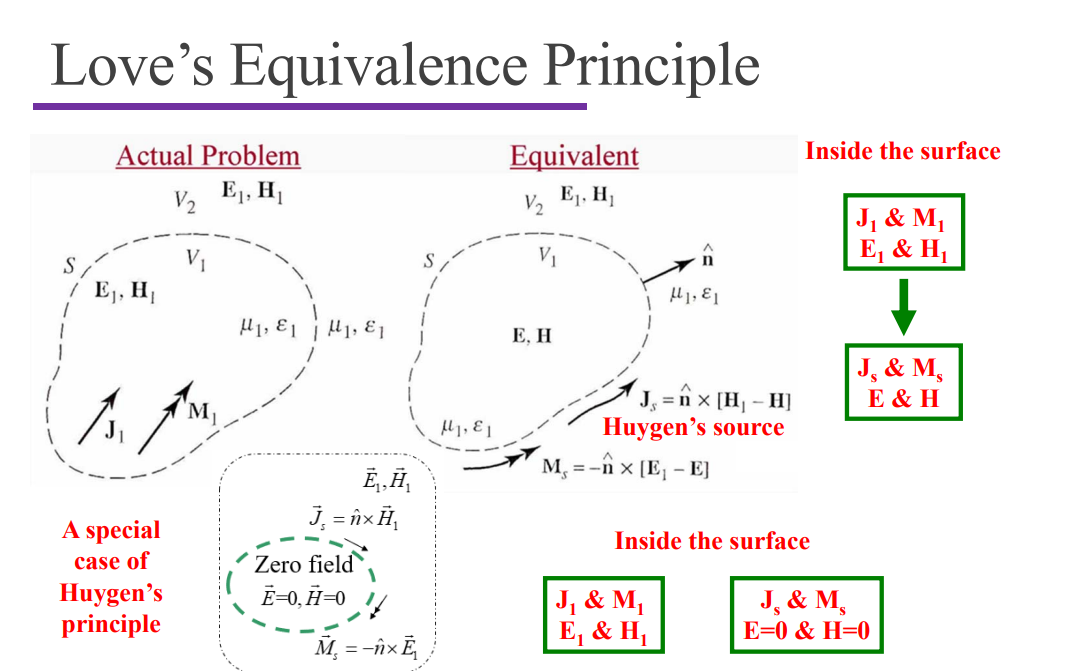
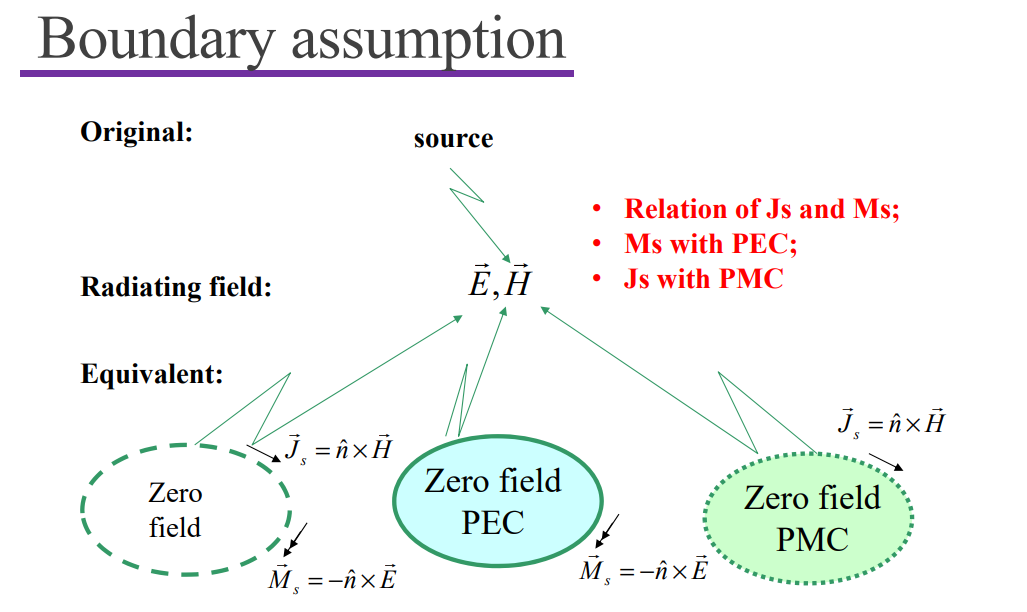
Dipole Antenna
Hertz Dipole
- Infinite short length;
- Uniform distribution;
- Infinite small radius;
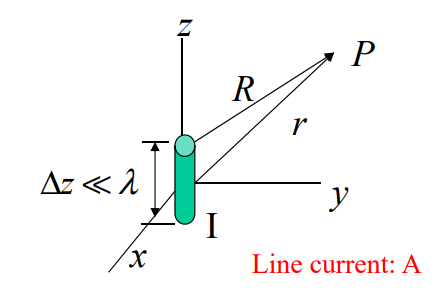
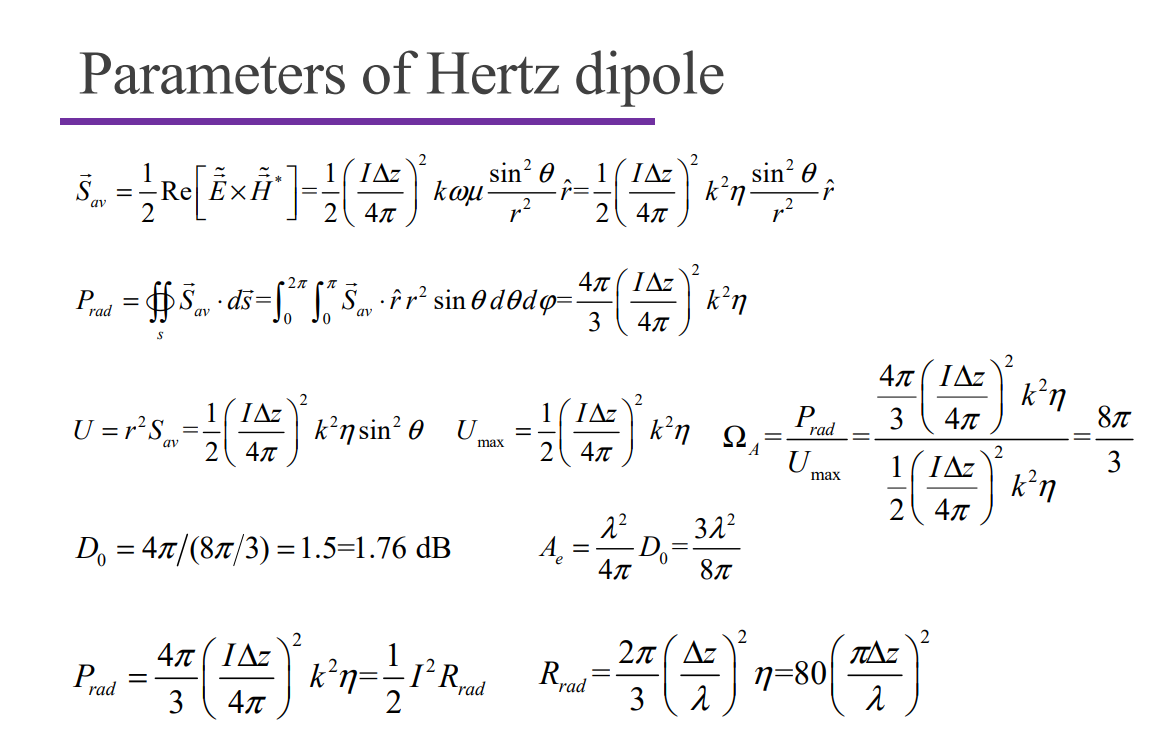
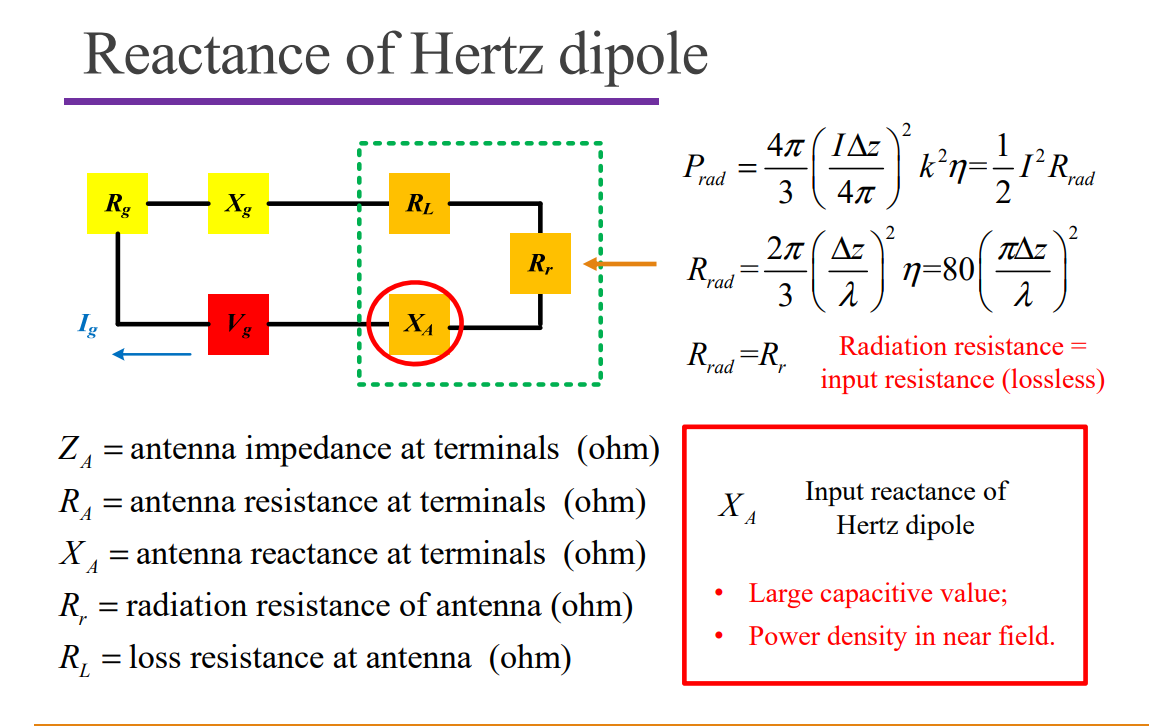
Finite Length Dipole
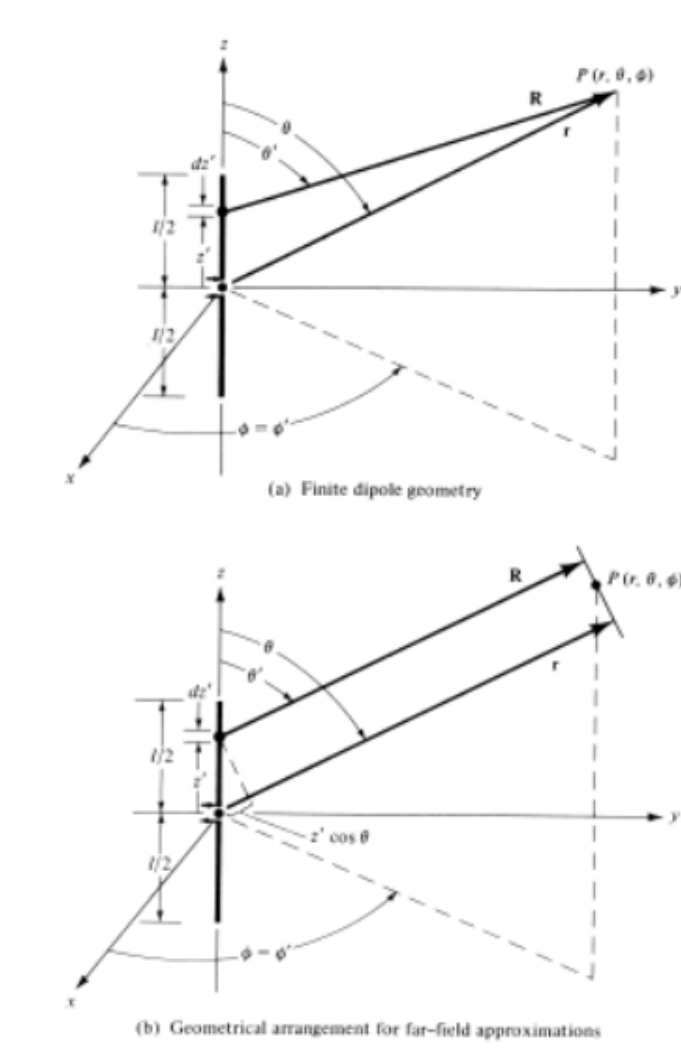
R is the distance between observer and source,
r is the distance between observer and origin.
Small Dipole
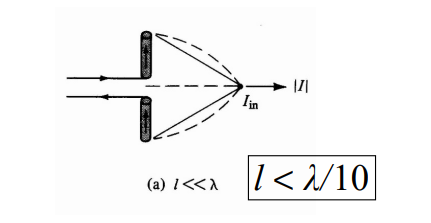
Then
Note: half of the ideal infinitesima(Hertz) dipole
General Case
Beam width: change with length.
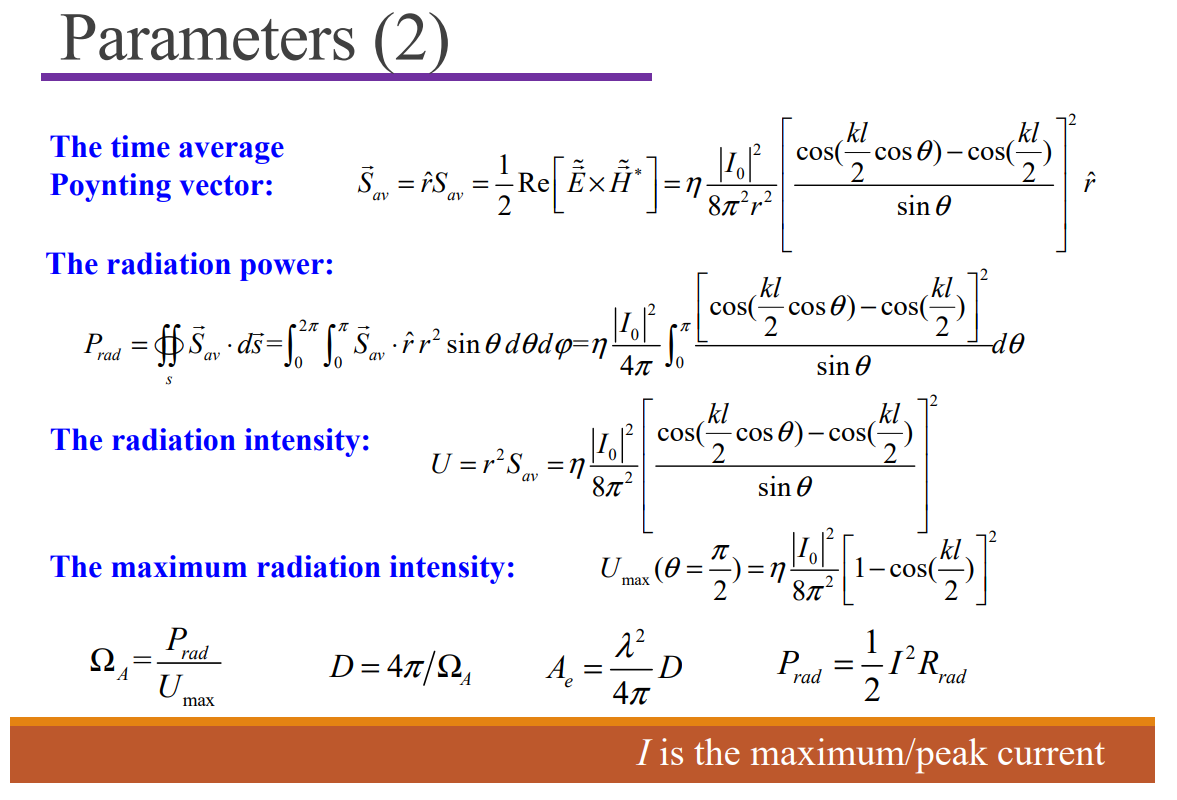
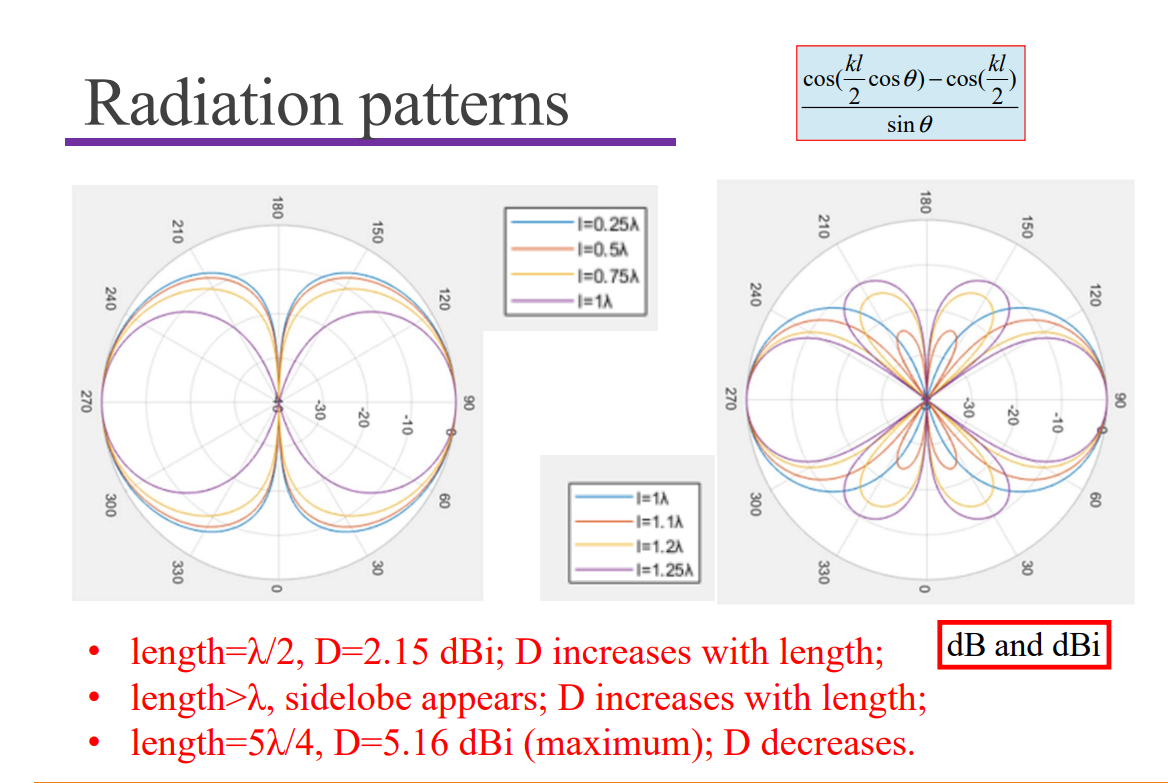
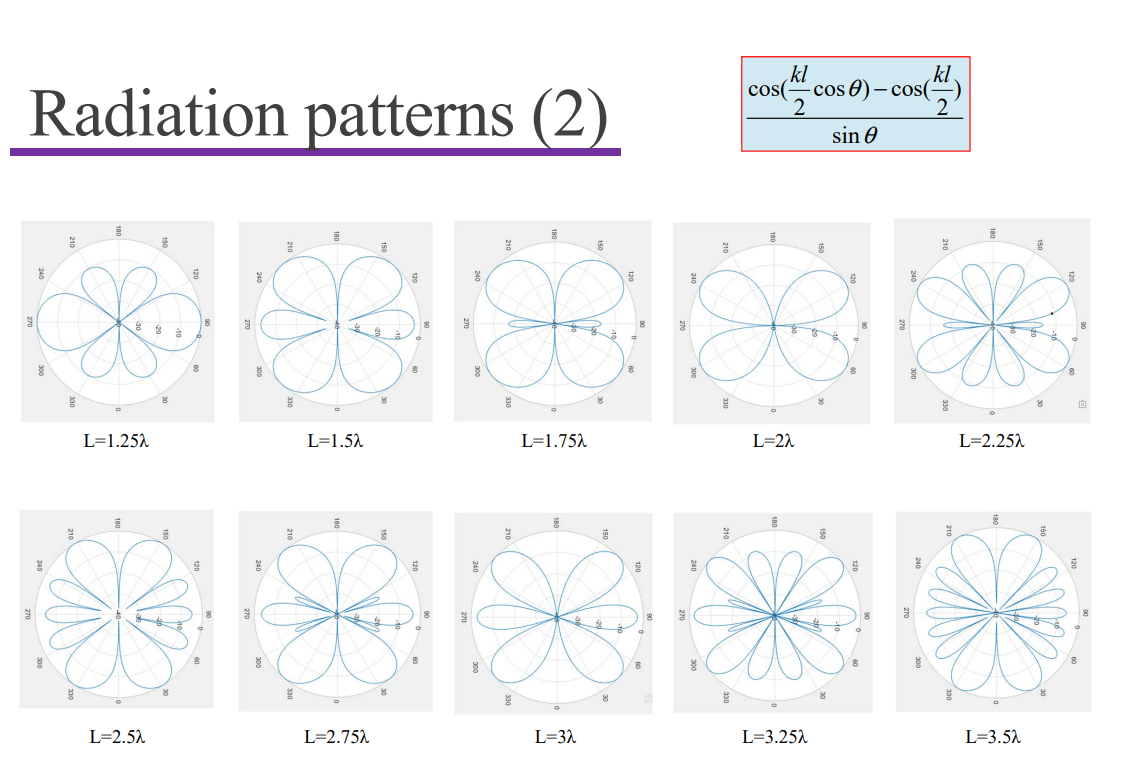
Input Impedance
Input resistance $R_r$:
- calculated by E and H at port;
- take the real part (lossless).
Radiation resistance $R_{rad}$:
- calculated by E and H at far-field;
I is the maximum/peak current.
General Relation:
Half-wavelength dipole
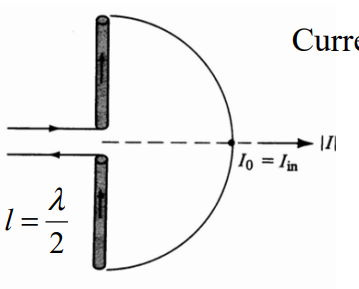
Edge capacitive effect:
- Terminal (open-end)
current is not ideal zero; - Effective length is longer
Applications
Wideband Antennas
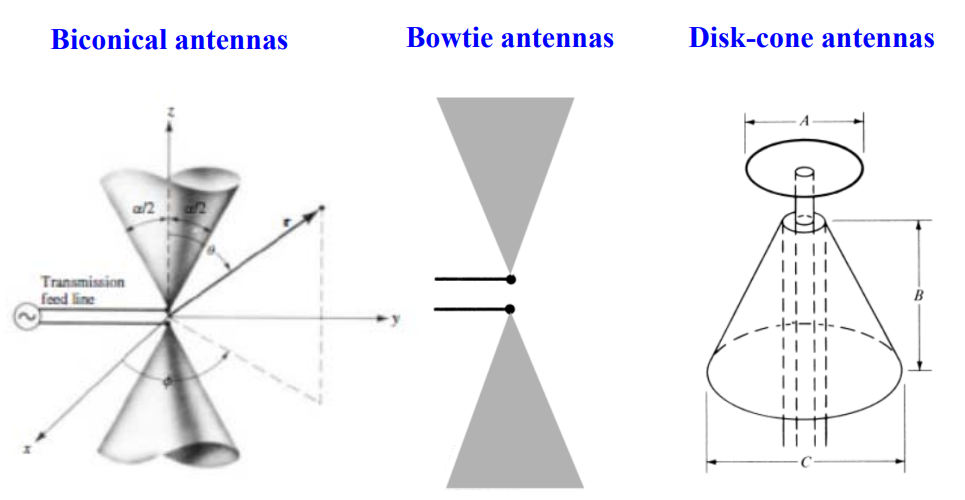
Folded Dipole
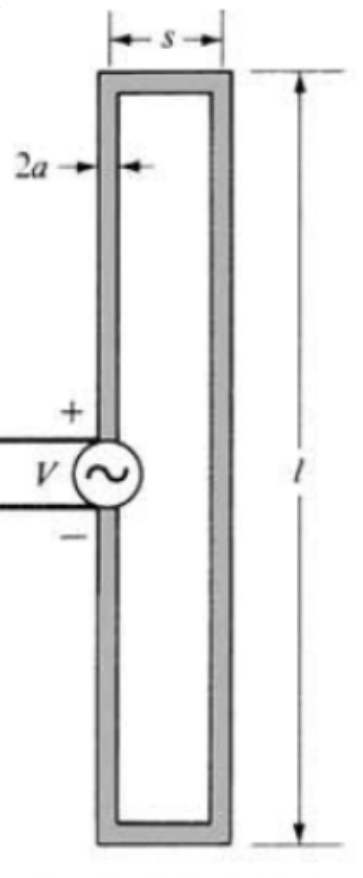
Increase Input Impedance
Log-periodic & Yagi-Uda antenna
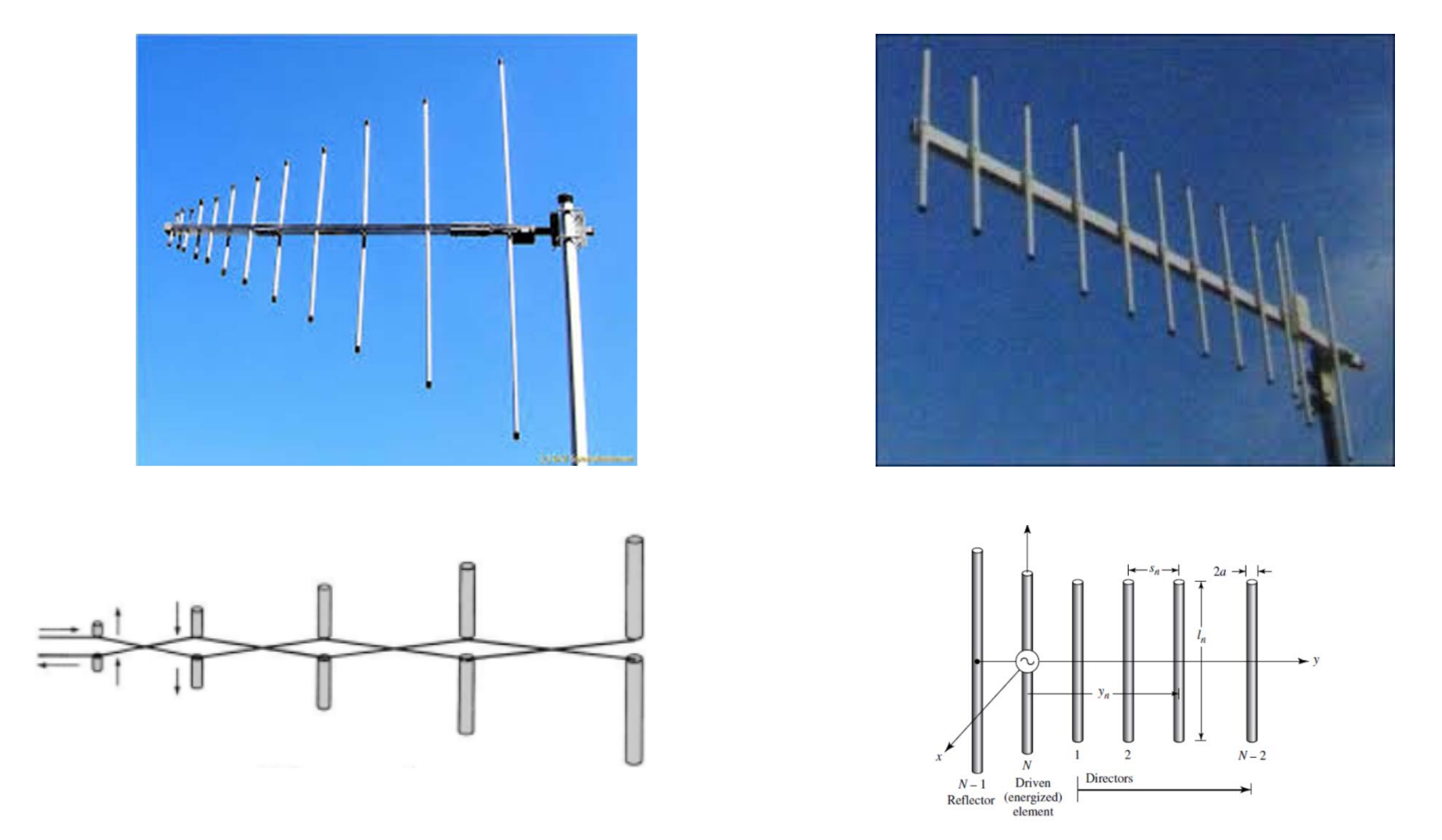
Dipole Antennas in base station
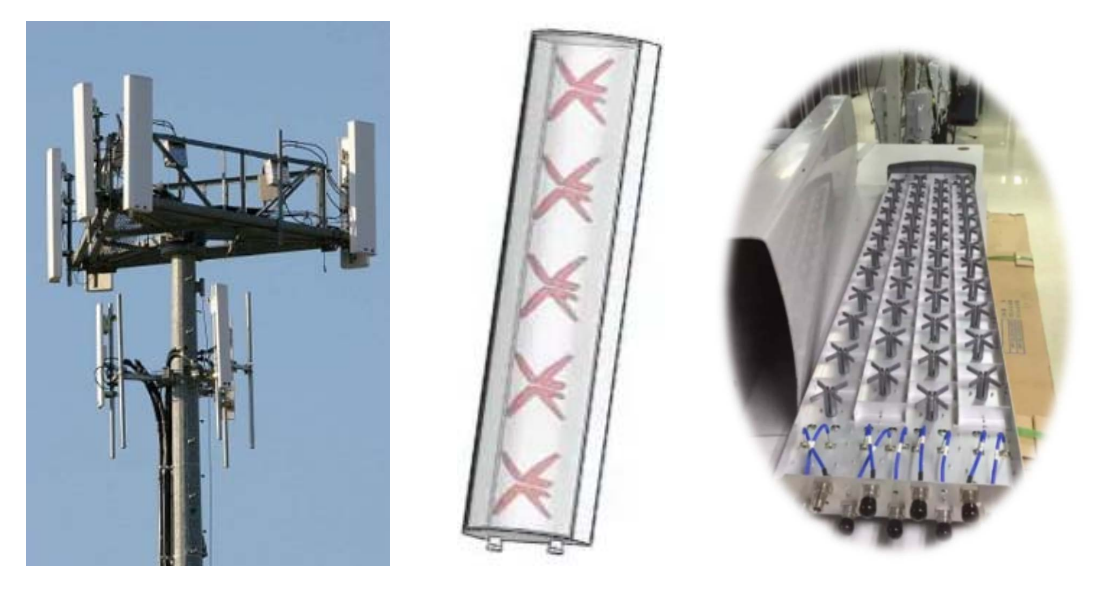
Monopole
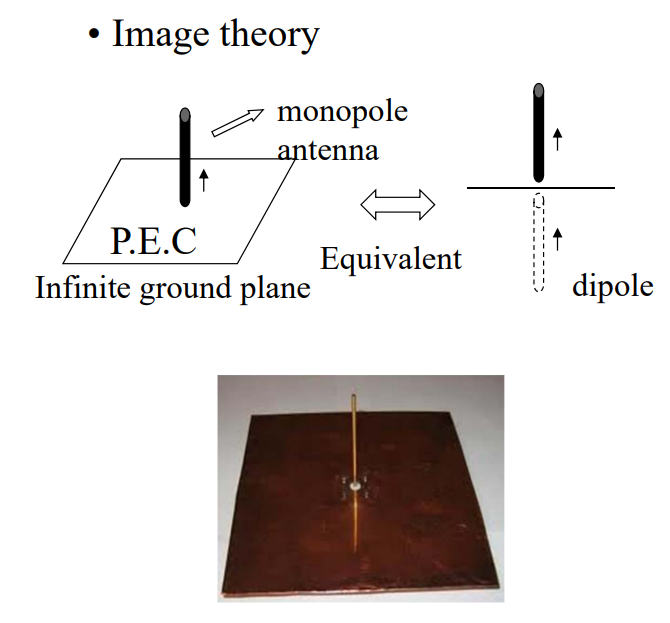
Loop Antennas
Small Loop
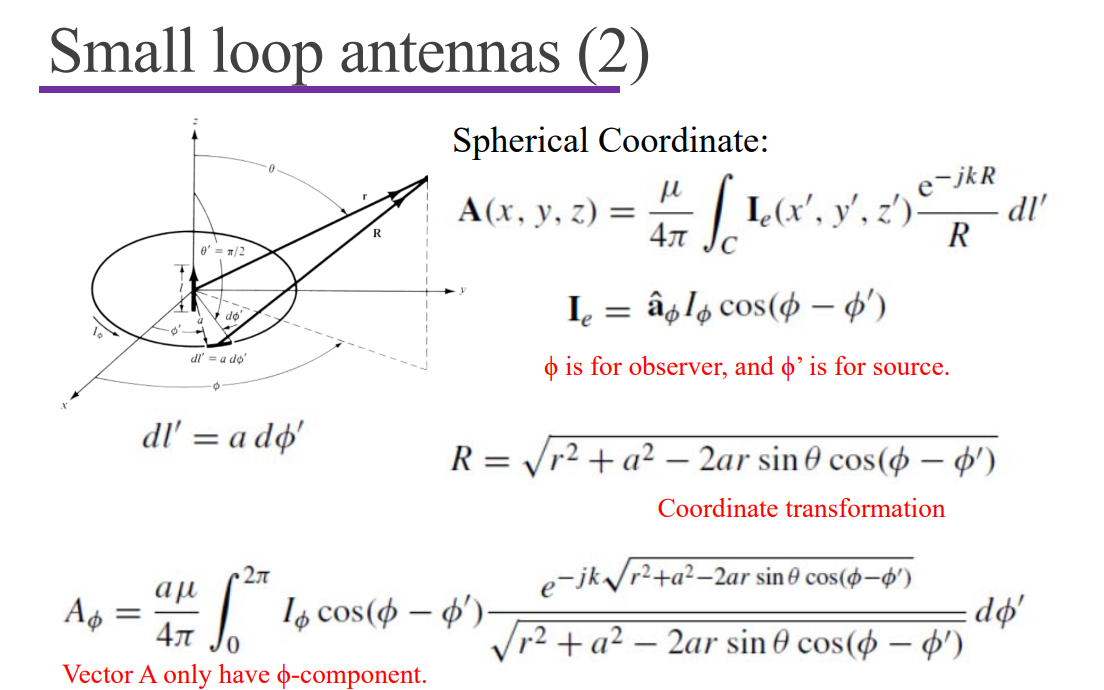
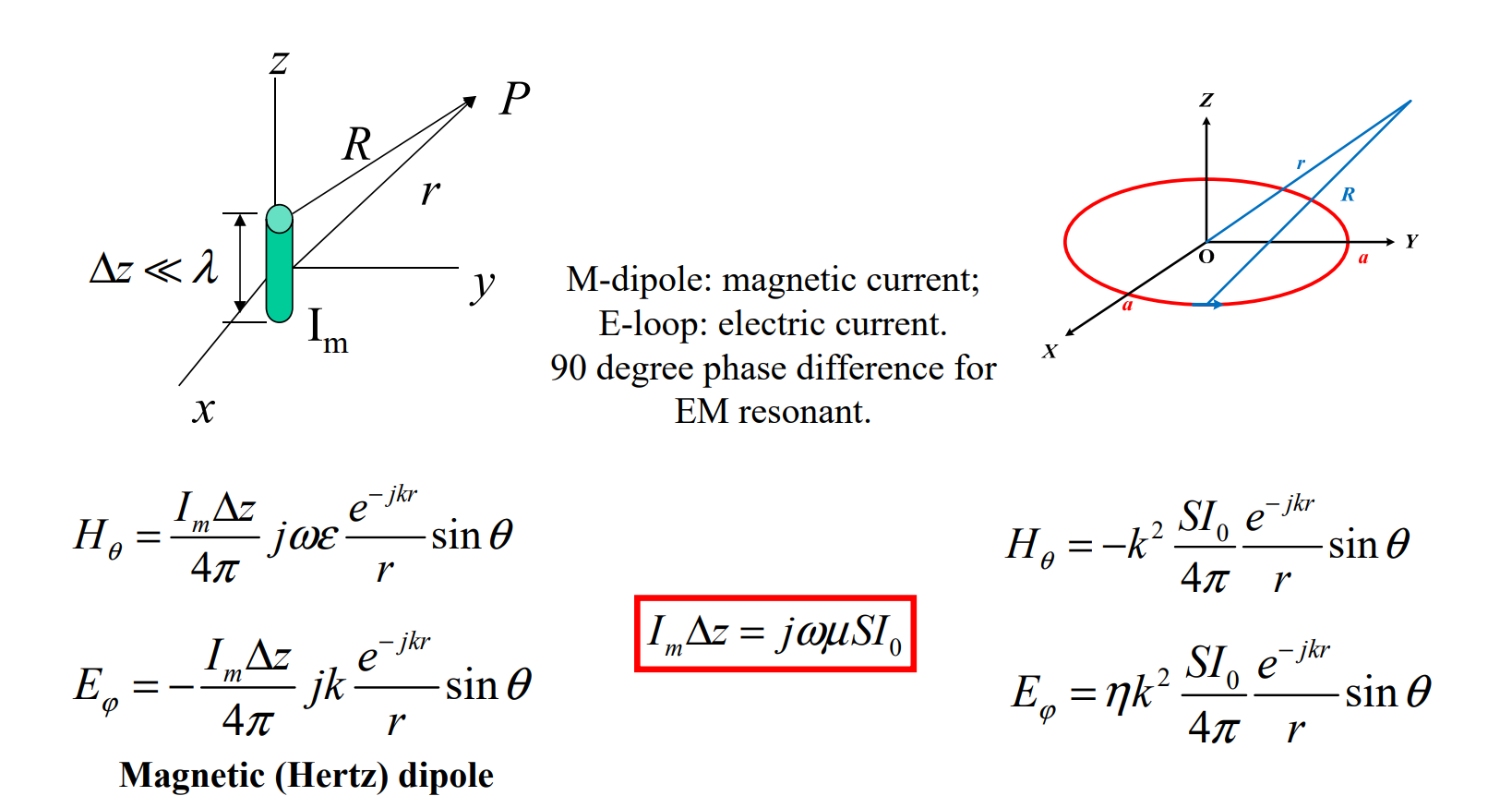
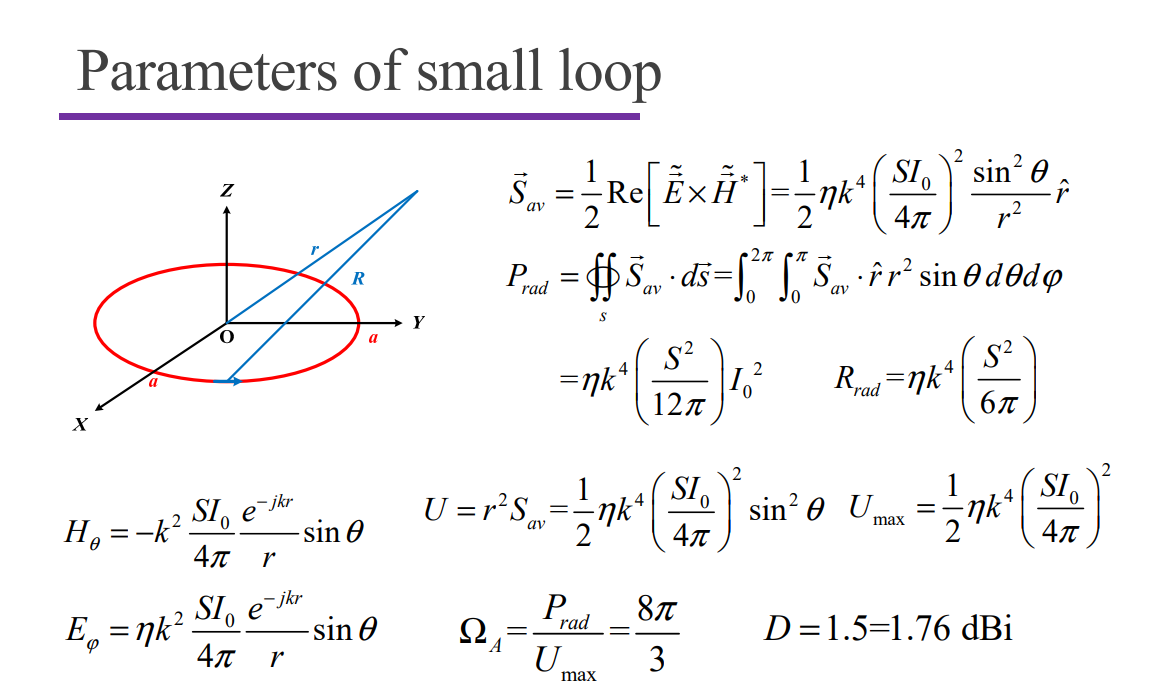
Infinite small loop radius;
Infinite small wire radius;
Uniform distribution.
Resistance $R_r$ too small!
Finite-length loop antennas
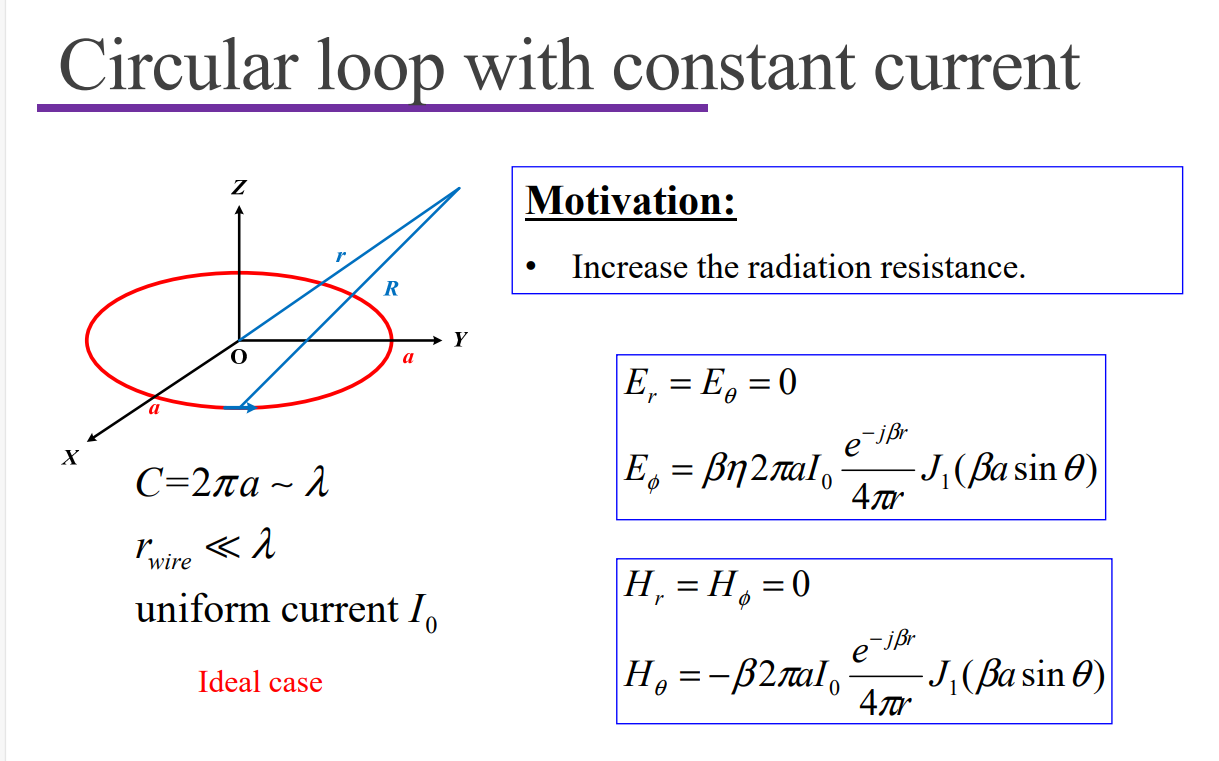
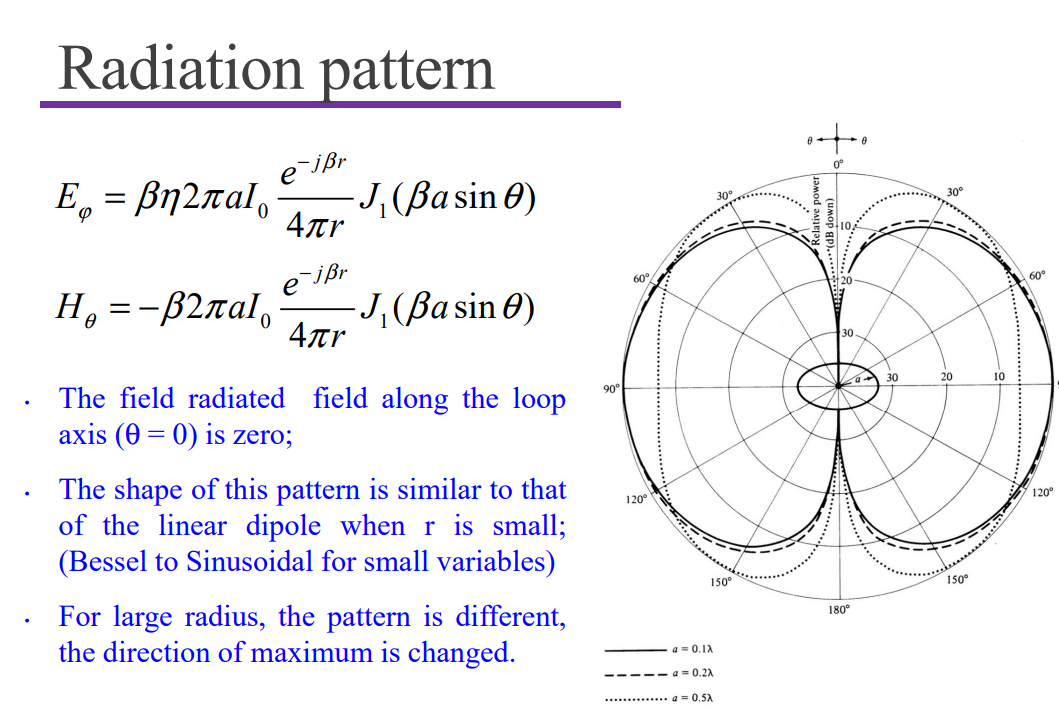
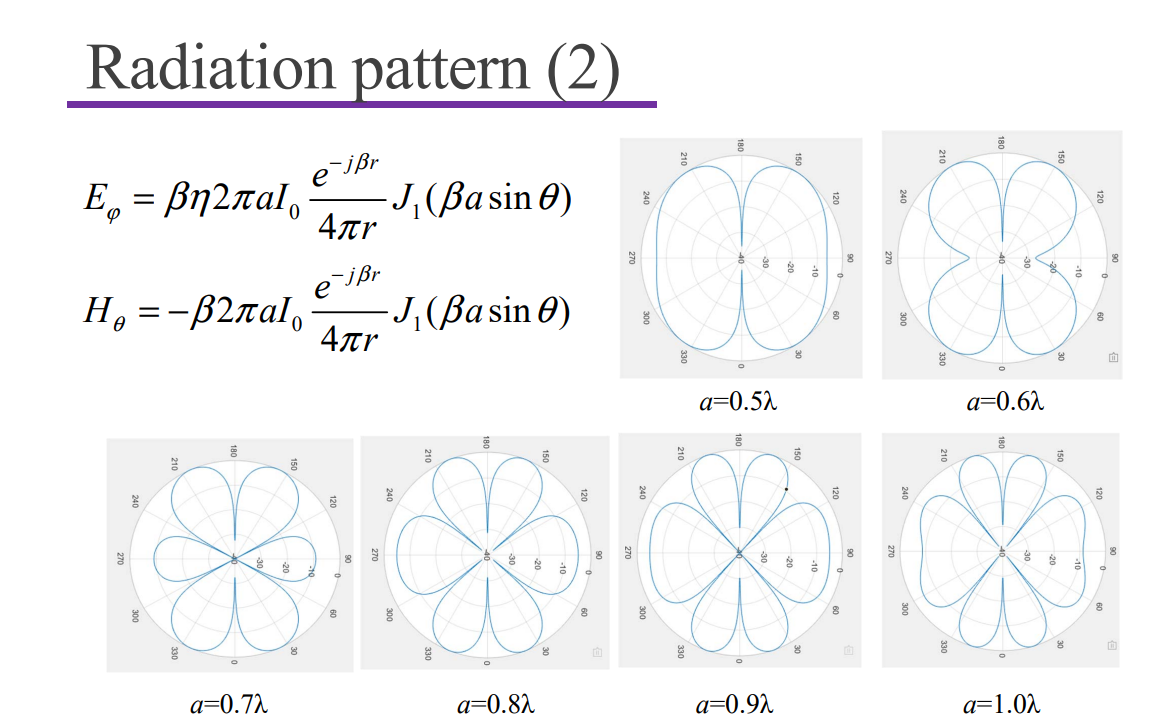
Modes of Loop antennas
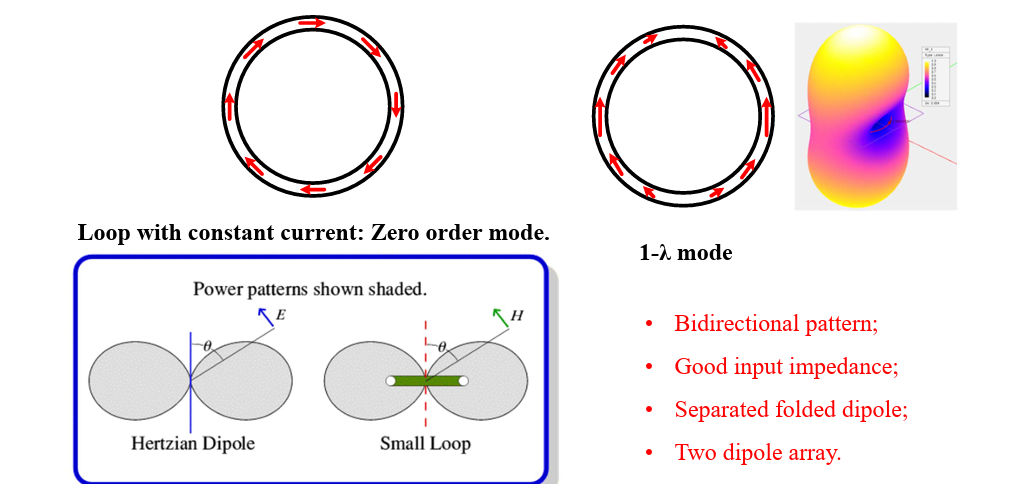
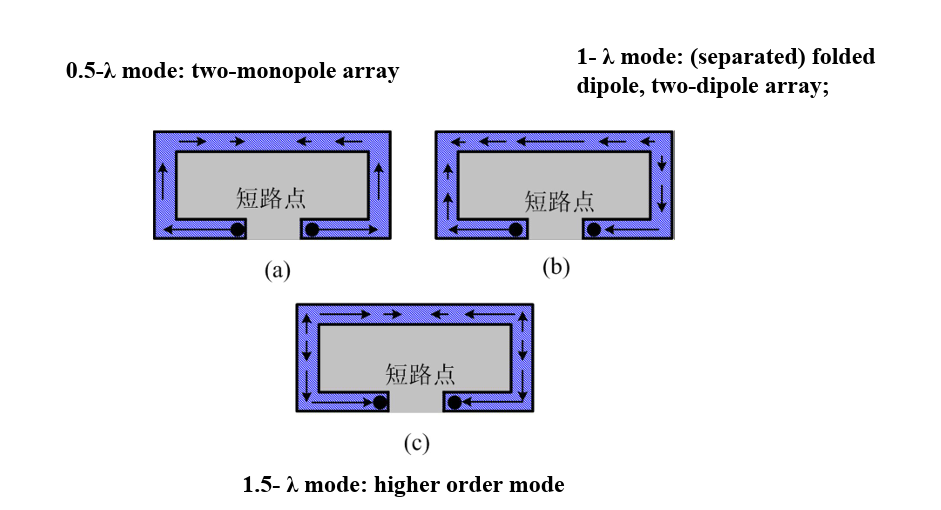
Helix/helical antennas
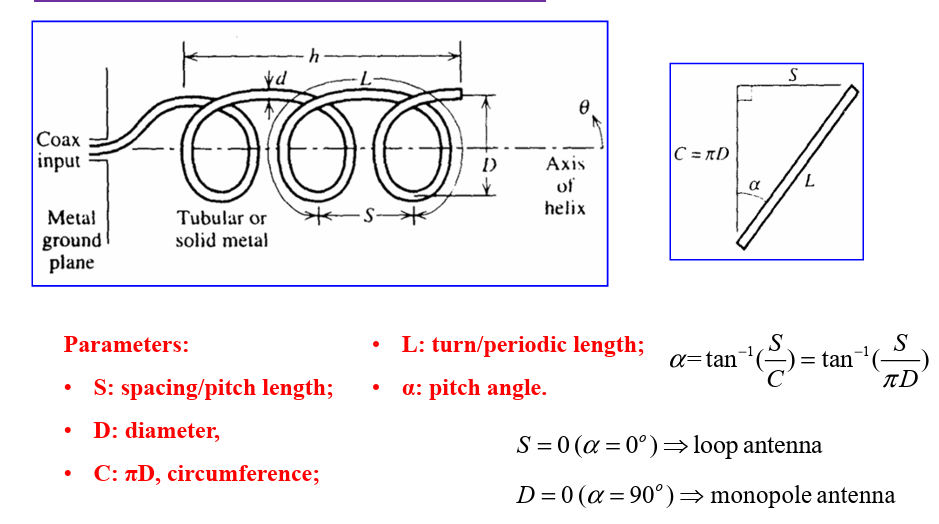
Axial Mode
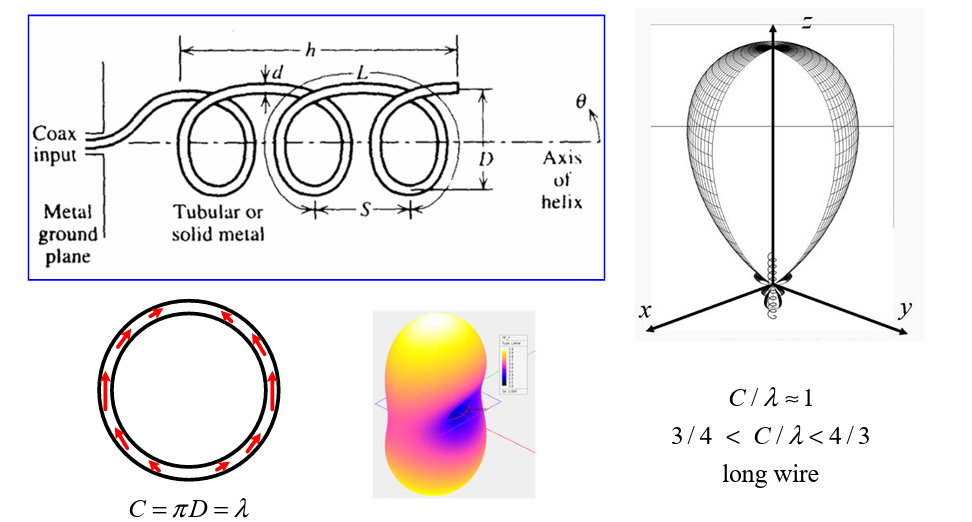
Normal Mode:
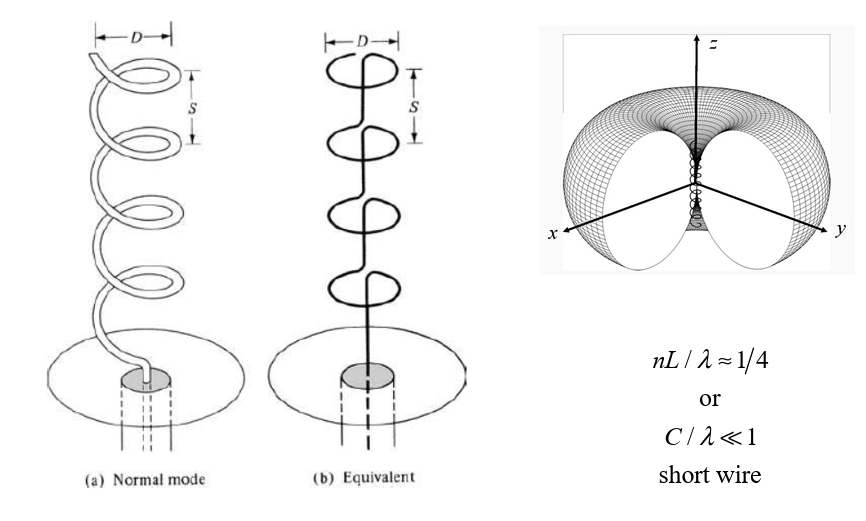
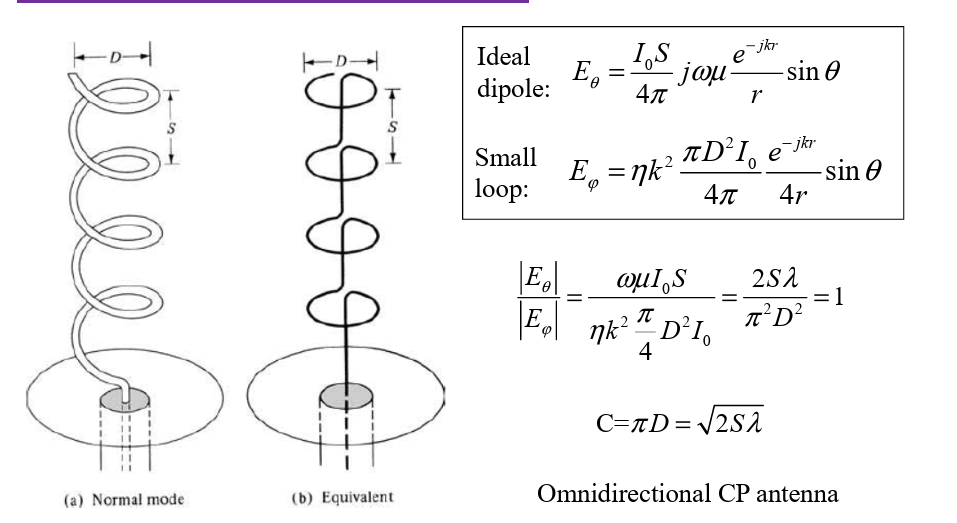
Aperture Antenna
Huygens’ Principle
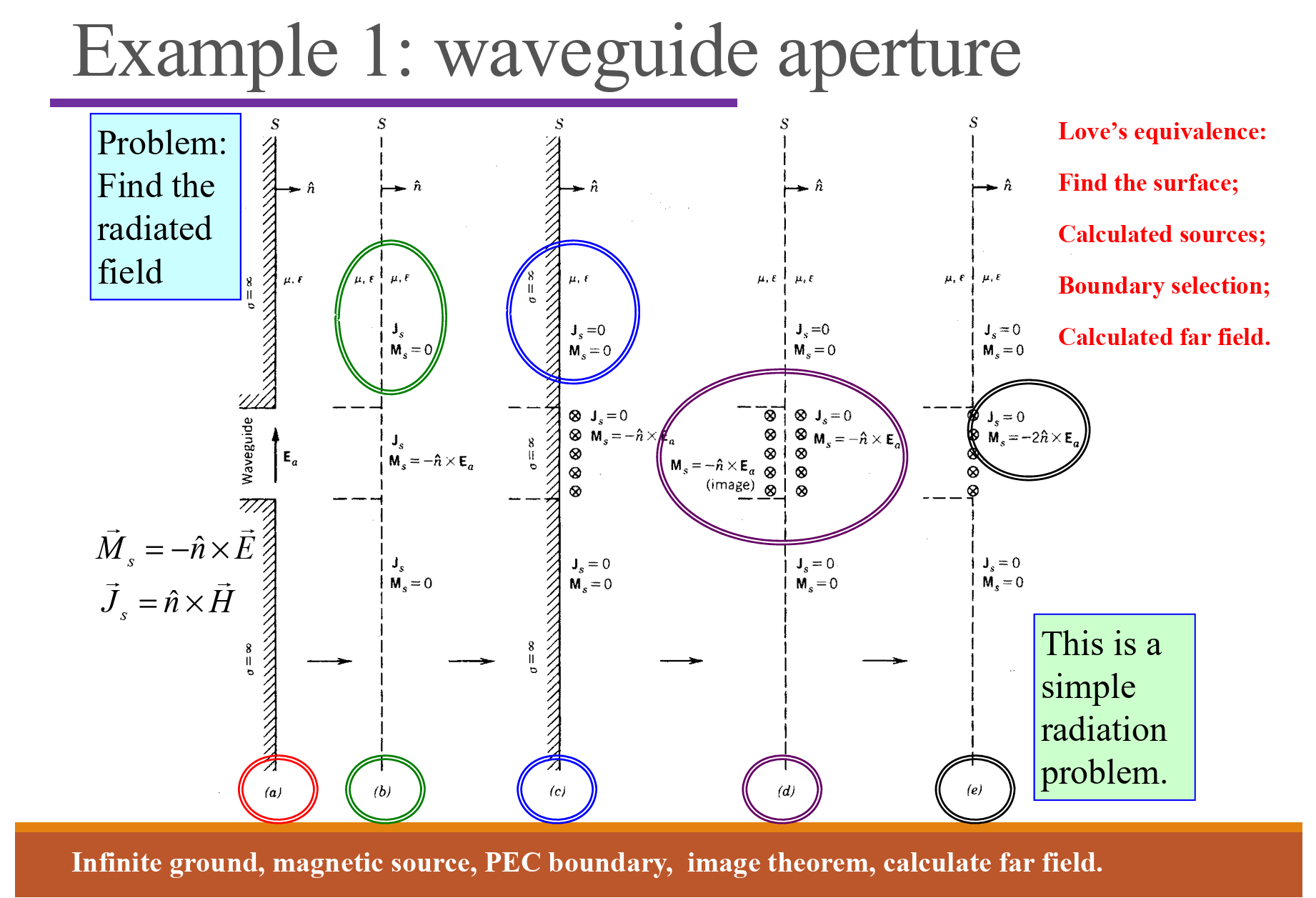
Rectangular aperture antennas
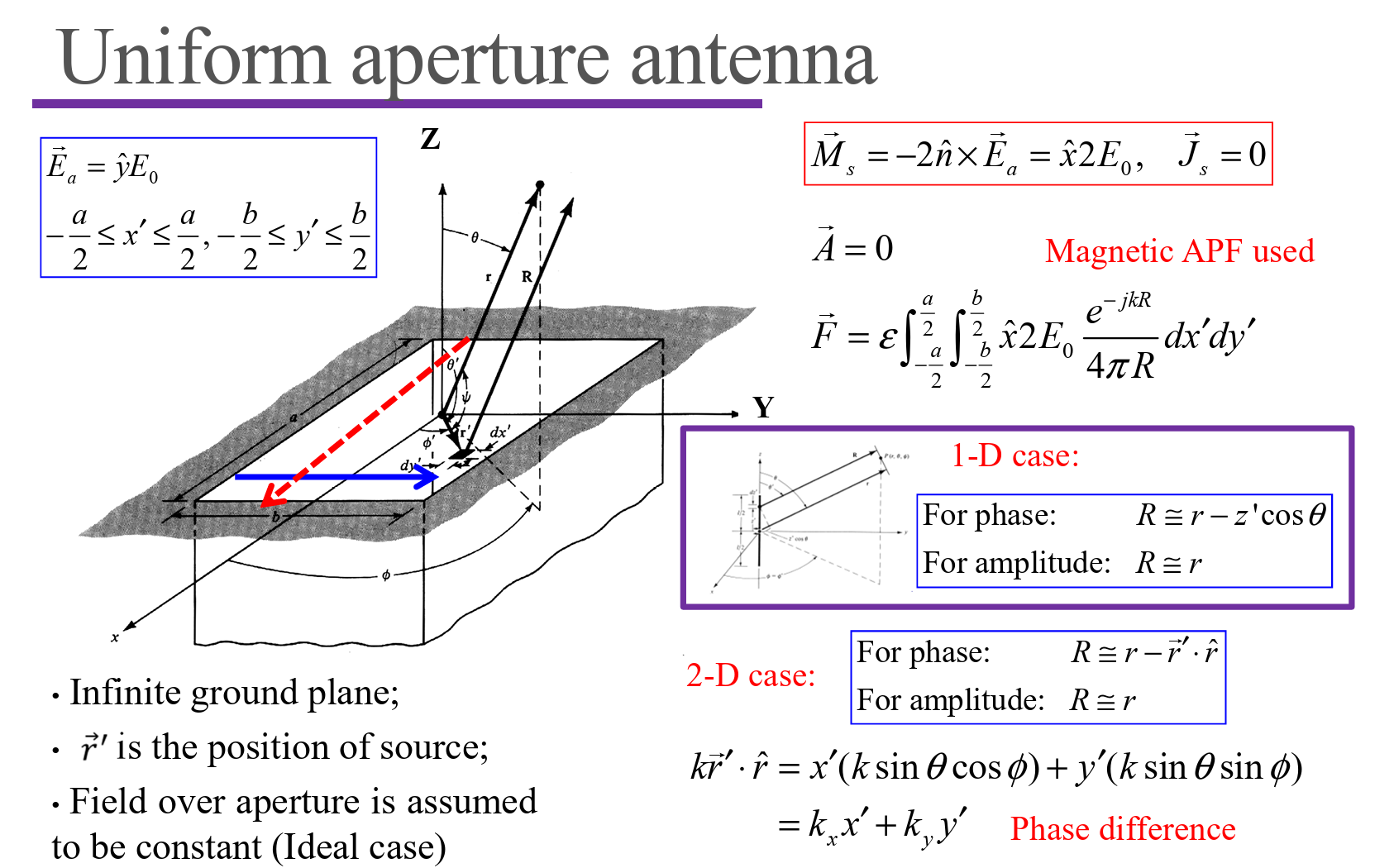
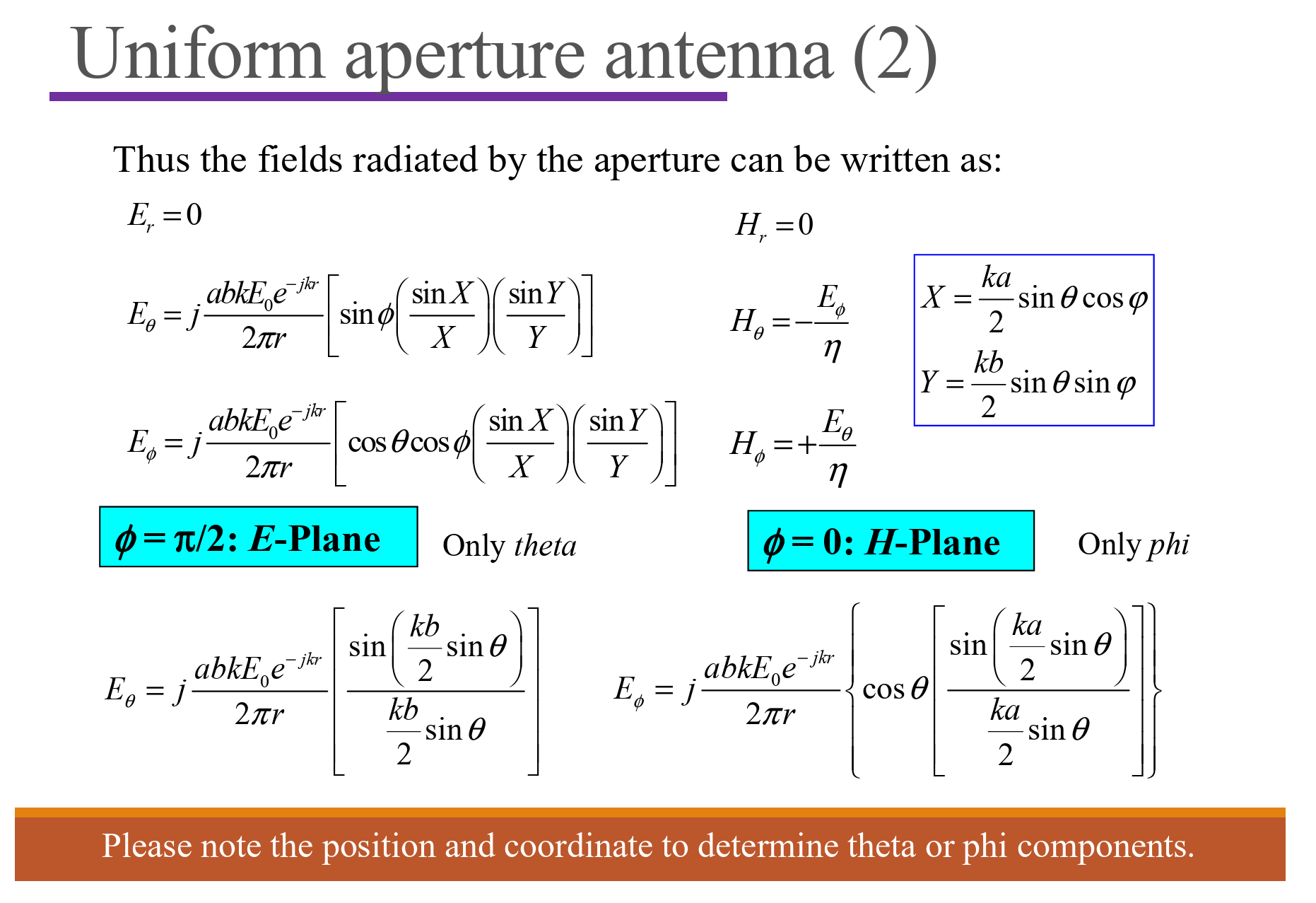
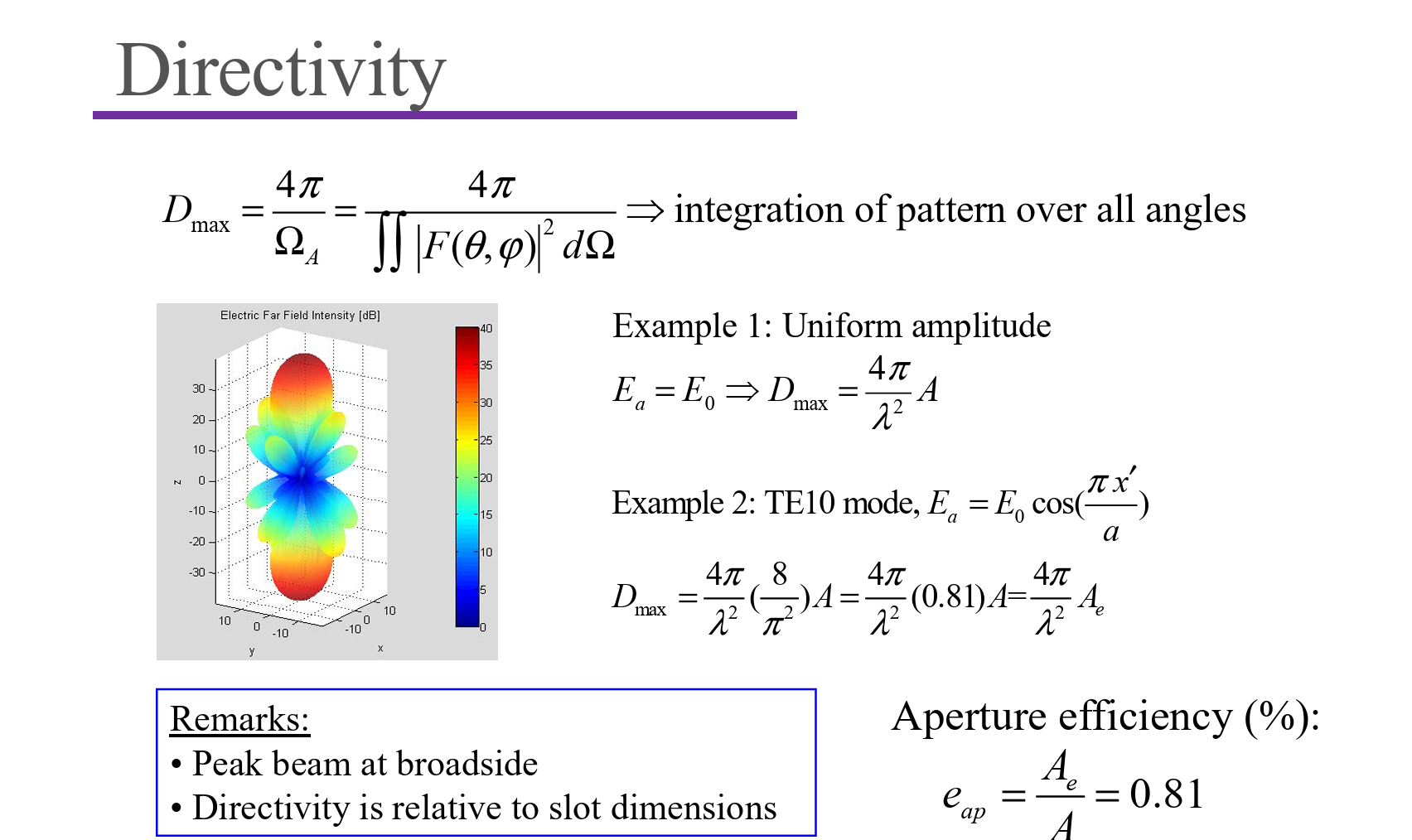
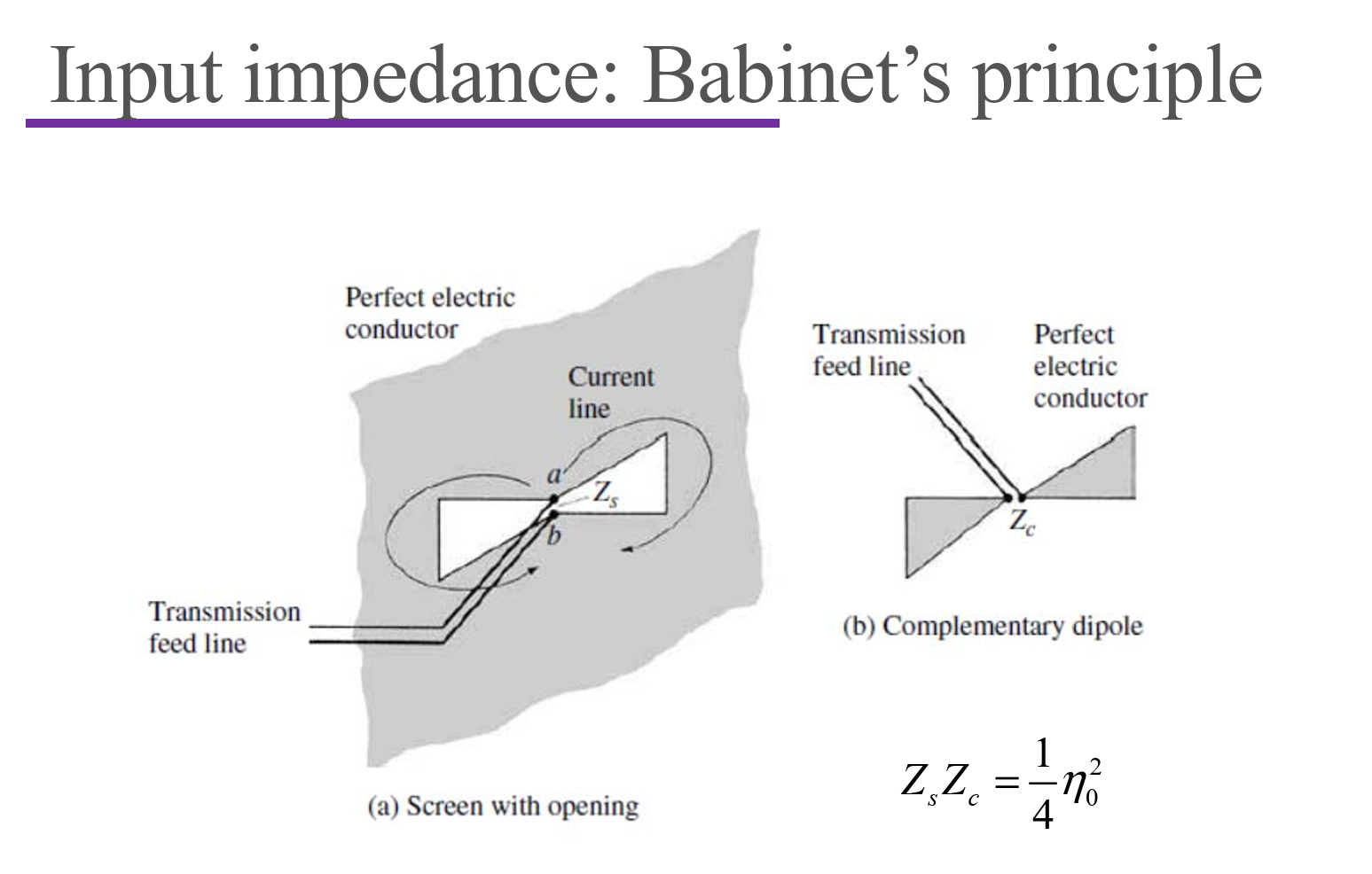
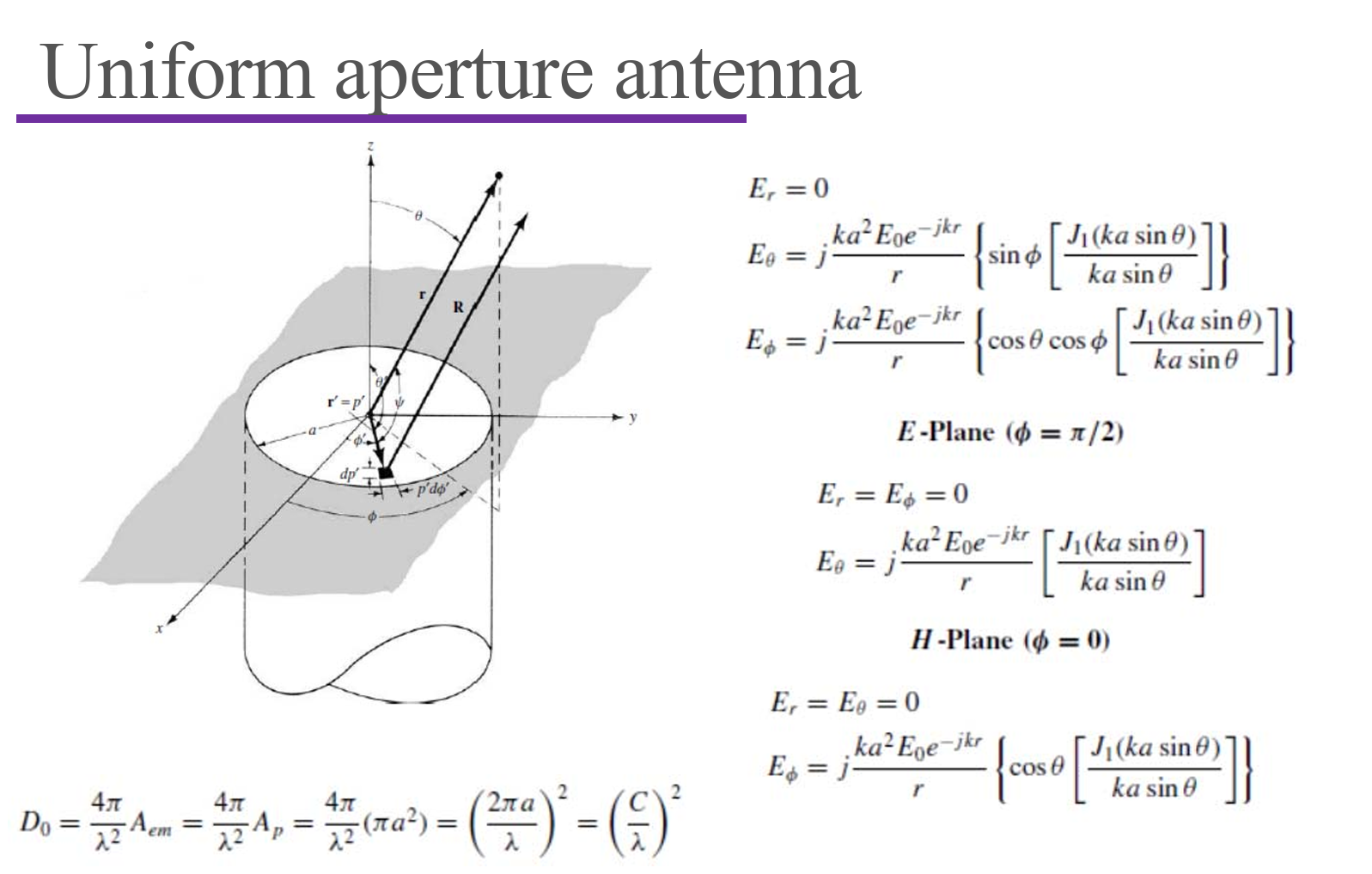
Horn Antennas
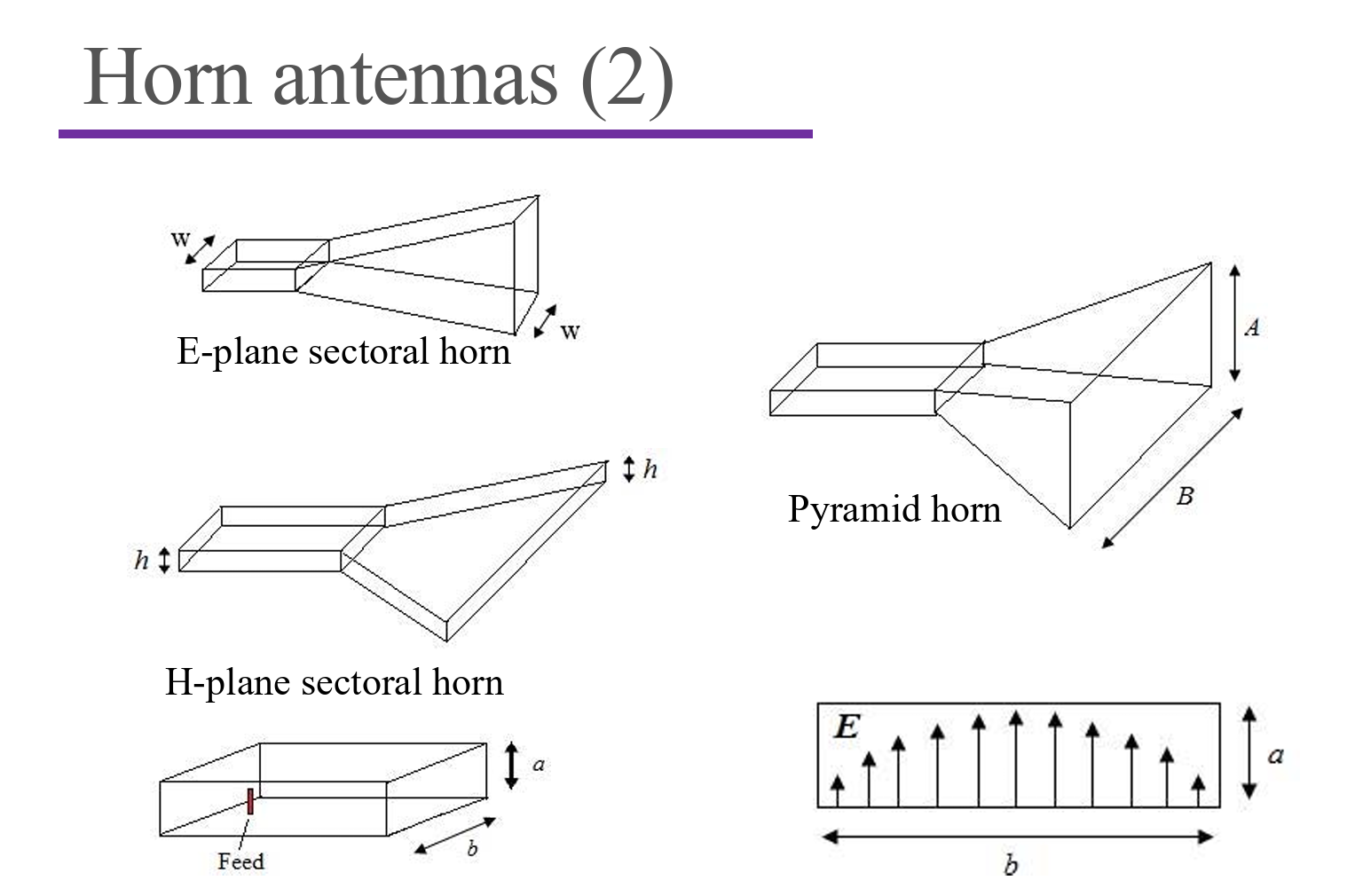
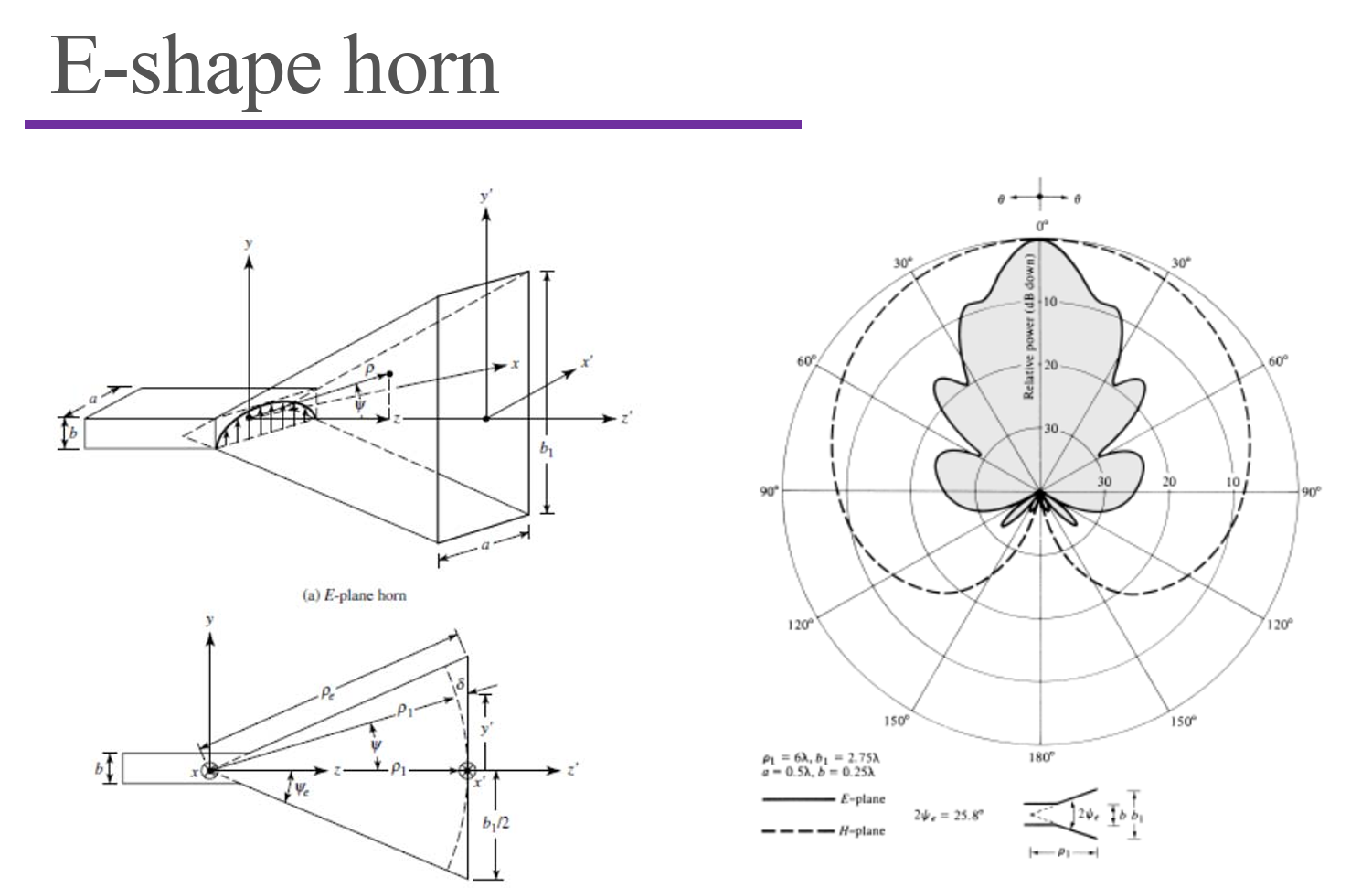
The E-pattern is in shadow.
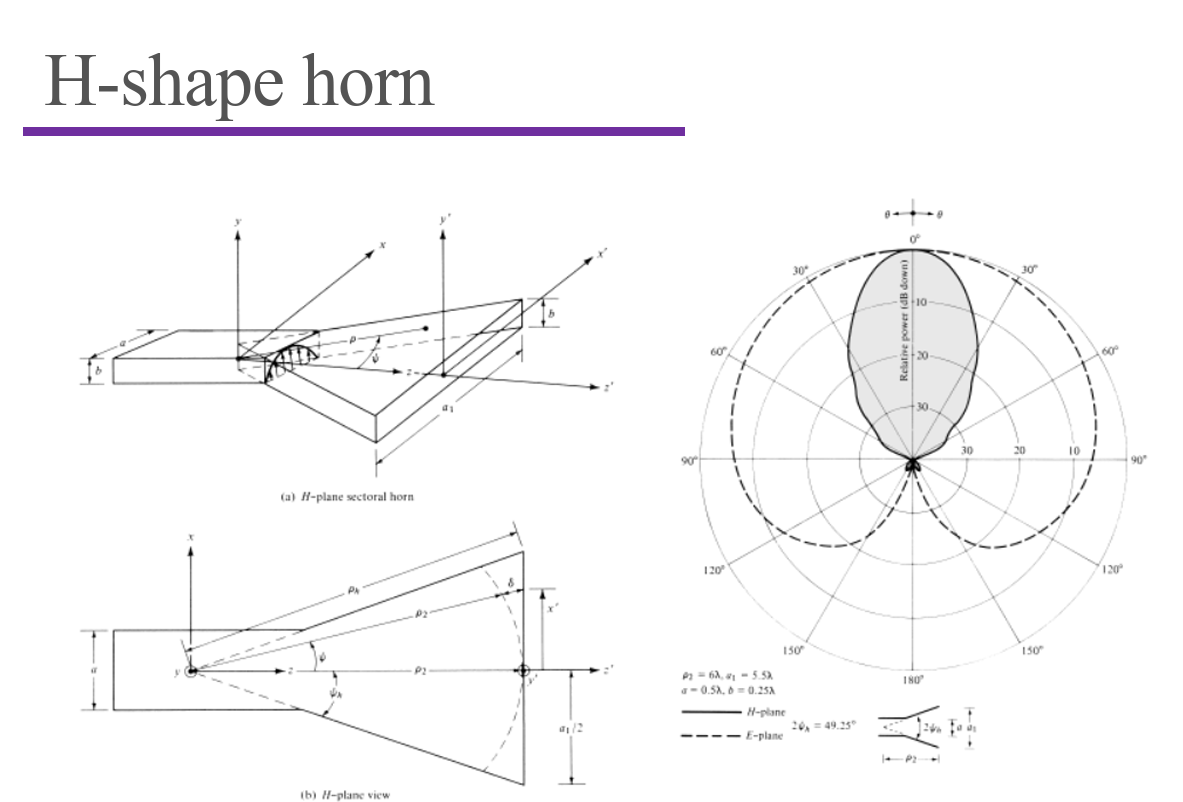
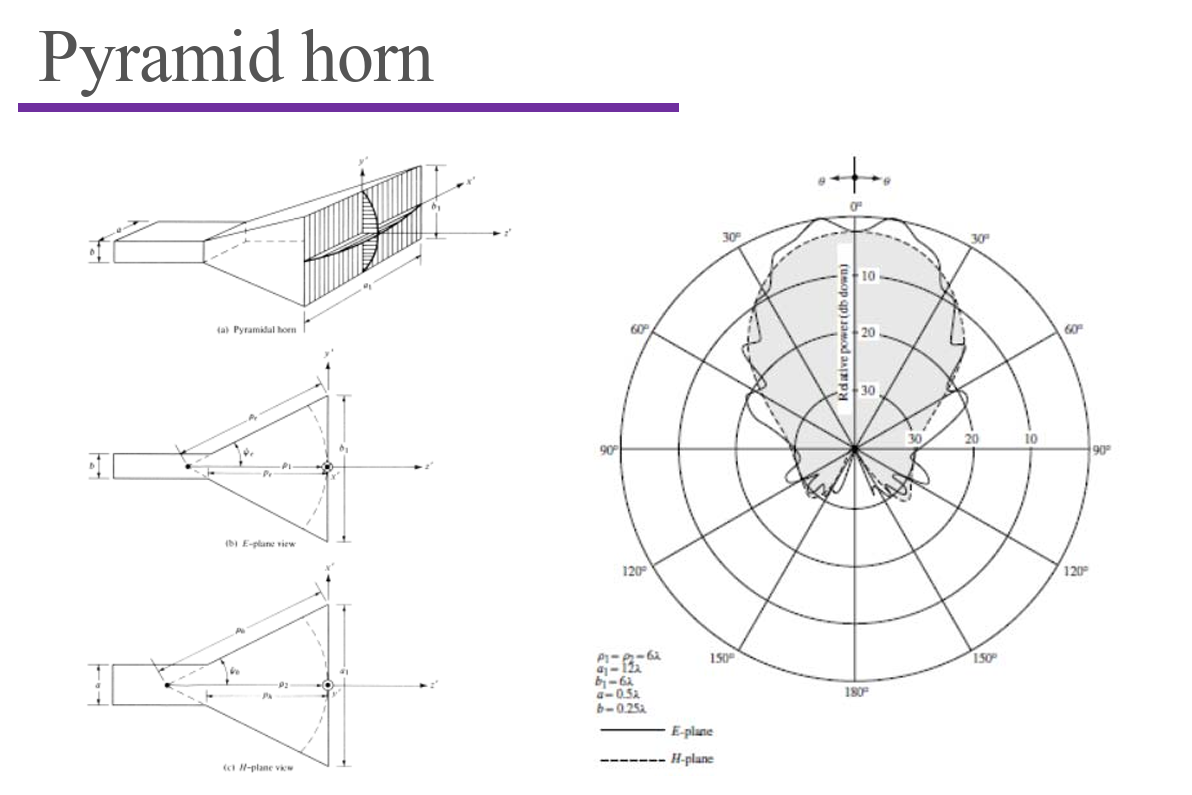
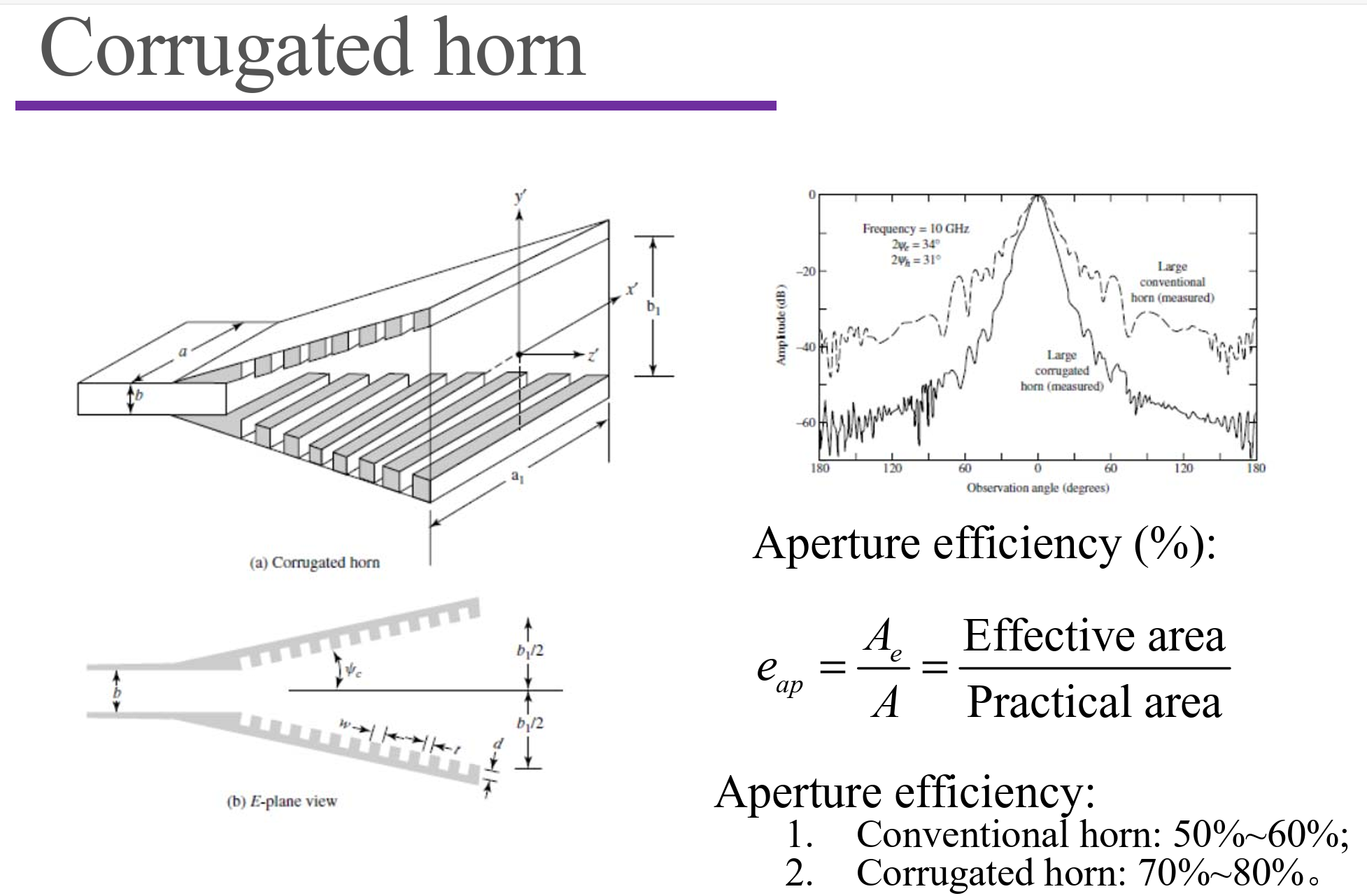
Antenna Array
1-D Linear Array
2-D Planar Array
3-D Conformal Array
Array Element
- Dipoles
- Loops
- Slots
- Microstrip antennas
Two-Element array
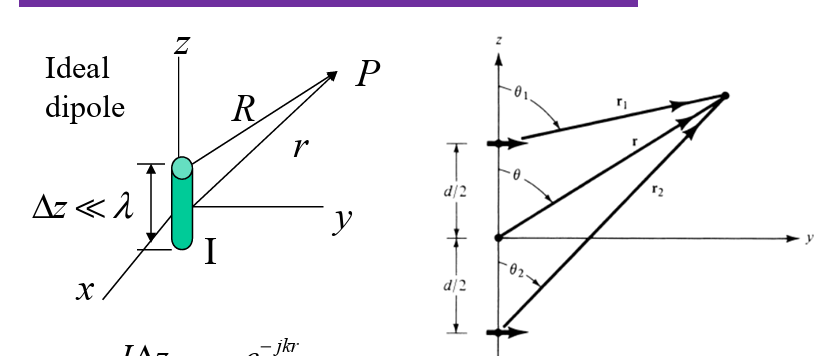
Remarks:
- Two element;
- Towards Y axis;
- Along Z axis;
- Space: d;
- Uniform phase
and amplitude; - Observe in 2D
(YZ-plane).
Far field Approximation
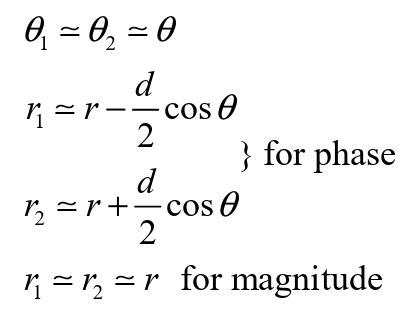
Remarks:
- Uniform phase and amplitude;
- AF is related to space (d);
- AF is with no relation with antenna type.
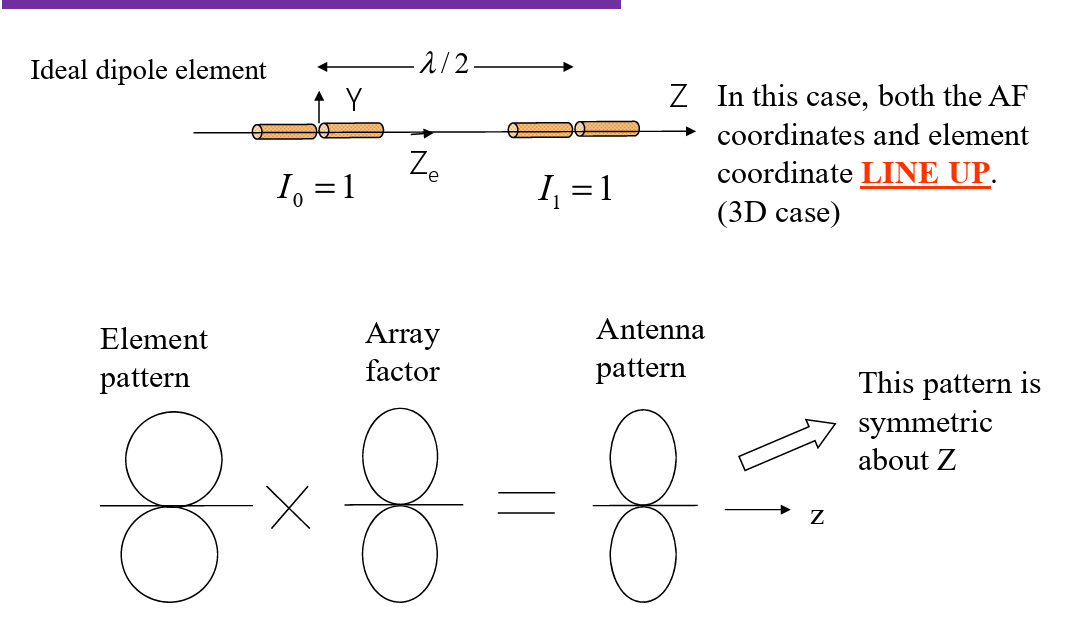
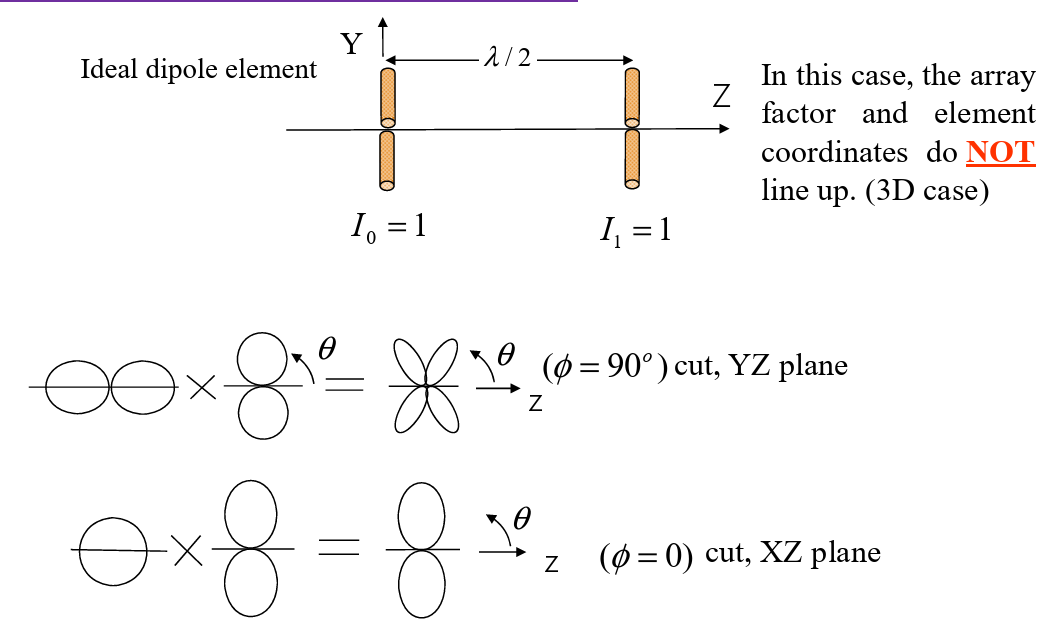
N-Element array
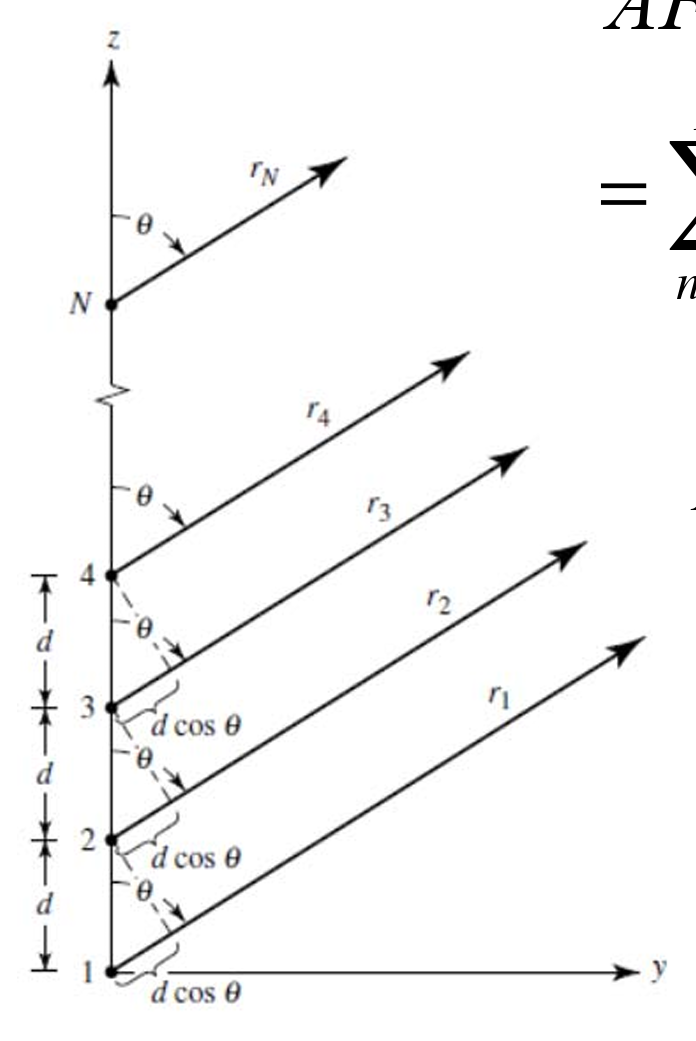
Refenece Point at the end:
Refenece Point at the center:
In Progreessive Phase Shift:
Normalized Array Factor:
Grating Lobe:
Avoid grating lobe:
- Smaller d;
- Smaller phase shift.
Broadside Array
Maximum @ $\theta = 90\degree$
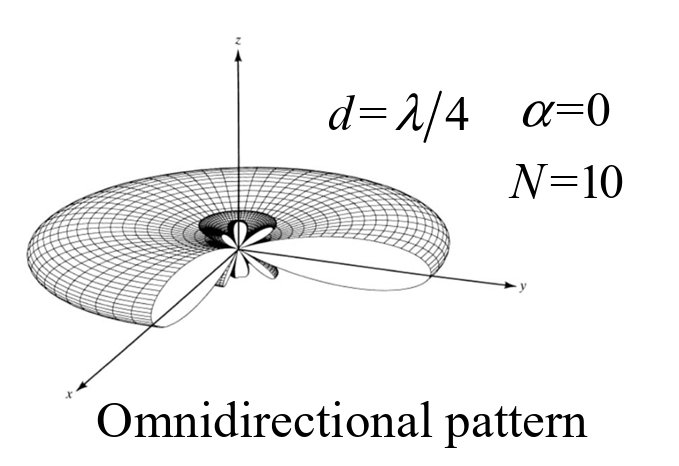
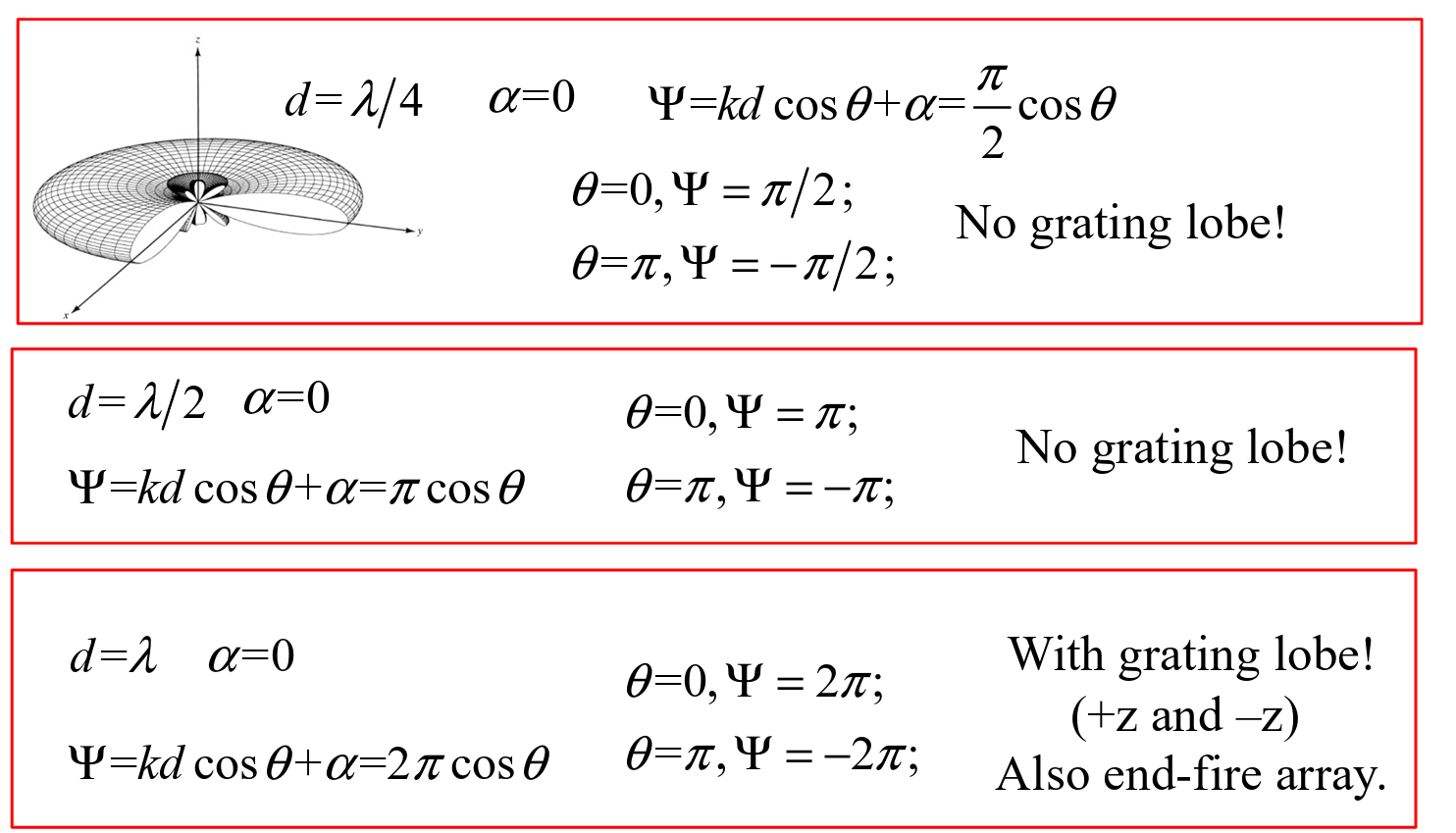
End-fire Array
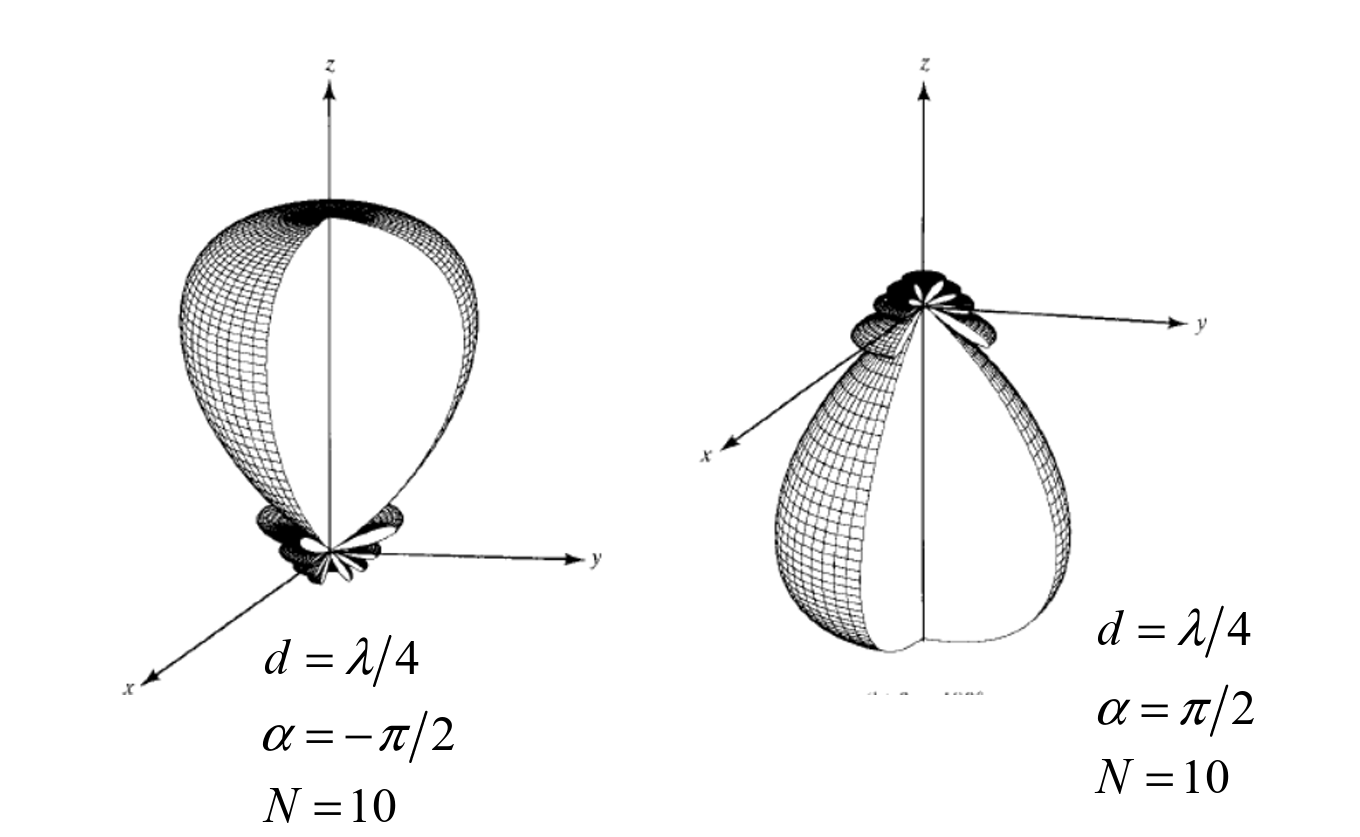
Bidirectional:

Unidirectional:

Phased Array
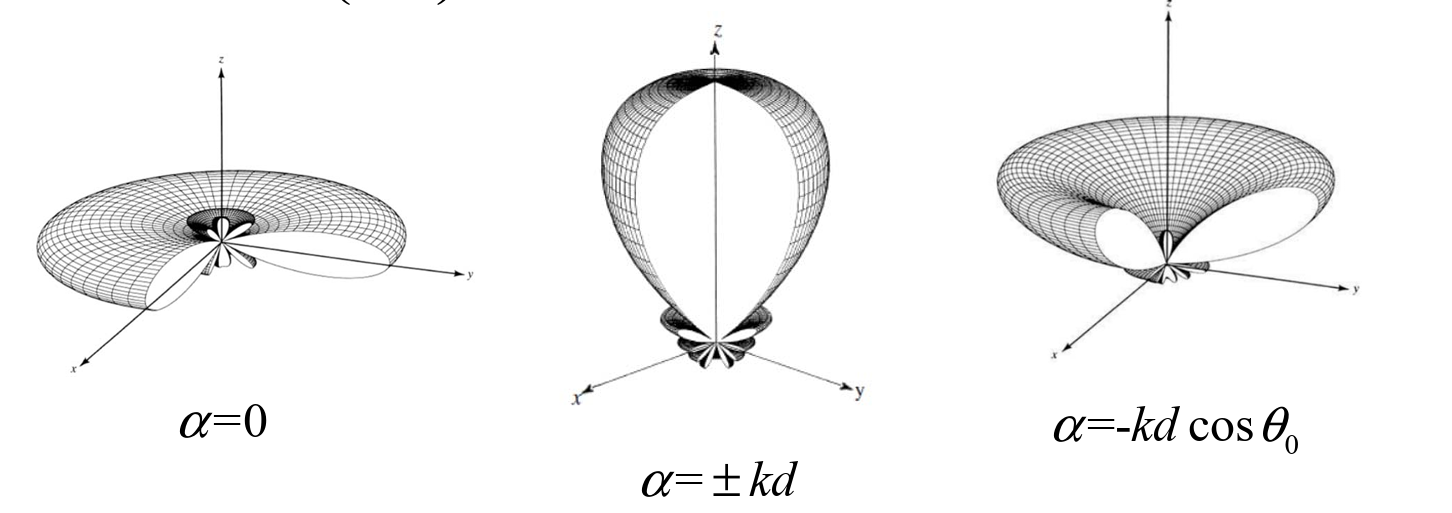
Non-uniform Array
Side Lobe
Uniform array:
- Universal pattern: N↑, SLL↓
- With a limit of -13.3 dB
- No control of SL
How to reduce SLL?
Non-uniform excitation
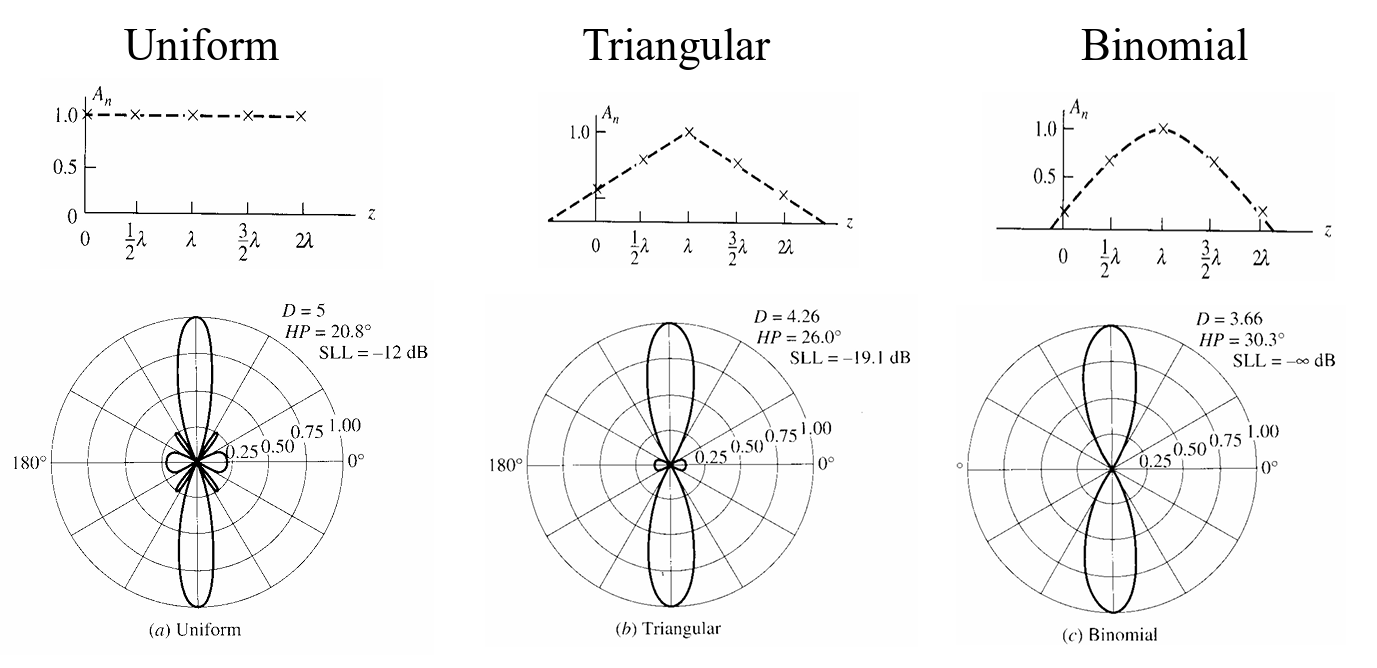
Planar Array
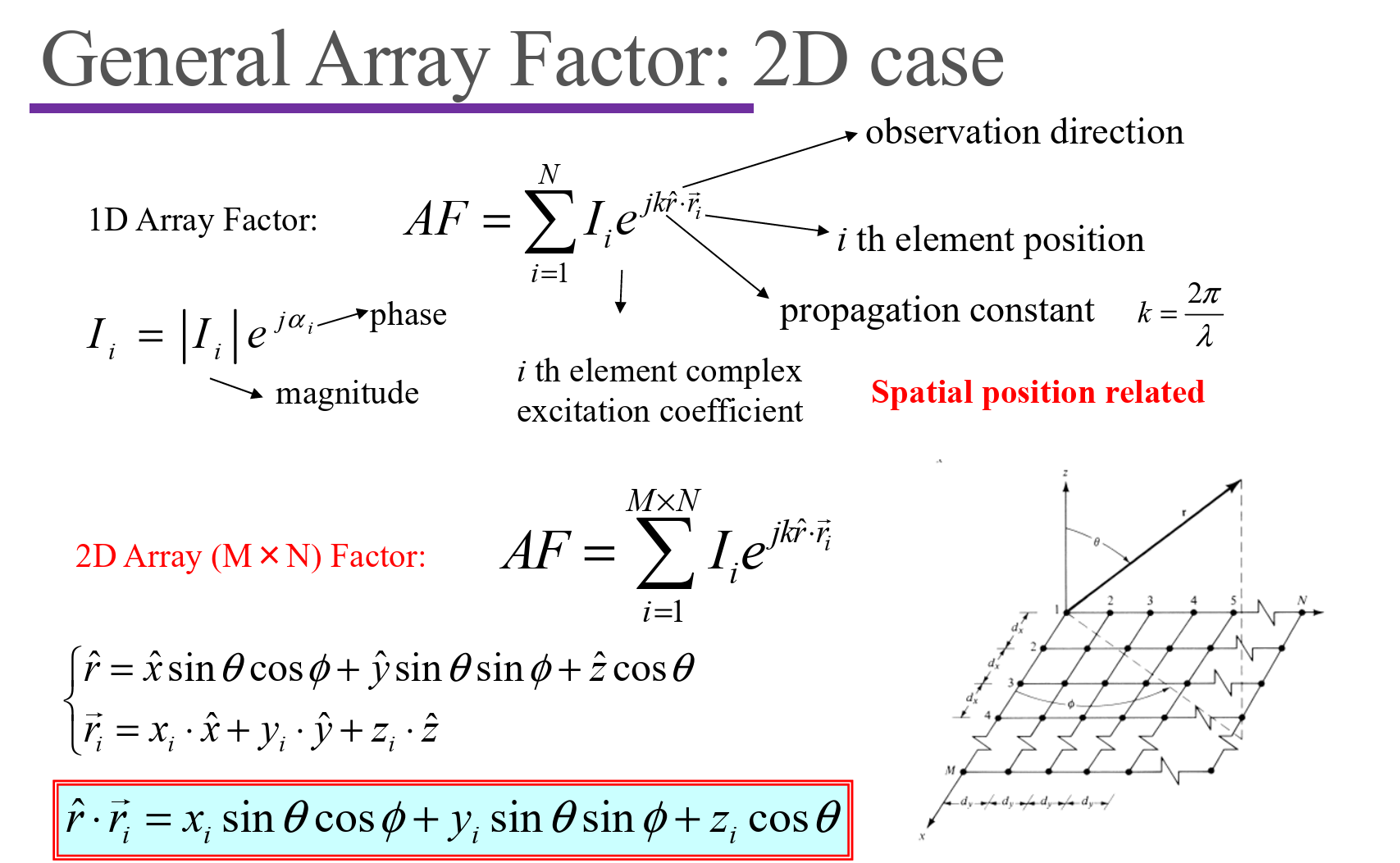
Can be viewed as product of two linear array factors:
Applications
Yagi-Uda Antenna
Basic configuration:
- One driven element;
- Two parasitic elements or more
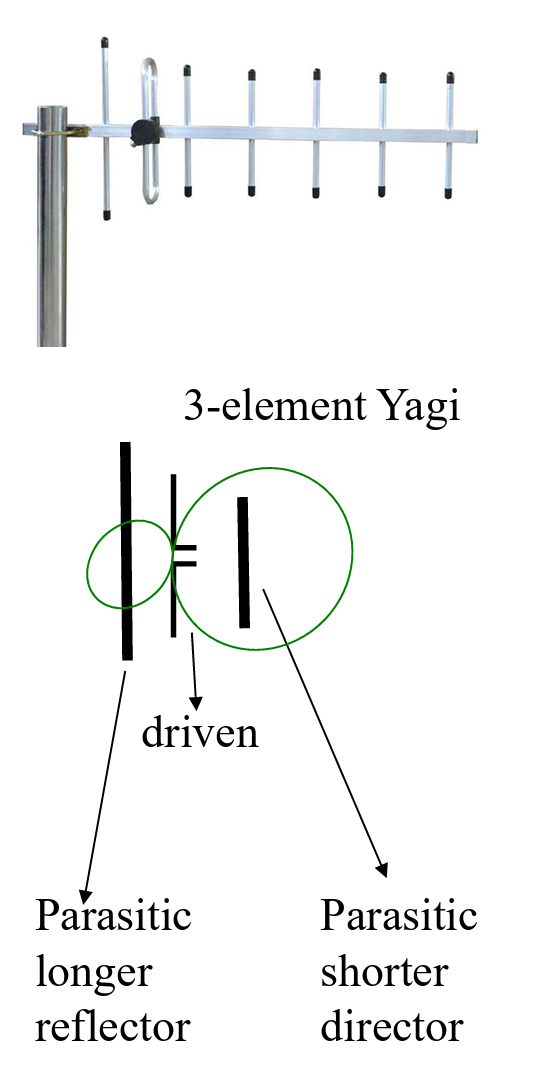
Remarks:
- Parasitic elements are excited by near-field coupling from the driven element;
- Proper design of parasitic elements for end fire radiation;
- In far field, the radiated waves from all the elements are in-phase.
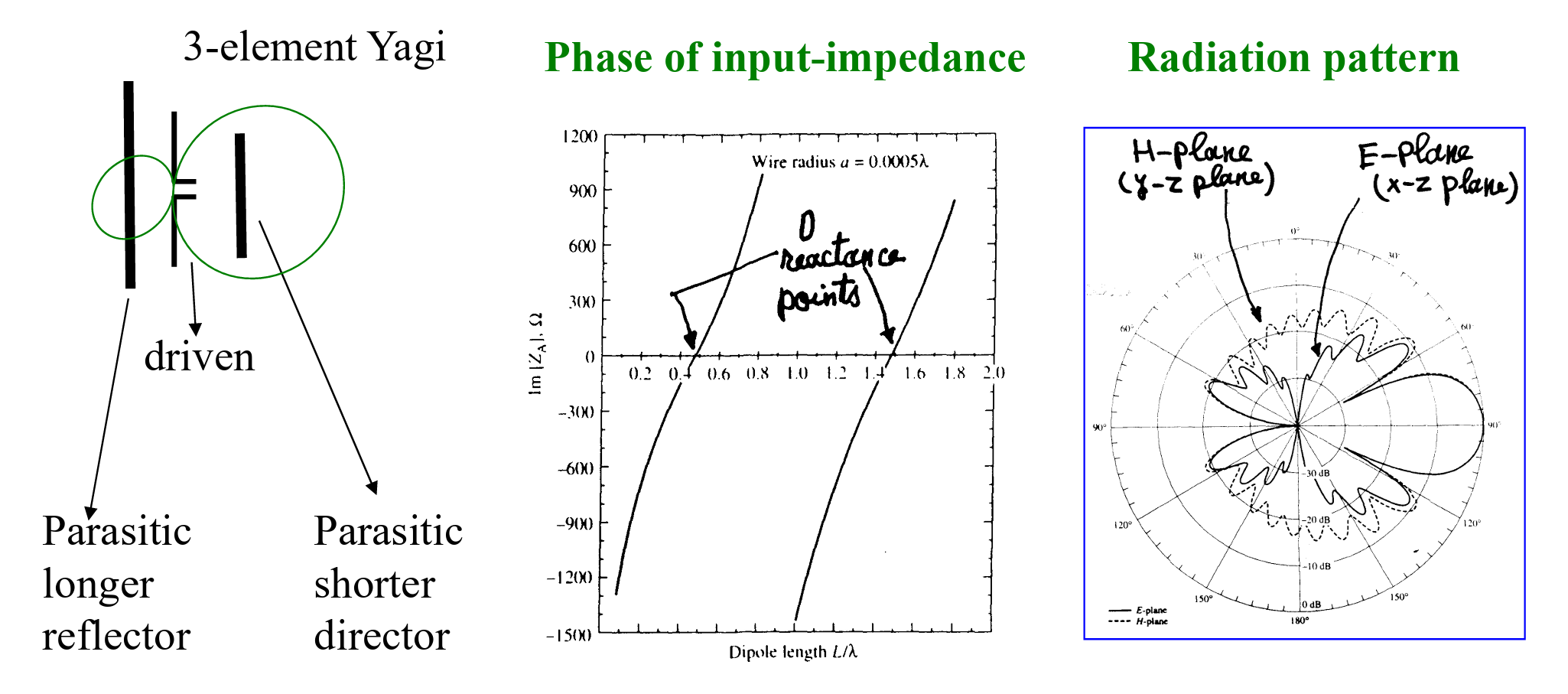
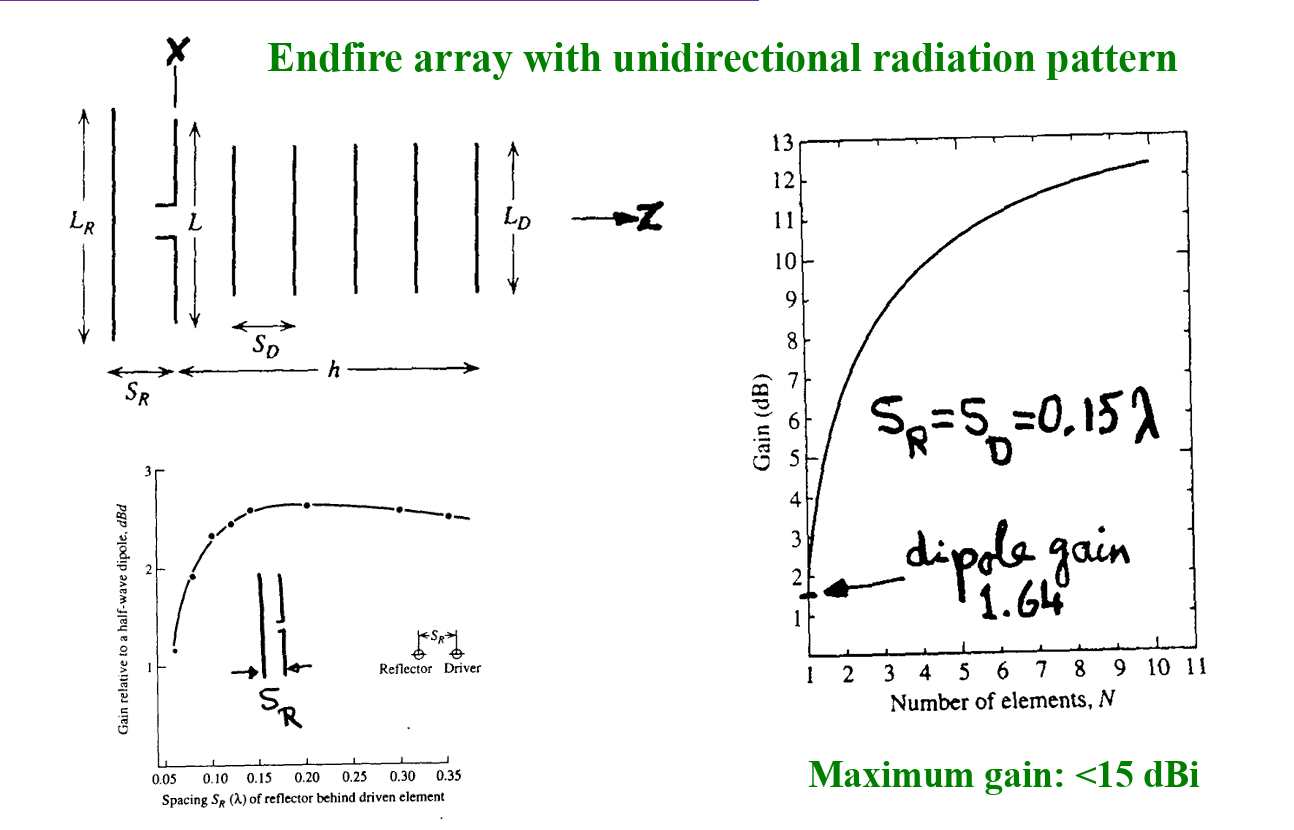
Helix Antenna
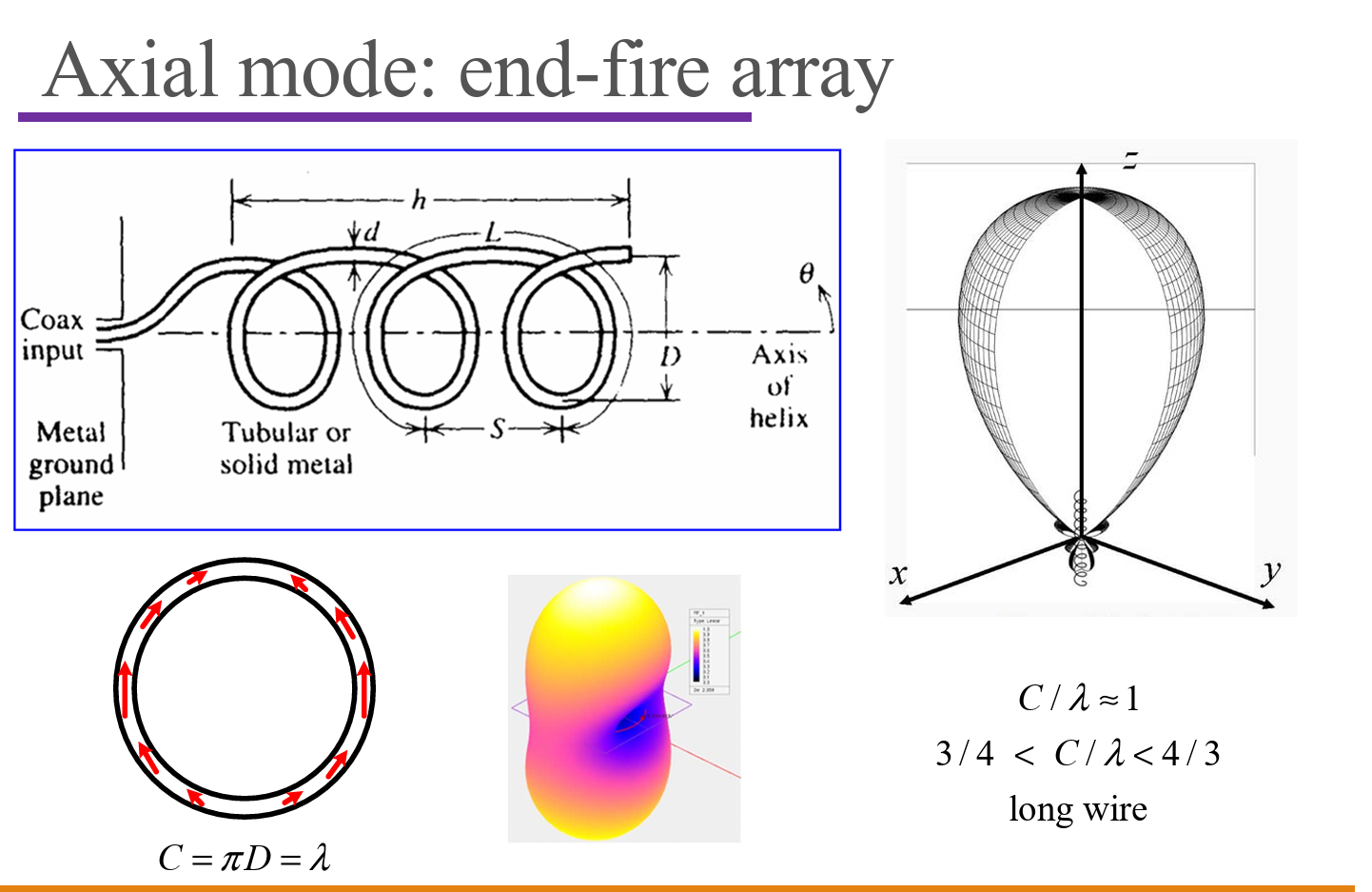
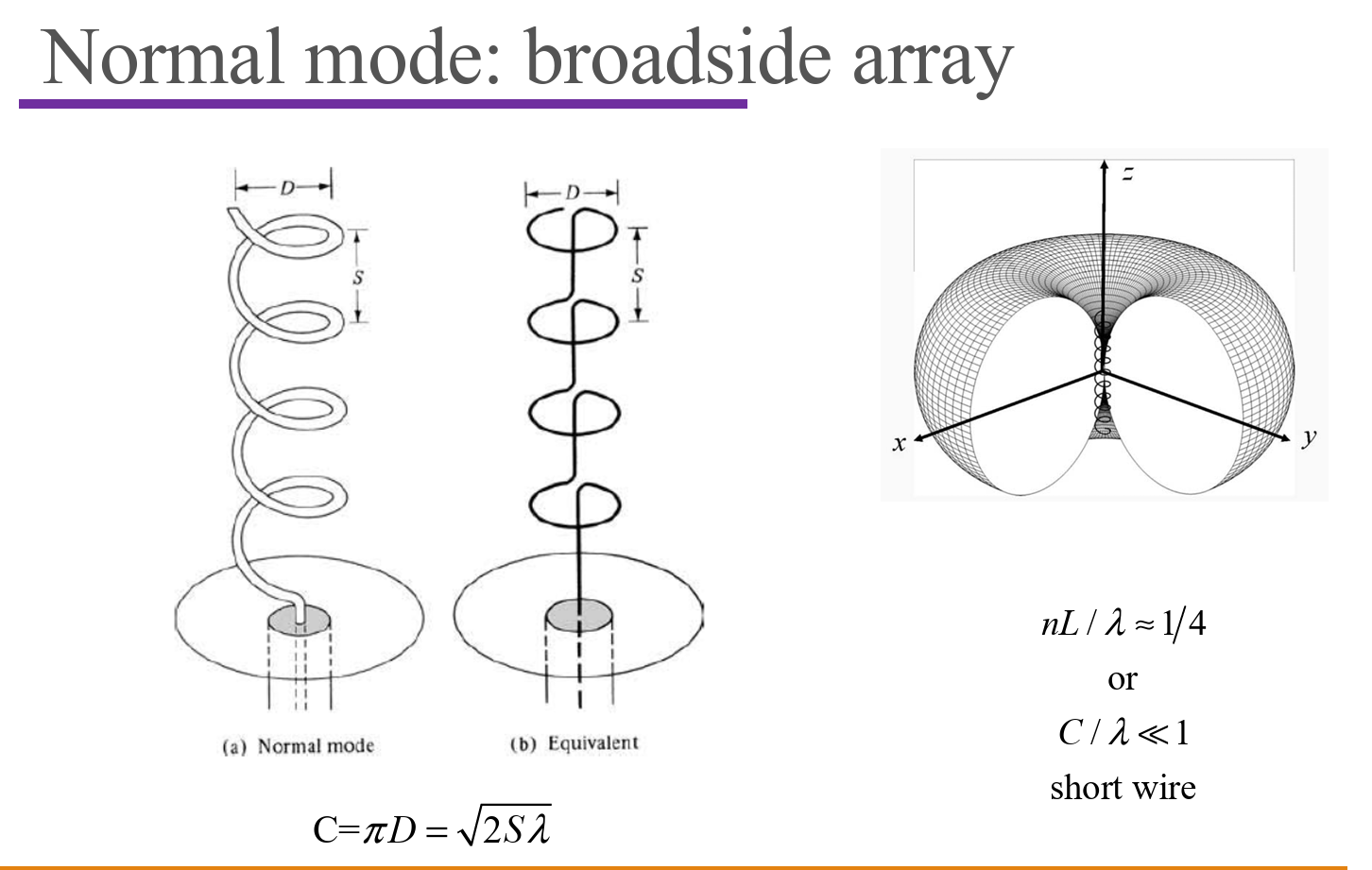
Travelling-Wave Antennas
Travelling wave & standing wave
Long wire antennas
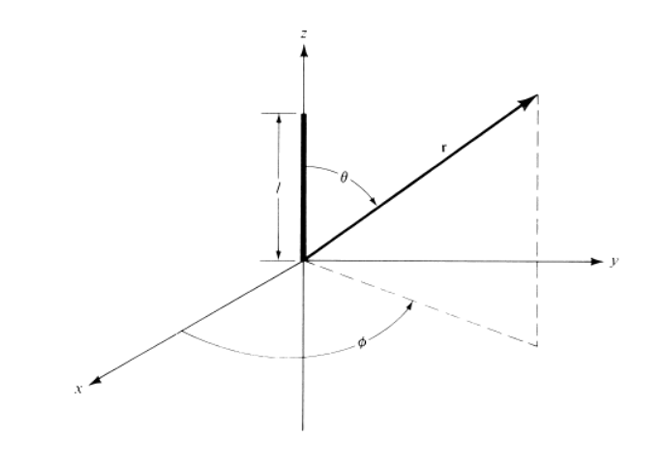

Note:
Long wire antennas: “l” = Several wavelength
- One end for excitation;
- The other end for load (open, short, or matching);
- Transmission line with radiation.
Log-periodic Antennas
Yagi-Uda: High Gain
Log-periodic: Wide Bandwidth
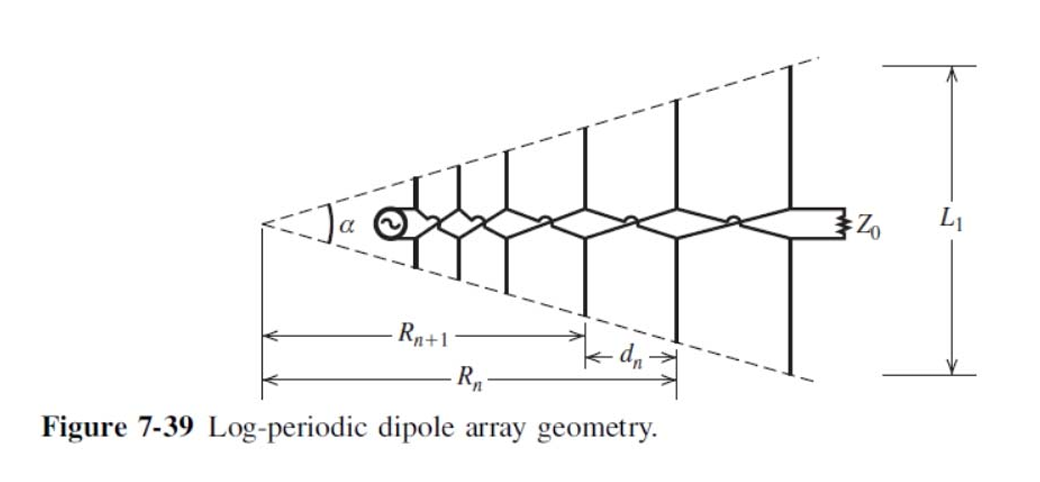
Why:
- Feed from smaller dipole element;
- Feed out-of-phase with adjacent elements;
- Add a resistor at the end.
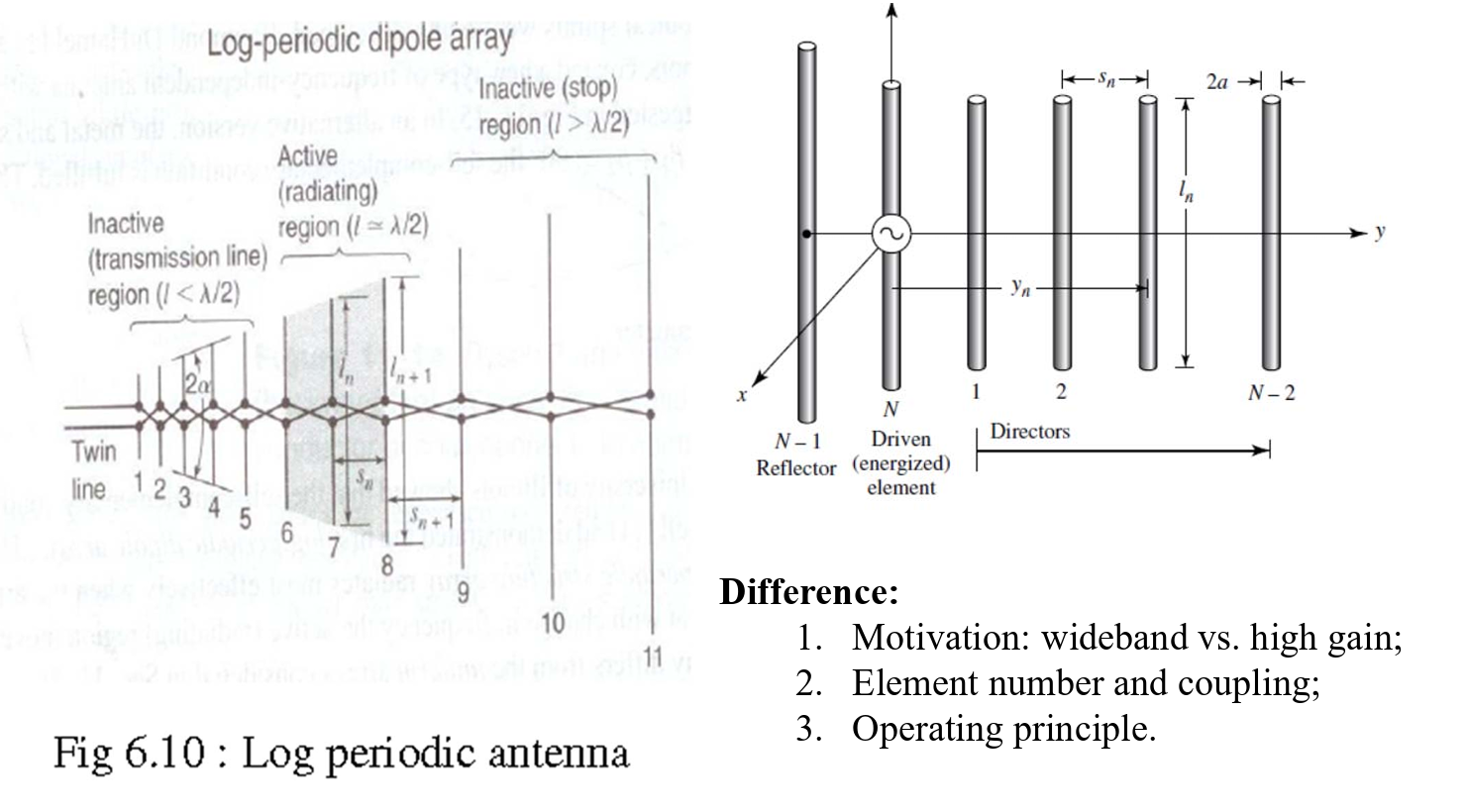
Microstrip Antennas
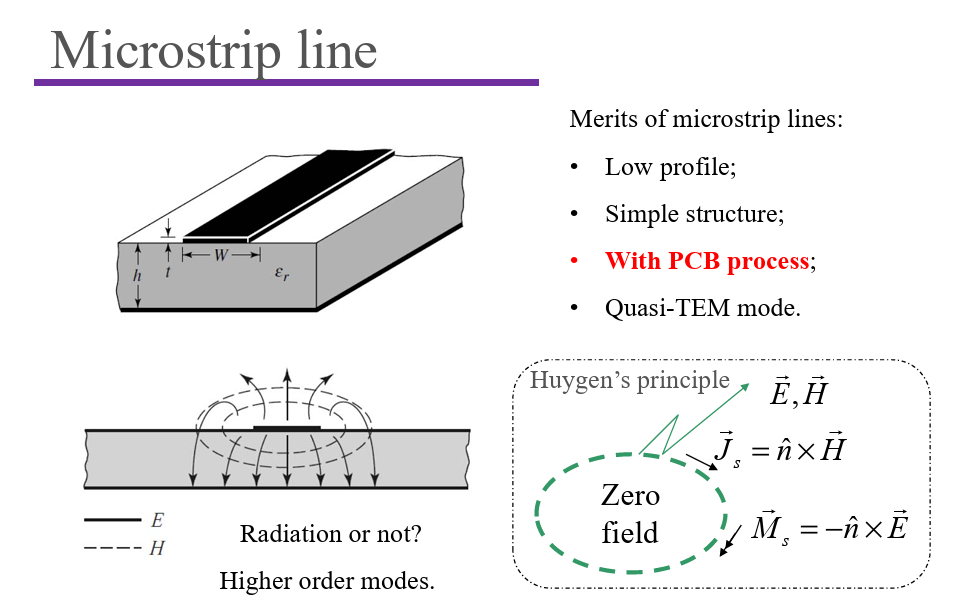
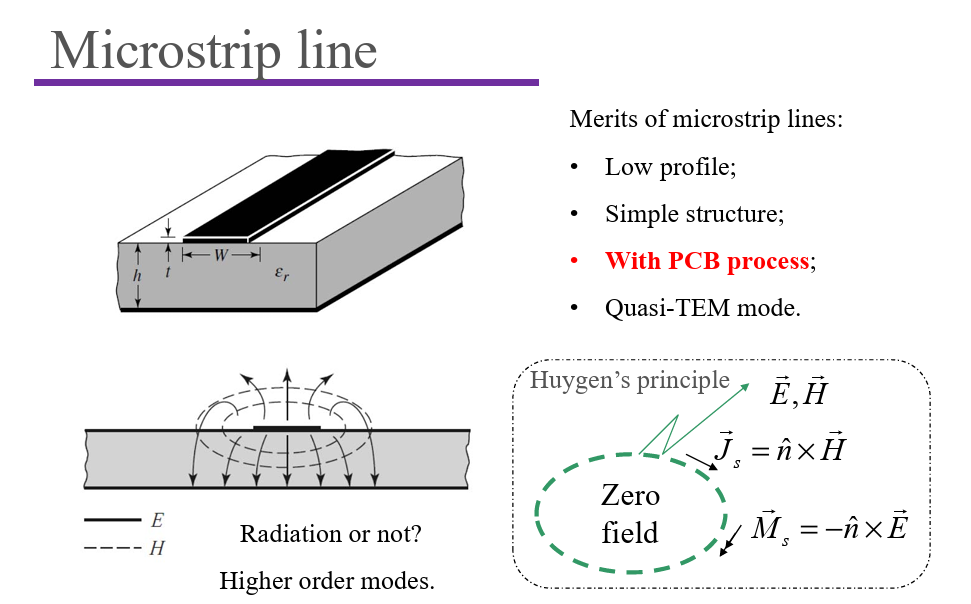
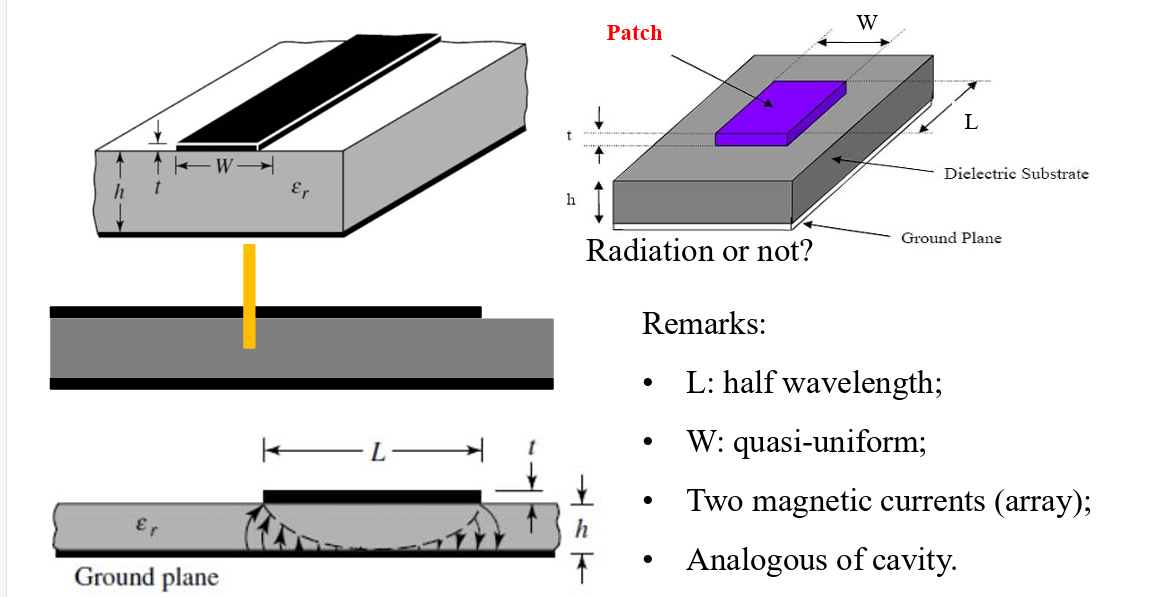
Basic Mode
- Equivalent magnetic current;
- Radiating and non-radiating apertures;
- Operating frequency with different L.
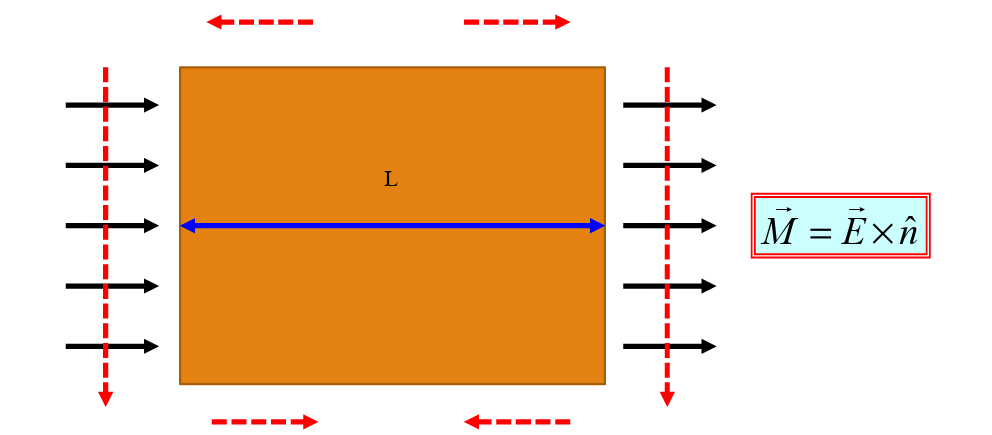
- Magnetic current array;
- Image theorem from infinite ground;
- Cavity model with magnetic walls;
- Different from


Antenna feeding methods
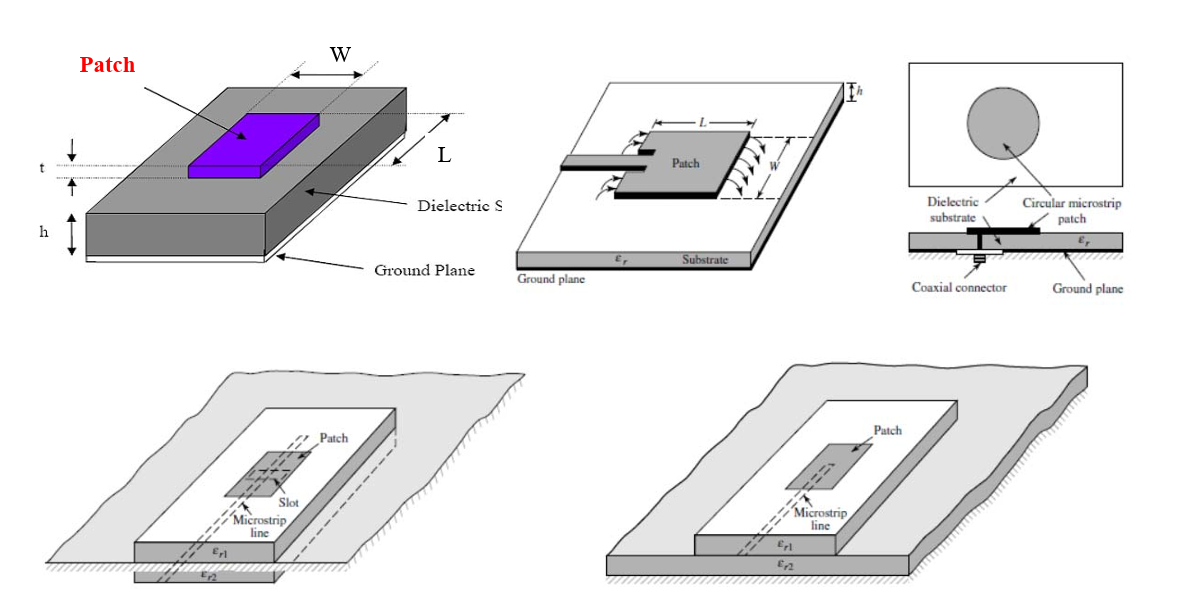
Impedance Matching:
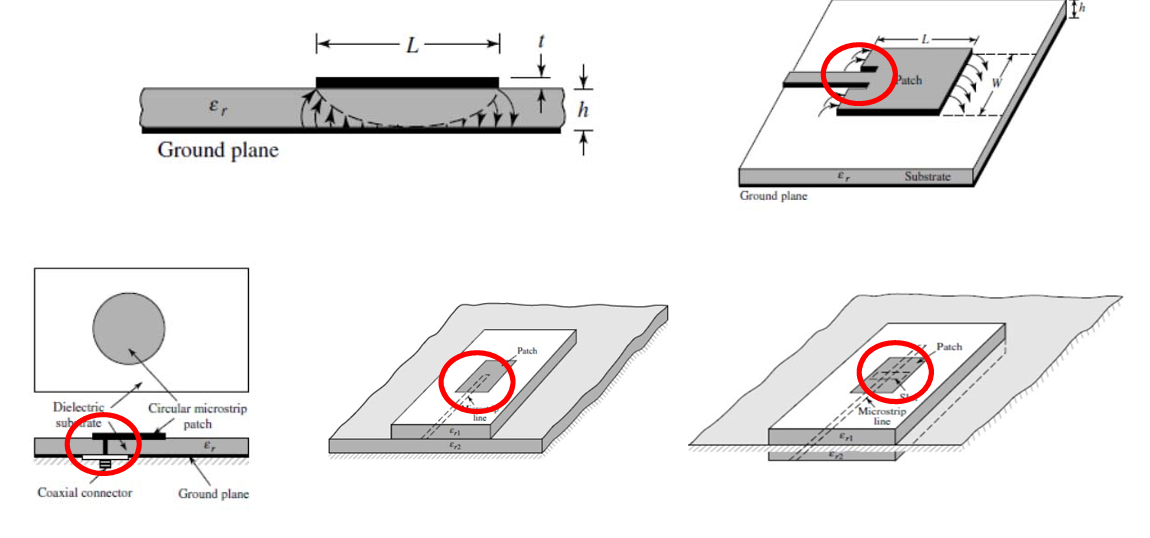
Using 50-Ohm port: finding the position with Z_in=50 Ohm
Analysis Model
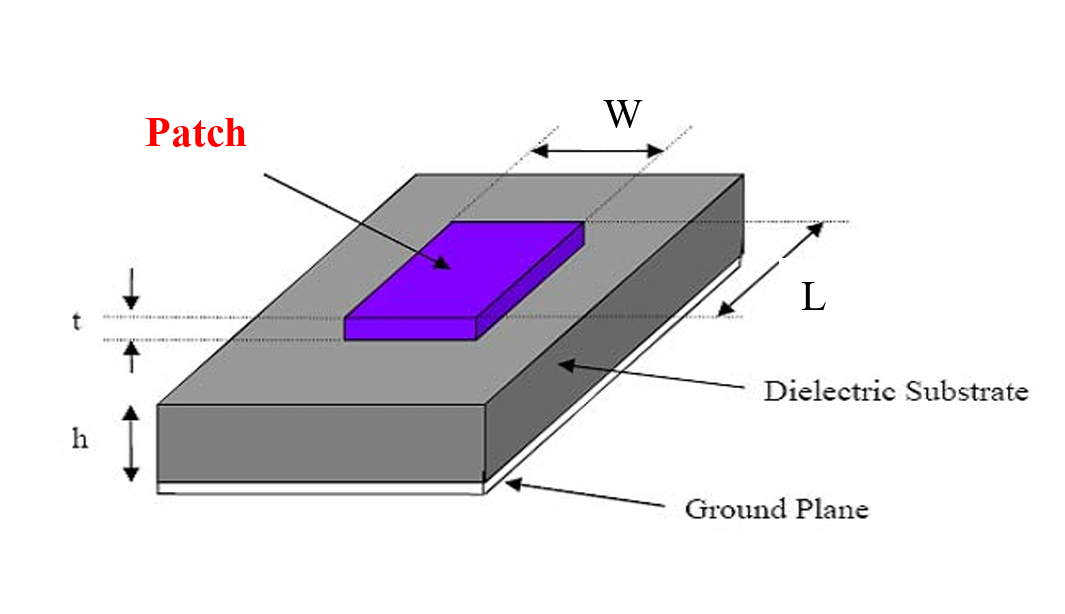
Known:
- Operating Frequency
- Dielectric: $\varepsilon_r$ and $h$
- Metal: $t$
Design:
- Patch: $L$ and $W$
- Evaluate gain
2 Models:
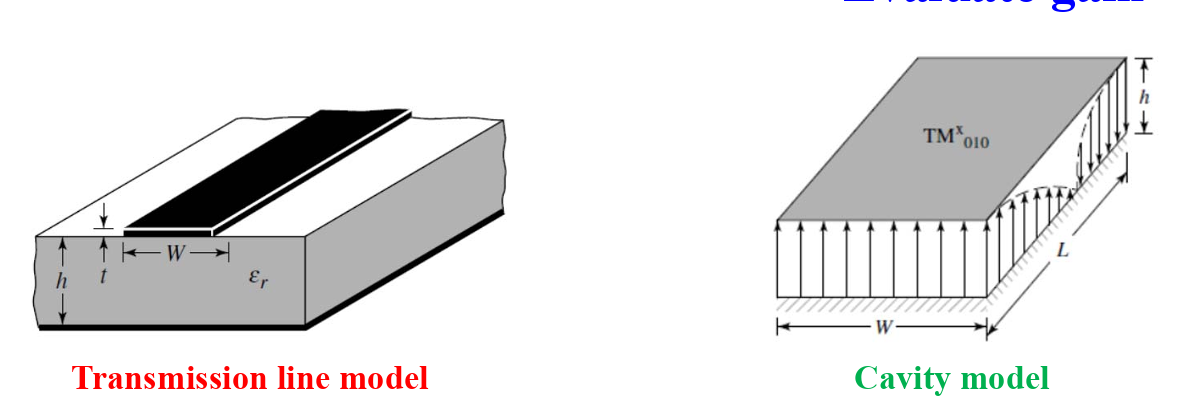
Transmission line model
determine W
Uniform distribution and field intensity in dielectric
Effective permittivity
Fring effect and determine L
impedance matching
Cavity Model
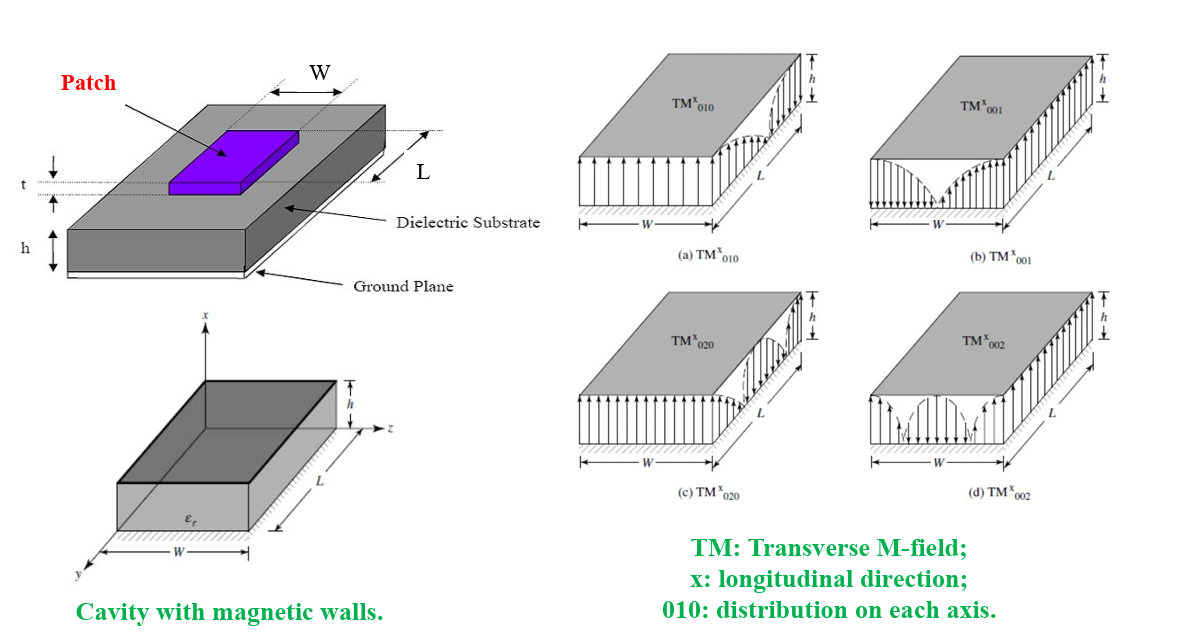
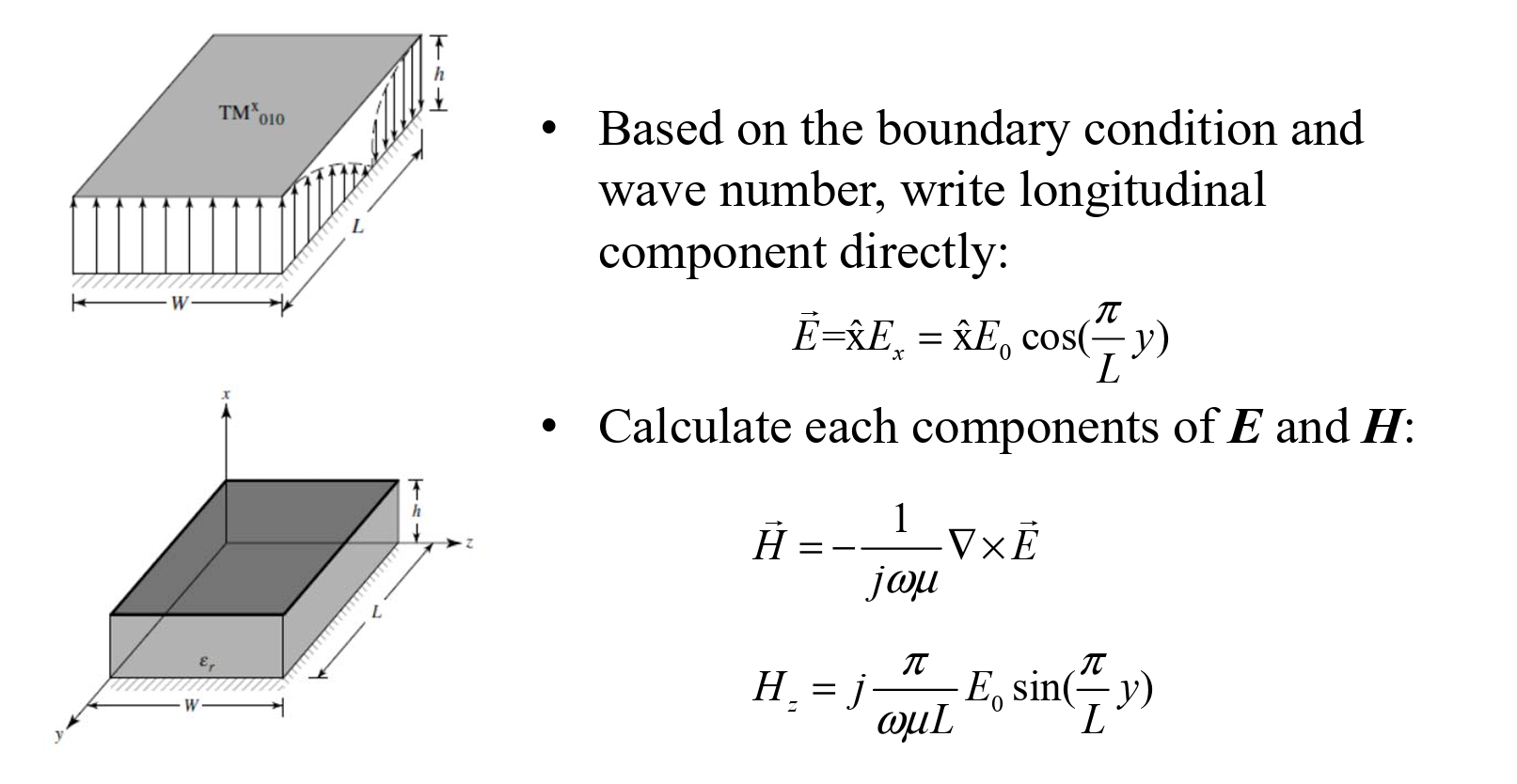
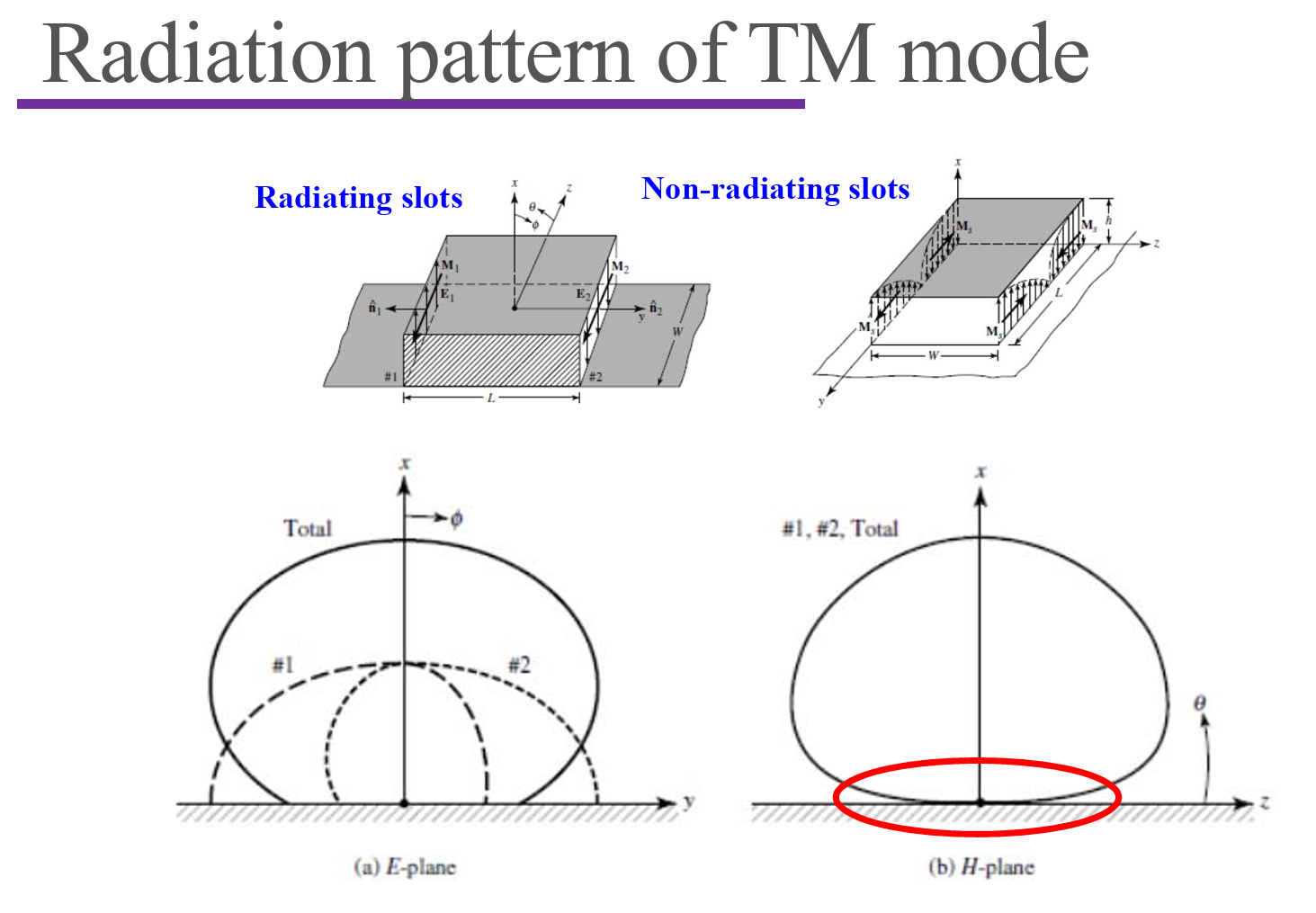
Circular polarization
Dual feed patch
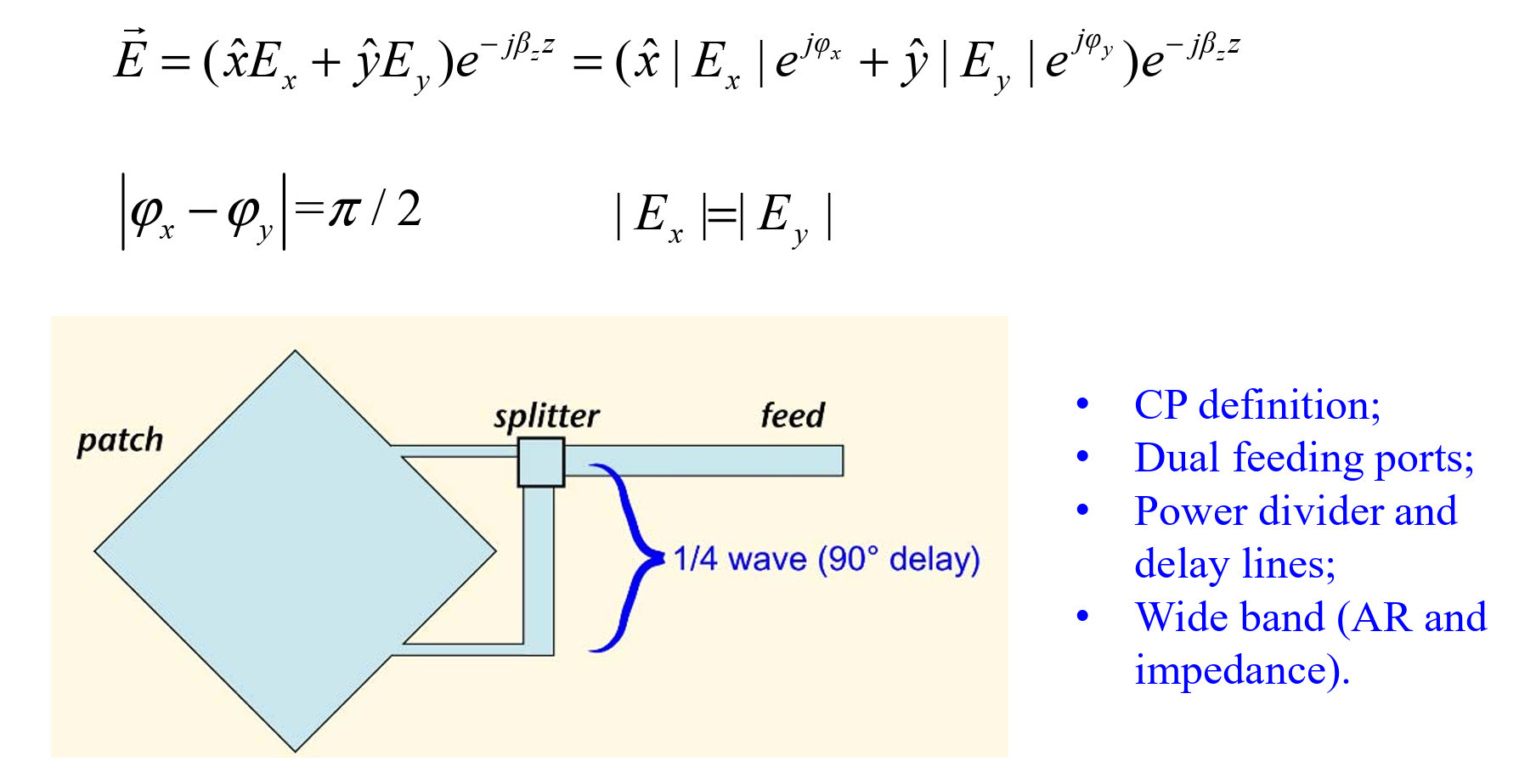
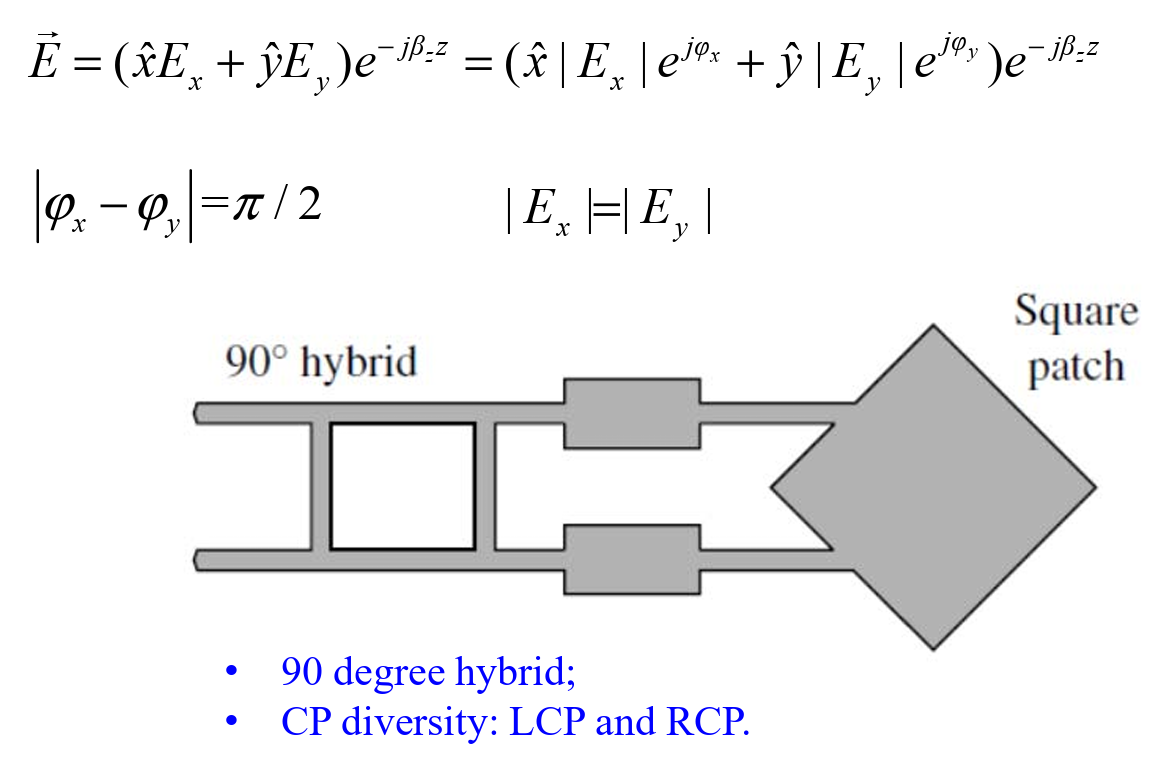
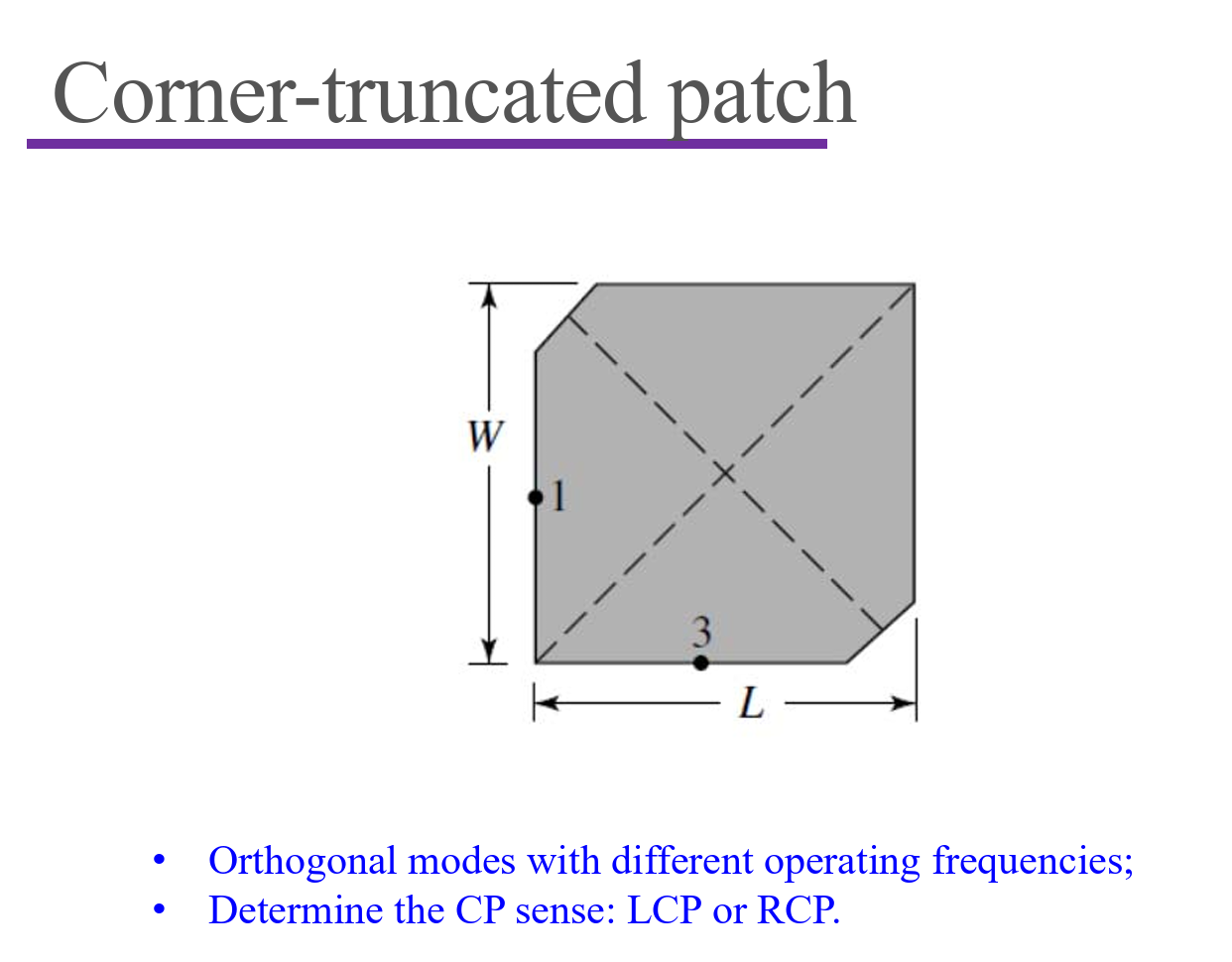
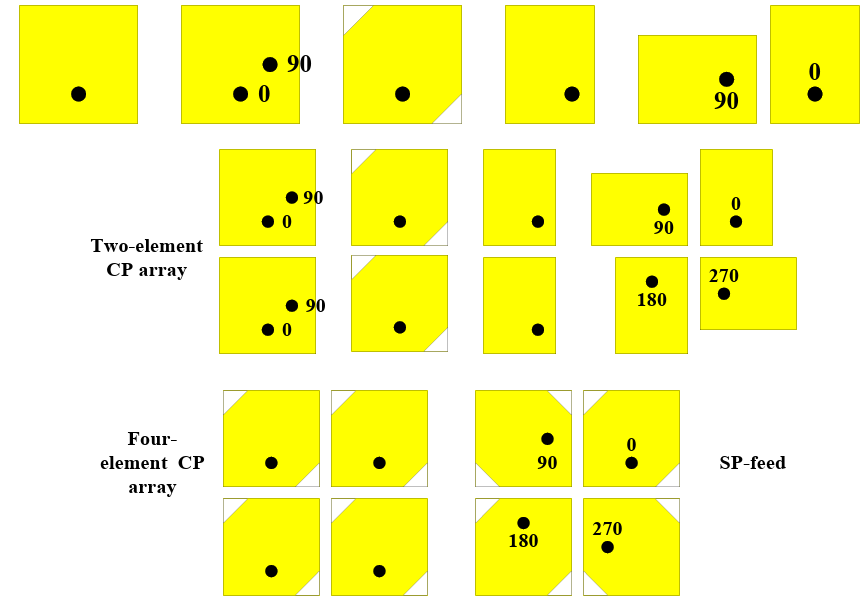
SP-feed 旋转馈电
Reflector and lens antennas
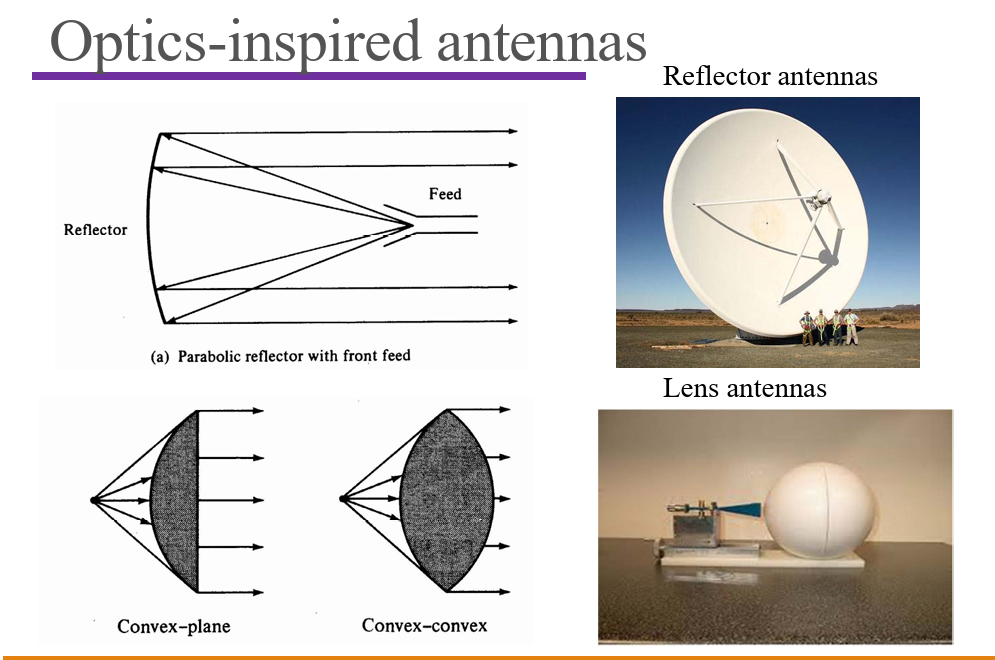
Corner Reflectors
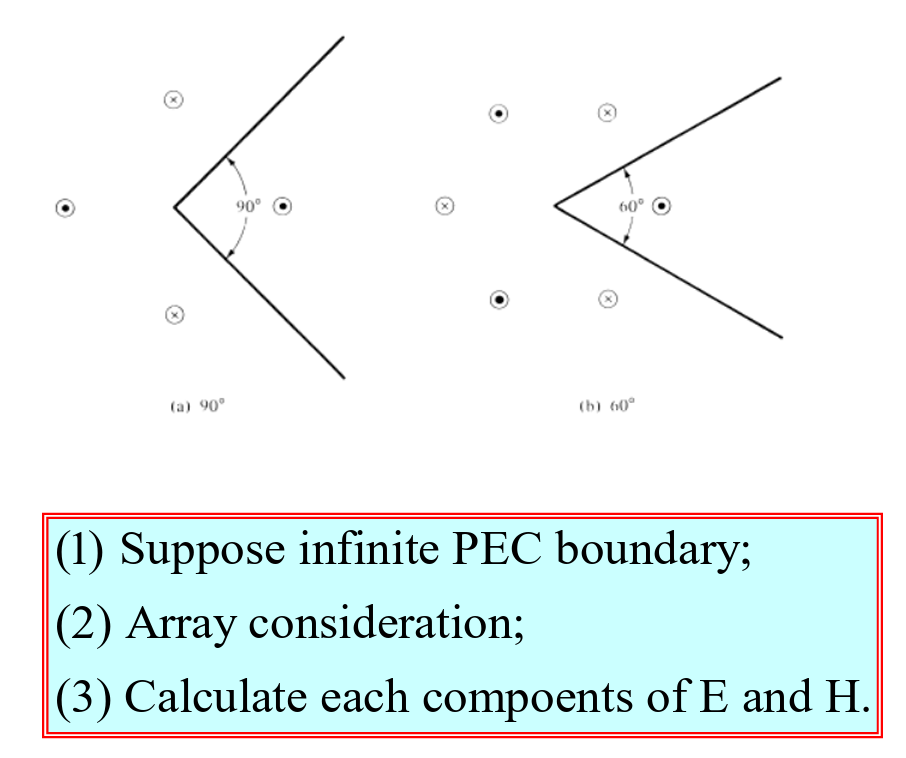
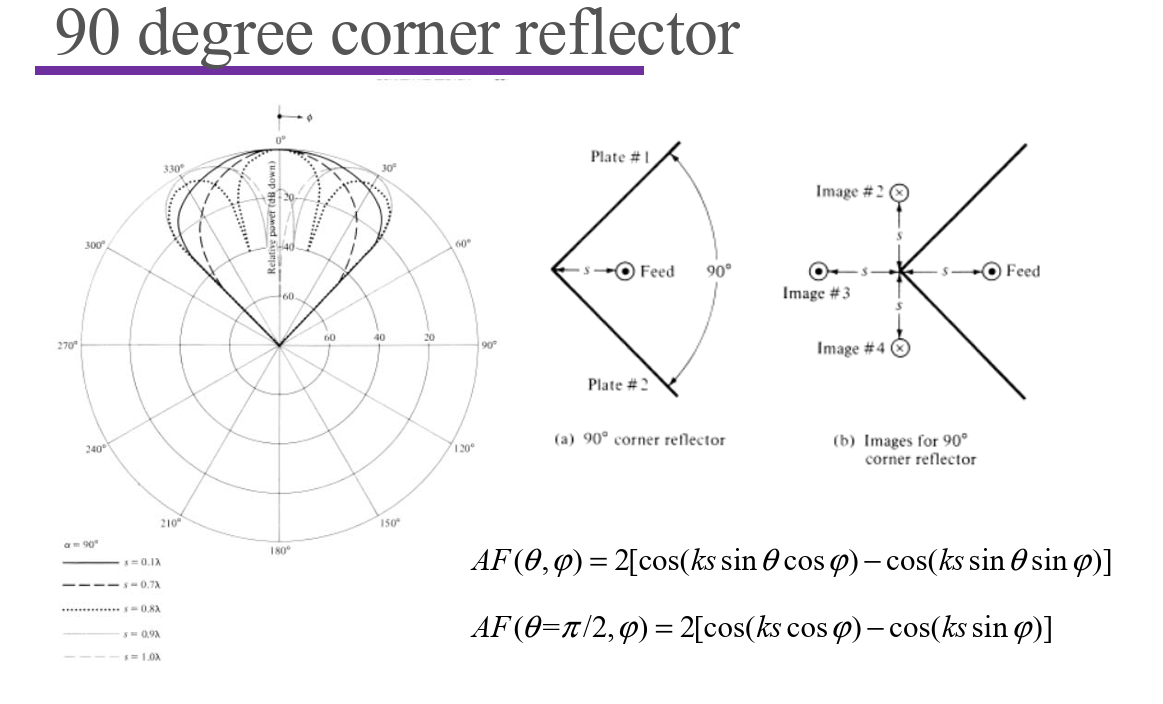
Parabolic Reflectors
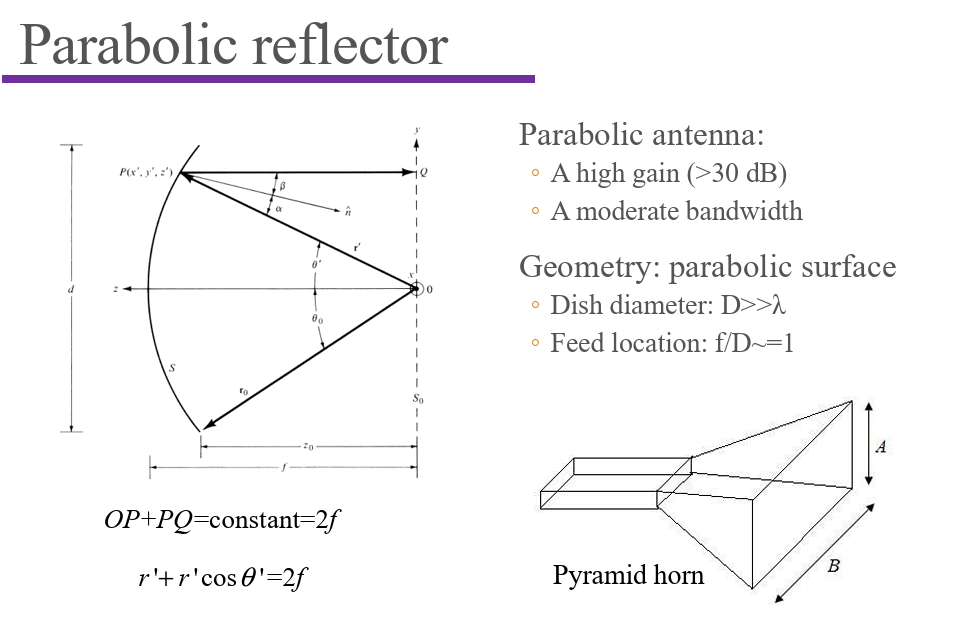
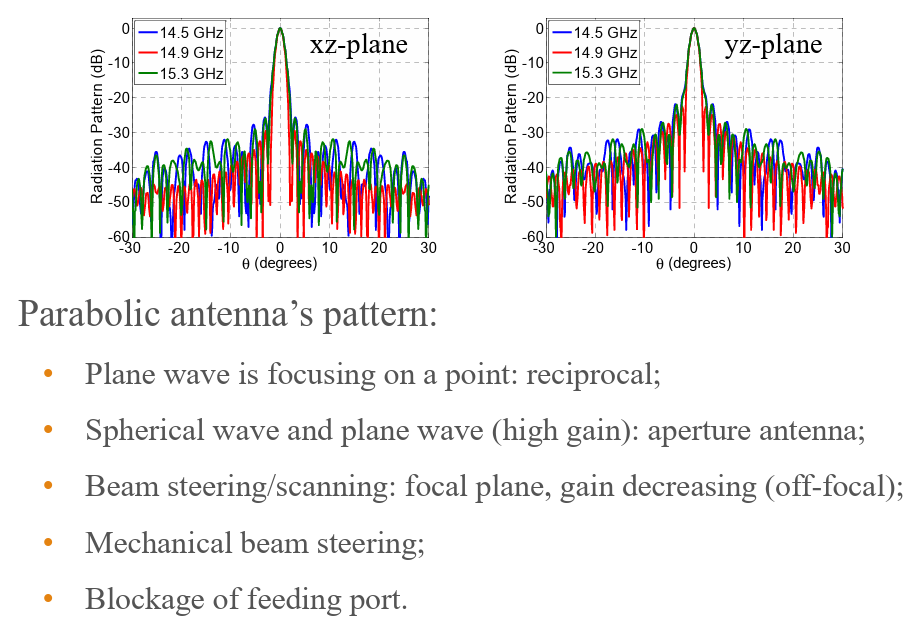
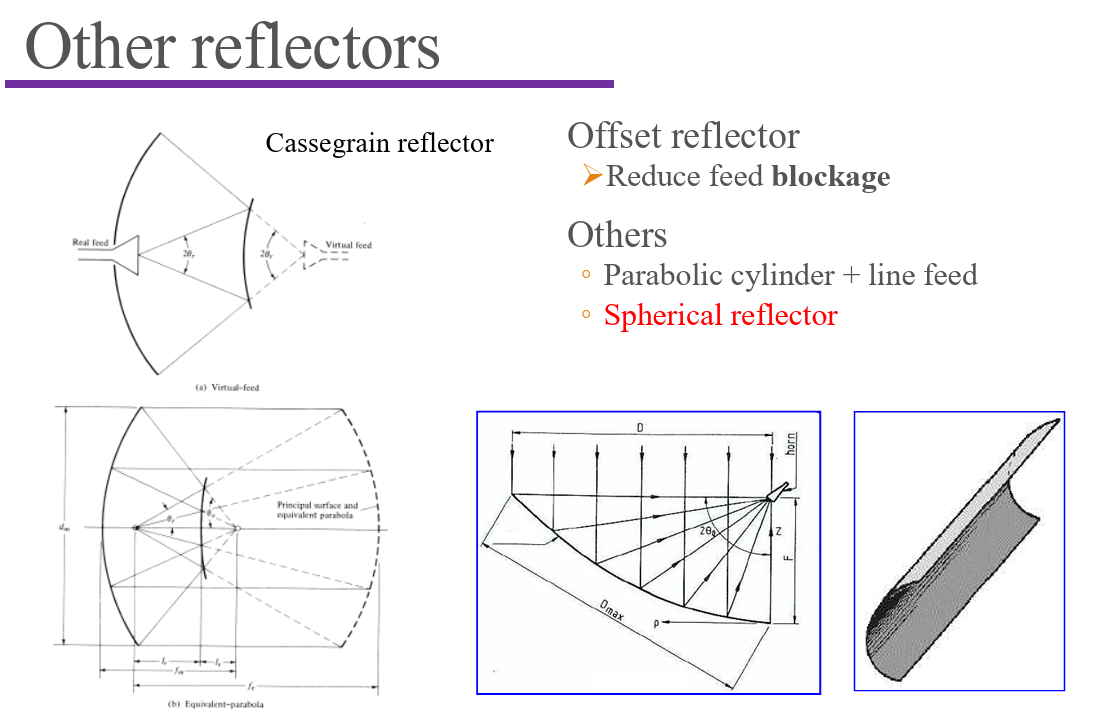
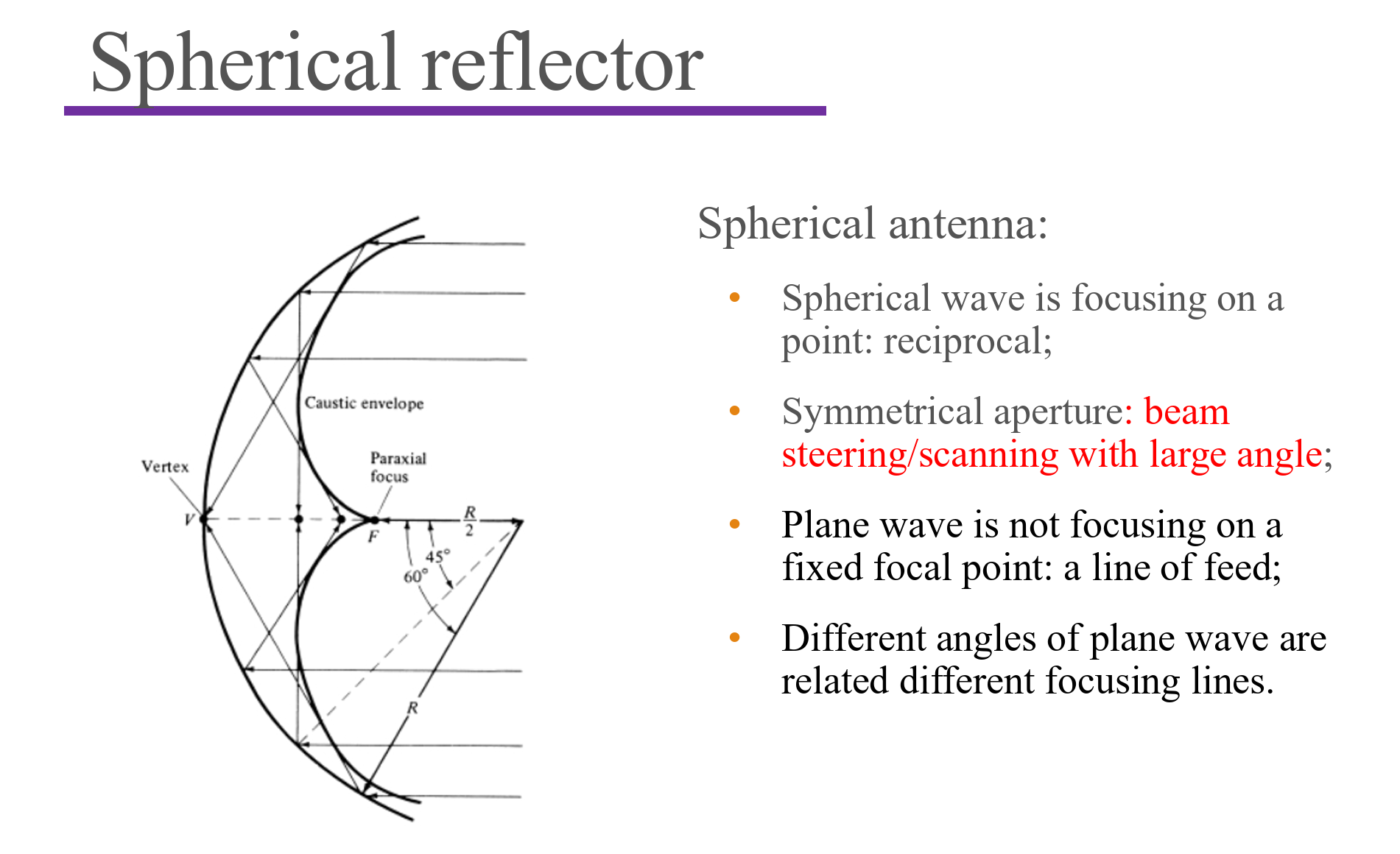
Lens Antennas
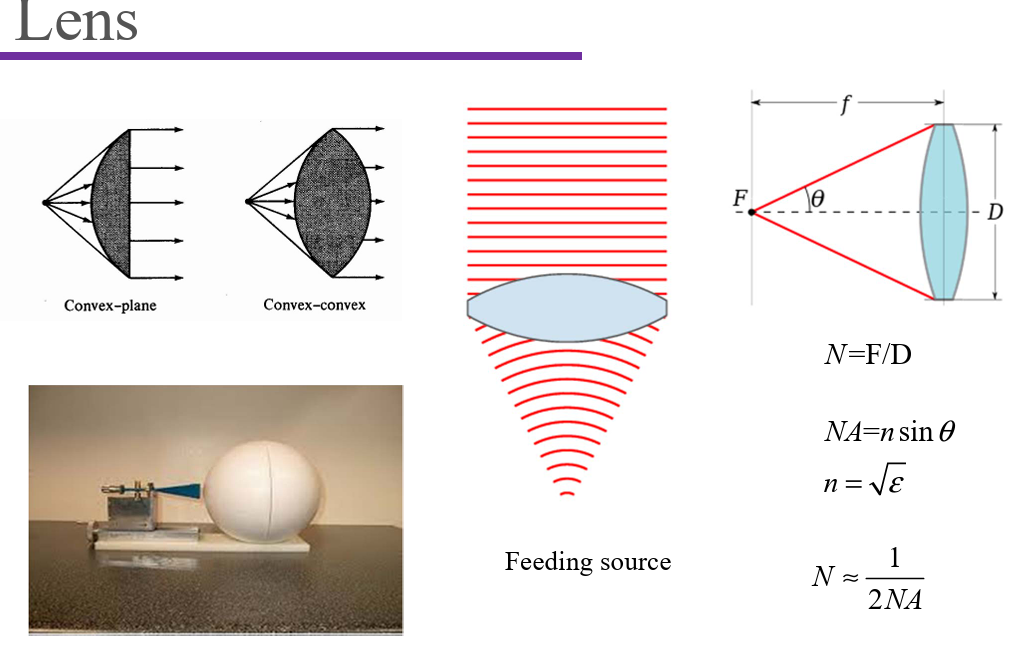
Lens antennas:
- High gain: plane wave;
- Geometrical optics: equal optical distance;
- Source: spherical wave, illuminate the whole lens;
- Source is positioned on the focal point for normal
radiated plane wave; - Other incident/radiated angle of plane wave: focus on
the focal plane with gain decrease; - Spatial Fournier Transformation: (x, y)&k
Reflected and transmitted array
